simactanningtech.it ARSTANNERY 03
LEATHER UPHOLSTERY - TECHNOLOGY PREVIEW - NEW CHEMICALS ISSN 2531-9620 ARSTANNERY1° SUPPLEMENTO AD ARSUTORIA 480GIUGNO 2023 POSTE ITALIANE S.p.A.SPEDIZIONE IN A.P.AUT. MBPA/LO-NO/049/A.P./2017 ART.1 COMMA1LO/MI BIGAGLI
SILVACHIMICA

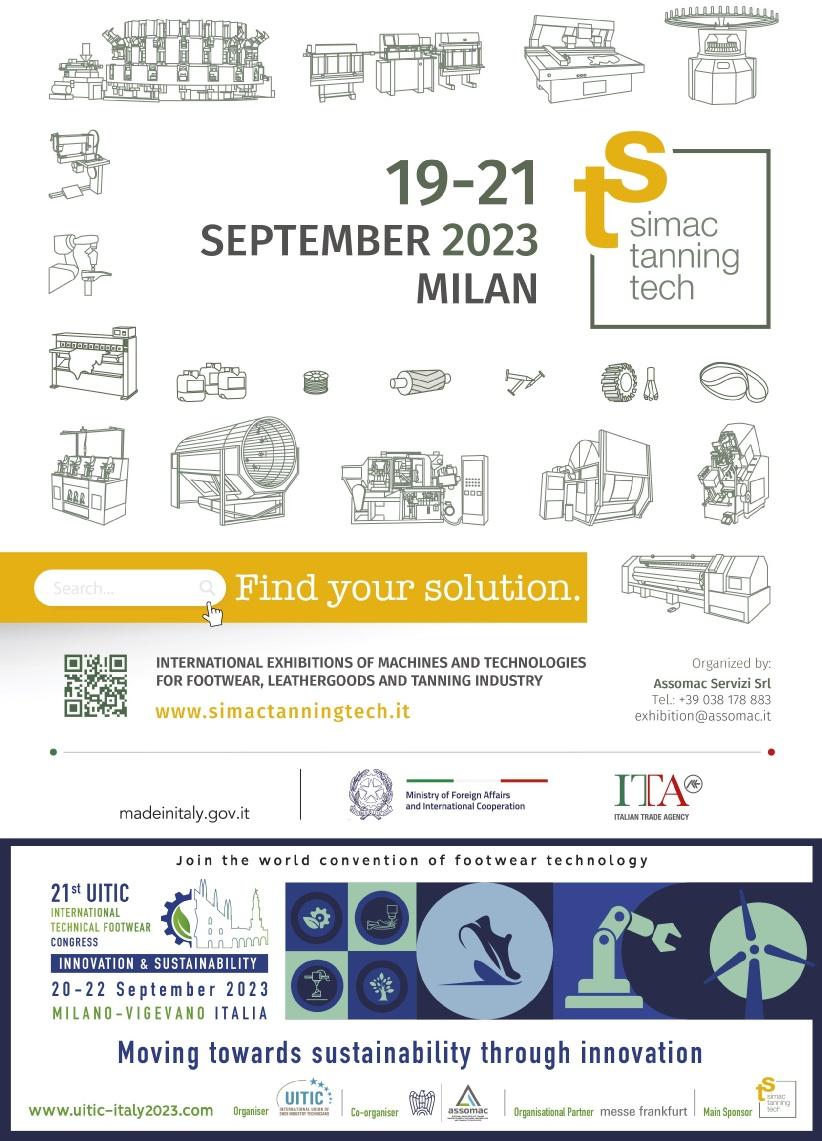
ASSOMAC_SERVIZI

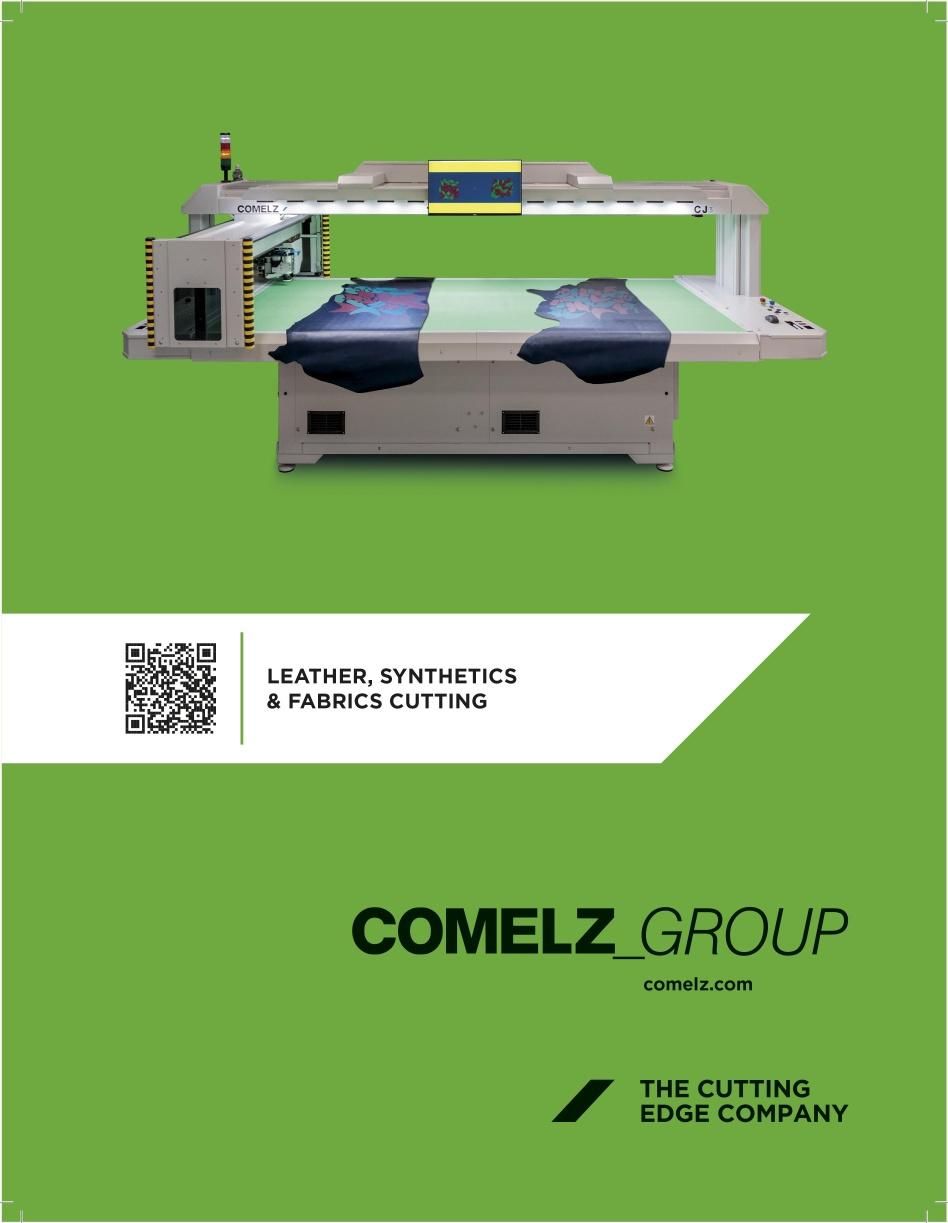


Send an e-mail to: arsutoria@edizioniaf.com

to receive a link and read the next issues of ARS TANNERY online for free
ARSTANNERY
Direttore Responsabile
Matteo Pasca
Editorial
Erika Alberti
Emanuela Cecchetti
Alessandro Dorio
Enrico Martinelli
Sara Meneghetti redazione@edizioniaf.com
Digital
Alessandro Capuzzi
Domiziana Desantis
Davide Tufano digital@edizioniaf.com
Pr & Marketing
Mariella Catalano
Mariel Cuba marketing@edizioniaf.com
Advertising
Filippo Crepaldi
Giorgio Gori
Lucio Luiselli
Stefano Migliavacca adv@edizioniaf.com
Operations
Massimo Ledda
Elisa Trasi
Andrea Zampieri operations@edizioniaf.com
Printing
New Everprint neweverprint.it
ARSTANNERY - 1° SUPPLEMENTO AD ARSUTORIA 480 - JUNE 2023
Poste Italiane Spa – Spedizione in abbonamento postale – Autorizzazione MBPA/ LO-NO/049/A.P./2017 ART.1 COMMA1 – LO/MI.
Direttore Responsabile Matteo Pasca © Copyright 1967
Tutti i diritti di proprietà artistica e letteraria sono riservati. È assolutamente vietata la riproduzione totale o parziale di articoli, disegni e fotografie, in qualsiasi forma e modo, sia analogico che digitale, anche citandone la fonte, senza espressa autorizzazione della casa editrice. Ogni abuso sarà perseguito a norma di legge
All artwork and copyrights are reserved. Total or partial reproduction is absolutely forbidden of articles, designs and photographs in any form, either analogical or digital, even if stating the source, without the express permission of the publishing house. Any abuse will be punished by law.
ISSN 2531-9620
Le inserzioni pubblicitarie sono pubblicate sotto la totale responsabilità del committente; la casa editrice non si assume alcuna responsabilità per il loro contenuto. Per ogni contestazione si rimanda all’indirizzo del committente pubblicato sulla sua stessa pagina pubblicitaria o, in mancanza, in fondo alla rivista. Adverts are published at the full responsibility of the client; the publishing house does not accept any responsibility for the contents. All notifications must be referred to the advertiser, whose address can be found either printed on his advertising page or, if this is not the case, in the end of the magazine.
Ai sensi dell’articolo 2 comma 2 del Codice di deontologia relativo al trattamento dei dati personali nell’esercizio dell’attività giornalistica, si rende nota l’esistenza di una banca-dati personali di uso redazionale presso la sede di Milano, via Ippolito Nievo 33. Gli interessati potranno rivolgersi al responsabile del trattamento dei dati Ing. Matteo Pasca presso la sede di Milano, via Ippolito Nievo 33, per esercitare i diritti previsti dal D.L.GS. 30 giugno 2003, n.196
Pg. 08 New location for Prossimapelle on June 22 in Castelfranco di Sotto
Pg. 12 Quantifying the Bio basis of materials is now possible
Pg. 25 Simac Tanning Tech
19-21 September 2023 - Preview
Pg. 26 Reinvigorating the Italian model
Pg. 28 Italian industrial mechanics for manufacturing back at center stage internationally
Pg. 30 From September 19 to 21, the appointment with Simac Tanning Tech
Pg. 32 UITIC International Footwear Congress: new ideas, discoveries and applications in footwear sustainability and innovation
Pg. 35 Where does technology point for tomorrow's industry?
Pg. 56 APLF DUBAI, Final Act
Pg. 60 Furniture industry finds new impetus at the Salone del Mobile
Pg. 67 Organic waste valorisation towards circular and sustainable biocomposites
CONTENTS
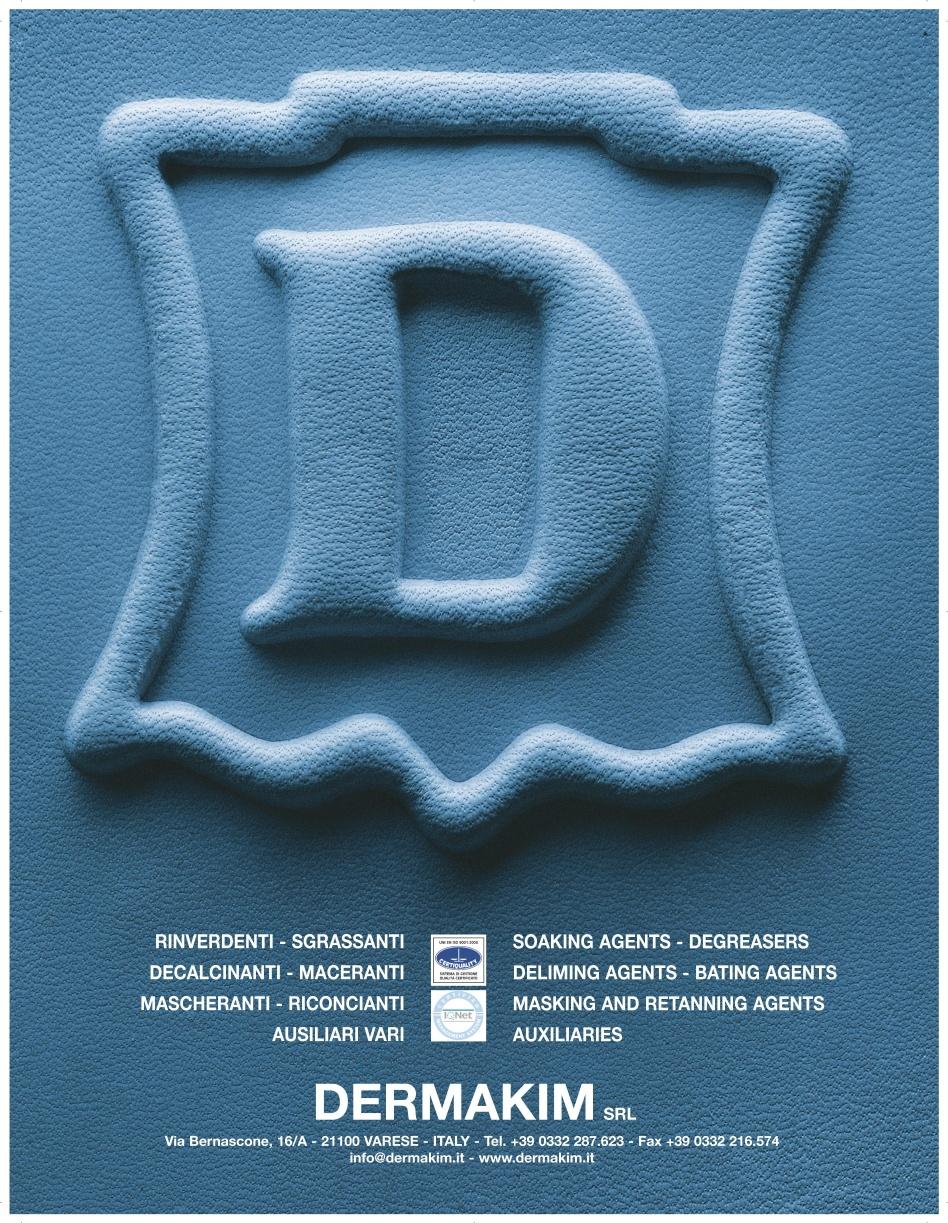
FOCUS ON CHINA WHICH IS READY TO RESTART
After a difficult 2022, China's leather industry is aiming to regain its space in the international market. The main event is with the All China Leather Exhibition (ACLE) in Shanghai from Aug. 29-31, 2023

LA CINA È PRONTA A RIPARTIRE
Dopo un 2022 difficile, l’industria della pelle cinese punta a riconquistare i suoi spazi sul mercato internazionale.
L’appuntamento principe è con la All China Leather Exhibition (ACLE) di Shanghai dal 29 al 31 agosto 2023
Due to pandemic-related restrictions and the Zero Covid policy, 2022 was a black year for China's leather industry, particularly in terms of the sector's imports whose total value decreased by 12.3 percent from the previous year to a total of $17.2 billion. According to reports from CLIA, the China Leather Industry Association, while exports of leathers and leather products continued to grow (up 19 percent) China's imports of hides, skins and leathers of all types dropped 3.1 percent in value ($1.35 billion) and 6.9 percent in volume (1.21 million tons). The worst changes were in semi-finished leathers, which lost 15.8 percent in volume and 18.3 percent in value, while finished leathers dropped 24 percent and 18.3 percent, respectively. After nearly three years since the start of the pandemic, China finally decided in late December 2022 to remove all measures restricting business and travel, a move long awaited by industry players around the world who see the current year as an opportunity to jumpstart supplies linked to Chinese domestic production. The macroeconomic environment appears quite favorable. The International Monetary Fund (IMF) has revised China's GDP growth outlook for 2023 upward from the 4.4 percent forecast in October to 5.2 percent at the beginning of the year. An important sector for leather demand is the automotive industry, which grew by 2.1 percent to 26.9 million units registered in 2022 (including trucks and buses). According to the China Association of Automobile Manufacturers (CAAM), further growth of 3 percent is expected in 2023. More uncertain is the outlook related to footwear and leather goods, but here, too, domestic demand is expected to evolve positively.
The opportunity to touch on the awakening of the Chinese market is the Shanghai Leather Fair, which restarts after a four-year hiatus since the last edition was held in 2019. The 23rd All China Leather Exhibition (ACLE) is scheduled for August 29-31, 2023, as always at the Shanghai New International Exhibition Centre (SNIEC) in the Pudong Financial District. On display will be the entire supply chain of the leather production process, from suppliers of leather and tannery chemicals to manufacturers of tannery machinery.
Successfully organized by APLF Ltd and China Leather Industry Association (CLIA) since 1998, in its last editions ACLE attracted about 23,000 buyers, most of them (about 19,000) from China's major producing provinces. With a combination of domestic and international exhibitors, ACLE has become the leading sourcing fair in China.
A causa delle restrizioni legate alla pandemia e alla politica Zero Covid, il 2022 è stato un anno nero per l’industria della pelle cinese, in particolare per quanto riguarda le importazioni del settore il cui valore complessivo è diminuito del 12,3% rispetto all'anno precedente per un totale di 17,2 miliardi di dollari. Secondo quanto riferito da CLIA, l’associazione della pelle cinese, mentre le esportazioni di pelli e prodotti in pelle hanno continuato a crescere (+19%) l’import cinese di pelli di tutti i tipi è calato del 3,1% in valore (1,35 miliardi di dollari) e del 6,9% in volume (1,21 milioni di tonnellate). Le variazioni peggiori riguardano le pelli semilavorate che hanno perso il 15,8% in volume e il 18,3% in valore, mentre quelle finite hanno fatto registrare un calo rispettivamente del 24% e del 18,3%.
Dopo quasi tre anni dall'inizio della pandemia, alla fine di dicembre 2022 la Cina ha finalmente deciso di rimuovere tutte le misure di restrizione alle attività e ai viaggi, una mossa a lungo attesa dagli operatori del settore di tutto il mondo che vedono nell’anno in corso l’opportunità di far ripartire di slancio le forniture legate alle produzioni interne cinesi. Il contesto macroeconomico appare abbastanza favorevole. Il Fondo Monetario Internazionale (FMI) ha rivisto al rialzo le prospettive di crescita del PIL cinese per il 2023, passando dal 4,4% previsto a ottobre al 5,2% di inizio anno. Un settore importante per la domanda di pelle è l'industria automobilistica, cresciuta del 2,1% fino a 26,9 milioni di unità immatricolate nel 2022 (compresi camion e autobus). Secondo la China Association of Automobile Manufacturers (CAAM) si prevede un'ulteriore crescita del 3% nel 2023. Più incerte le prospettive legate alla calzatura e alla pelletteria ma anche qui la domanda interna dovrebbe evolversi positivamente.
L’occasione per toccare con mano il risveglio del mercato cinese è rappresentata dalla fiera della pelle di Shanghai che riparte dopo una pausa di quattro anni dall'ultima edizione, tenutasi nel 2019. La 23.a edizione della All China Leather Exhibition (ACLE) è programmata dal 29 al 31 agosto 2023, come sempre presso lo Shanghai New International Exhibition Centre (SNIEC), nel distretto finanziario di Pudong. In mostra l'intera catena di fornitura del processo di produzione della pelle, dai fornitori di pelli e prodotti chimici per la conceria ai produttori di macchinari per conceria. Organizzata con successo da APLF Ltd e da China Leather Industry Association (CLIA) sin dal 1998, nelle sue ultime edizioni ACLE richiamava circa 23.000 buyers, la maggior parte dei quali (circa 19.000) provenienti dalle principali province produttrici della Cina. Grazie alla combinazione di espositori nazionali e internazionali, l'ACLE è diventata la principale fiera di sourcing in Cina.
6 ARSTANNERY FAIRS
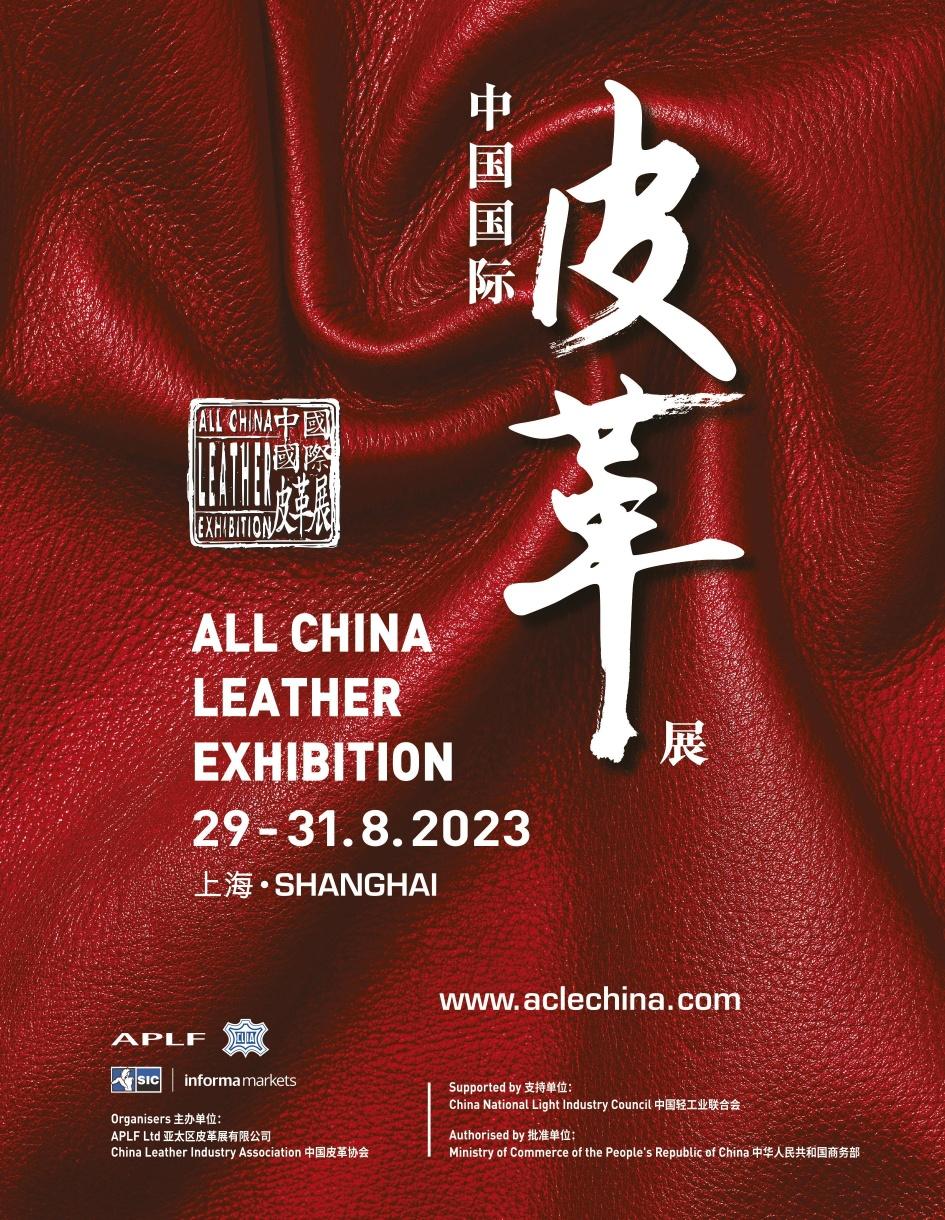
NEW LOCATION FOR PROSSIMAPELLE ON JUNE 22 IN CASTELFRANCO DI SOTTO

UNPAC tanning chemists' event dedicated to the AW 24.25 season will be held at Villa Cerrini Montefalcone
NUOVA LOCATION PER PROSSIMAPELLE IL 22 GIUGNO A CASTELFRANCO DI SOTTO
La manifestazione dei chimici conciari organizzata da UNPAC e dedicata alla stagione AW 24.25 si terrà presso la Villa Cerrini Montefalcone
Villa Cerrini Montefalcone is the new location chosen by UNPAC for the Tuscan edition of Prossimapelle, the event for tanning chemists and mechanics. A new venue that has inspired a different format, made up of marquees set up outdoors to convivially welcome visitors, who will be able to view fashion and technical items displayed on tables arranged in a serpentine pattern. "Characterized by a unique and elegant design, these marquees are reminiscent of the classic Arab tent used to shelter from sun, heat, rain and wind: a practical and original cover that allows endless configurations with different setup possibilities, with open or closed tent on one or more sides," they explain from UNPAC. An innovative concept, then, designed "to invite tanners and tannery technicians to live an immersive experience, combining the commercial part of presenting trends with a moment of technical discussion of the supply chain."
Chemical companies attending the event will exhibit 12 fashion items developed based on AW 24.25 trends alongside innovative technical leathers developed with proprietary technologies.
In the spirit of sharing the issues of the tanning supply chain, the moment of technical comparison, a historic appointment of Prossimapelle, scheduled at 5:30 p.m. will this time be managed by AICC (Italian Leather Chemists Association) with the presence of heads of the executive committees of ZDHC and LWG, and the involvement of representatives of brands that use Italian leathers in their collections. In the same setting, an aperitif with open bar will be offered at the close of the discussion table.
The Fashion Book AW 24.25 developed exclusively for Prossimapelle TrendLab by MoodSign will be offered to visitors who will be able to use it in the tannery as a reference and work agenda.
Villa Cerrini Montefalcone è la nuova location scelta da UNPAC per l’edizione toscana di Prossimapelle, la manifestazione dei chimici e meccanici conciari. Una nuova sede che ha ispirato un format diverso, fatto da tendostrutture allestite all’aperto per accogliere in modo conviviale i visitatori, che potranno visionare gli articoli moda e tecnici esposti su tavoli sistemati a serpentina. “Caratterizzate da un design unico ed elegante, queste tendostrutture ricordano la classica tenda araba utilizzata per ripararsi da sole, caldo, pioggia e vento: una copertura pratica e originale che permette configurazioni infinite e con diverse possibilità di setup, con tenda aperta o chiusa su uno o più lati” spiegano da UNPAC. Un concept innovativo, dunque, studiato “per invitare conciatori e tecnici di conceria a vivere un’esperienza immersiva, che abbina la parte commerciale di presentazione delle tendenze con un momento di confronto tecnico della filiera”.
Le aziende chimiche presenti all’evento esporranno 12 articoli moda sviluppati sulla base delle tendenze AW 24.25 a fianco di innovativi pellami tecnici sviluppati con tecnologie proprietarie.
Nello spirito di condivisione delle tematiche della filiera conciaria, il momento di confronto tecnico, storico appuntamento di Prossimapelle, programmato alle 17.30 verrà questa volta gestito da AICC (Associazione Italiana Chimici del Cuoio) con la presenza di responsabili dei comitati esecutivi di ZDHC e LWG, ed il coinvolgimento di esponenti dei brand che nelle loro collezioni utilizzano pellami italiani.
Nello stesso ambiente, a chiusura del tavolo di confronto sarà offerto un aperitivo con open bar.
Il Book Moda AW 24.25 sviluppato in esclusiva per Prossimapelle TrendLab da MoodSign verrà offerto ai visitatori che potranno utilizzarlo in conceria come riferimento e agenda di lavoro.
PROGRAMMA PROSSIMAPELLE 22 giugno 2023
Ore 14.00
Ore 17.30
Ore 19.30
Ore 20.45
Ore 22.30
• Inaugurazione di PROSSIMAPELLE
Percorso nelle proposte AW 24.25 delle aziende chimiche
• AICC - Tavolo di Confronto della filiera
con Delegati di ZDHC e LWG e di brand collegati
• Aperitivo - momento conviviale
tra le proposte AW 24.25
• Cena a buffet
• Chiusura evento Consegna dei Book Moda ai visitatori
8 ARSTANNERY NEWS
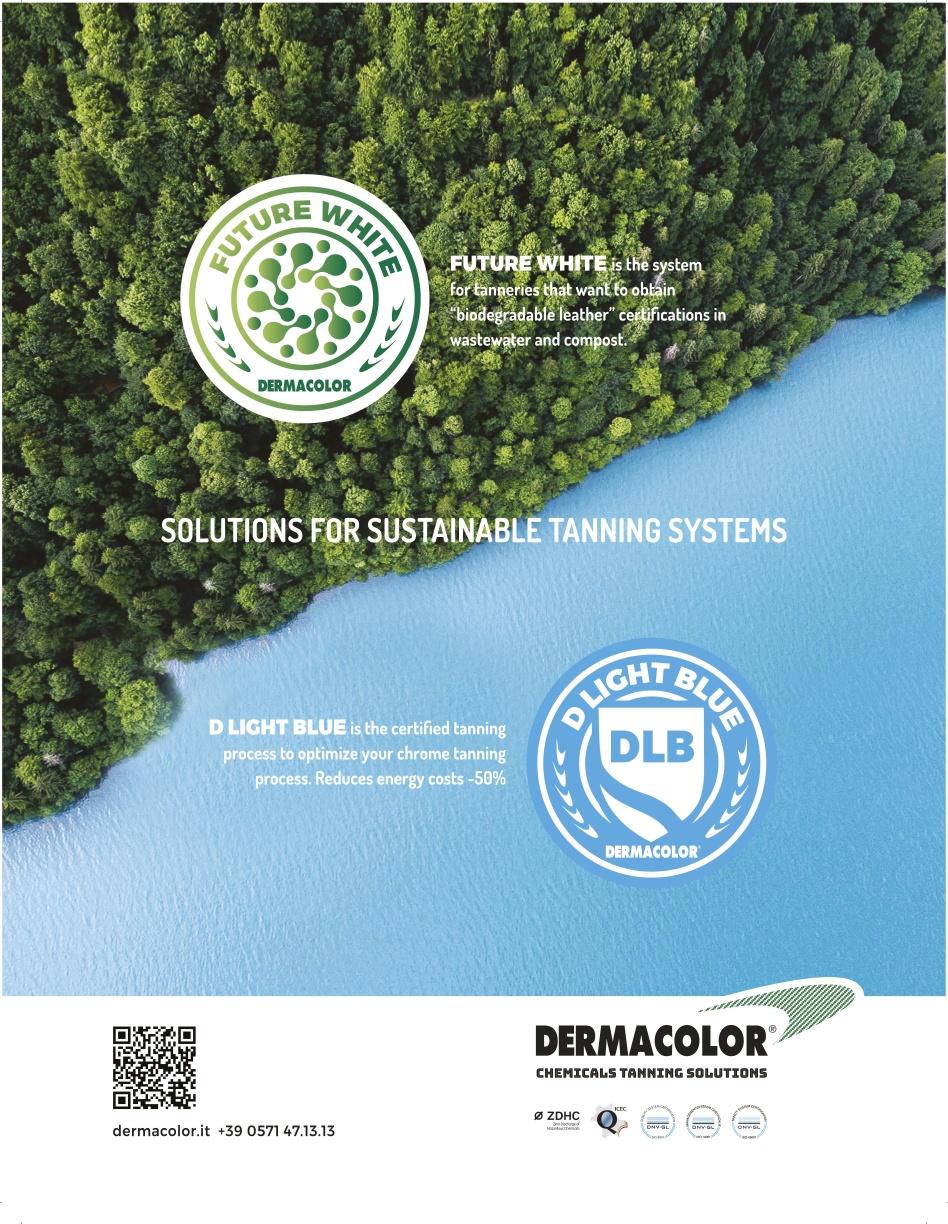
LEATHER RESEARCH INSTITUTE MEETS WITH ENTERPRISES IN THE VENETO DISTRICT
A technical meeting aimed at transferring the most relevant developments of Research in the tanning sector, and the main results that have emerged from the activities carried out by SSIP (Italian Leather Research Institute), was held last May 3 at the headquarters of Confindustria di Vicenza in Montecchio Maggiore (VI), in order to develop technological advancements of greater potential interest for the sector.
The works, introduced by Mirko Balsemin, President of the Tanning Section of Confindustria Vicenza, saw the technical-scientific delegation of the Experimental Station present the main results of the research, innovation and technology transfer activities obtained in recent years as well as future developments related to the main technological drivers of the sector: new sustainable formulations for the tanning process, development of innovative leathers with high added value, waste treatment and new circular materials, advanced approaches /4. 0 for product and process monitoring, wastewater treatment and tanning sludge valorization, and solutions for measuring the environmental impact of production.
The meeting was attended by representatives of the district's tanning companies, academia (University of Padua and Ca' Foscari University), trade associations of interest to the tanning industry, as well as representatives of purification districts, analytical laboratories, and chemical companies, as well as experts in cross-cutting sectors with expertise in machinery, processes, and digital approaches, and was an opportunity to open joint reflections on the synergies to be activated to promote sustainable innovation in the sector. It was an opportunity for all to initiate a concrete collaboration network to bring research within the reach of business, as well as to build a range of qualified services to respond dynamically to the multiple needs of the sector.
Present at the meeting were, among others, the vice president of the Confindustria Vicenza Tanning Section, Bernardo Finco with Vittorio Margoni; the president and director of the Leather District, Riccardo Boschetti and Matteo Macilotti, respectively; the director of Acque del Chiampo Spa Umberto Rizzato; Cav. Giancarlo Dani of Gruppo Dani; and a number of researchers from the Universities of Padua and Ca' Foscari Venezia. Present for the SSIP delegation were Gianluigi Calvanese, Claudia Florio and Marco Nogarole, who developed the aspects inherent to technology transfer; as well as other researchers who are experts in innovation and standardization.
LA STAZIONE PELLI INCONTRA LE IMPRESE DEL DISTRETTO VENETO
Presentati i principali risultati delle attività di ricerca, innovazione e trasferimento tecnologico ottenuti negli ultimi anni. Un’occasione per avviare una rete di collaborazione concreta
Si è svolto lo scorso 3 maggio, presso la sede di Confindustria di Vicenza a Montecchio Maggiore (VI), l’incontro tecnico finalizzato a trasferire i più rilevanti sviluppi della ricerca in ambito conciario, ed i principali risultati emersi dalle attività realizzate dalla SSIP, al fine di sviluppare avanzamenti tecnologici di maggiore potenziale interesse per il settore. I lavori, introdotti da Mirko Balsemin, Presidente della Sezione Concia di Confindustria Vicenza, hanno visto la delegazione tecnico scientifica della Stazione Sperimentale presentare i principali risultati delle attività di ricerca, innovazione e trasferimento tecnologico ottenuti negli ultimi anni nonché gli sviluppi futuri relativi ai principali driver tecnologici di settore: nuovi formulati sostenibili per il processo conciario, sviluppo di cuoi innovativi ad elevato valore aggiunto, trattamento degli scarti e nuovi materiali circolari, approcci avanzati /4.0 per il monitoraggio di prodotto e processo, trattamento delle acque reflue e valorizzazione dei fanghi conciari e soluzioni per la misura dell’impatto ambientale delle produzioni. L’incontro ha visto la partecipazione di rappresentanti delle imprese conciarie del distretto, del mondo accademico (Università di Padova e Università Ca’ Foscari), delle associazioni di categoria di interesse conciario, nonché di rappresentanti dei distretti di depurazione, dei laboratori di analisi, delle imprese di prodotti chimici, oltre che di esperti in settori trasversali, con competenze in materia di macchine, di processi, di approcci digitali, ed ha costituito un’occasione per aprire riflessioni congiunte sulle sinergia da attivare per promuovere l’innovazione sostenibile del settore. Per tutti un’occasione per avviare una rete di collaborazione concreta, per portare la ricerca più vicino alle impresa, nonché per costruire una gamma di servizi qualificati e rispondere in maniera dinamica alle molteplici esigenze del settore.
All’incontro erano presenti tra gli altri, il vice presidente della Sezione Concia di Confindustria Vicenza, Bernardo Finco con Vittorio Margoni, il presidente e il direttore del Distretto della Pelle, rispettivamente Riccardo Boschetti e Matteo Macilotti; il direttore di Acque del Chiampo Spa Umberto Rizzato, il Cav. Giancarlo Dani di Gruppo Dani e alcuni ricercatori delle Università degli Studi di Padova e Ca’ Foscari Venezia. Per la delegazione SSIP erano presenti Gianluigi Calvanese, Claudia Florio e Marco Nogarole, che ha sviluppato gli aspetti inerenti al trasferimento tecnologico, oltre ad altri ricercatori esperti in innovazione e normazione.

Presented the main results of research, innovation and technology transfer activities achieved in recent years. An opportunity to start a concrete collaboration network
10 ARSTANNERY NEWS

QUANTIFYING THE BIO BASIS OF MATERIALS IS NOW POSSIBLE
Published by a scientific journal is Gustavo Defeo's study that developed a method that can compare the true sustainability of leather and its vegan alternatives

Scientifically quantifying the Bio basis of leather and alternative materials? Today it is possible. Through scientifically reliable quantification, a true "circular" product can be defined when it uses materials originated from renewable sources, excluding petroleum derivatives as much as possible, through an unambiguous and clear reference scale, regardless of the matrix on which the research is going to be done. Gustavo Defeo, CEO of ARS Tinctoria, has explained this to us on several occasions over the past year, and he has just obtained a new important achievement: the publication of the research project that bears his name-along with those of Federico Carcione, Iacopo Galli, Saverio Bartalini and Davide Mazzotti-in MDPI Coatings, a peer-reviewed journal dedicated to the engineering of surfaces and coatings, thus obtaining the most authoritative form of scientific disclosure. This publication is definitely a step forward for the definition of a cross-sectional method to define, through a certain parameter, what is the carbon content derived from biomass: the measurement of the intrinsic circularity of a material.
The paper titled "Materials' Circularity: A Novel Method for Biobased Carbon Quantification on Leather, Artificial Leather, and Trendy Alternatives" reports the results of research conducted by Ars Tinctoria, CNR-INO (National Institute of Applied Optics and Optics), LENS (European Laboratory of Non-Linear Spectroscopy),
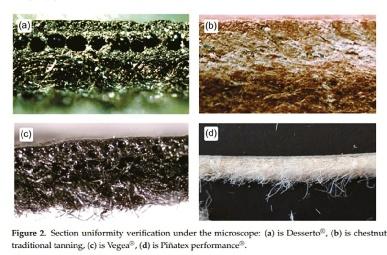
University of Florence, and ppqSense, a company specializing in the design of instrumentation for radiocarbon analysis.
The project, coordinated by Gustavo Defeo, builds on previous research by the FILK Freiberg Institute that flowed into the scientific article "Comparison of the technical performance of leather, artificial leather, and trendy alternatives," published in the same journal (MDPI Coatings 2021, 11, 226) and performed on the same samples, kindly provided by the FILK Institute.
The most significant aspect of Defeo's work lies in having validated a method for determining the Bio origin of materials through the use of a new analytical instrument: the SCAR spectrometer, and the possibility of using it for analysis with the official European method (EN 16640:2017 - standard on the determination of carbon of biological origin in substances, based on the measurement of carbon 14 content).
Different materials and different types of leathers (wet white, chrome tanned, vegetable tanned, etc.) were tested with this method. Out of 23 samples tested it was found that, almost all of those materials containing the words "Organic" or "Vegan" were actually composed mostly of fossil carbon. In practice, the study acknowledges that the naturalness of leather is superior to that of the supposed green alternatives. While the vegetable-tanned leathers, to mention the borderline cases, have a share of bio-
12 ARSTANNERY NEWS
GUSTAVO DEFEO, CEO OF ARS TINCTORIA GUSTAVO DEFEO, CEO DI ARS TINCTORIA
based materials close to 100 percent, some of the alternatives analyzed stop at 25 percent, which means that 75 percent of them are synthetic. In practice, the comparison scientifically demonstrated how much products, promoted as leather alternatives and pseudo-vegans, are largely petroleum-derived materials (for more than 50% of their composition) while leather can touch percentages of 80 to 100% Biobased matter.
QUANTIFICARE LA BASE BIO DEI MATERIALI OGGI SI PUÒ
Pubblicato da una rivista scientifica lo studio di Gustavo Defeo che ha sviluppato un metodo in grado di confrontare la reale sostenibilità della pelle e delle sue alternative vegane
Quantificare scientificamente la base Bio della pelle e dei materiali alternativi? Oggi è possibile. Attraverso una quantificazione scientificamente attendibile, si può definire un vero prodotto “circolare” quando utilizza materiali originati da fonti rinnovabili, escludendo il
più possibile derivati di petrolio, attraverso una scala di riferimento univoca e chiara, a prescindere dalla matrice su cui si va a fare la ricerca. Ce lo ha spiegato a più riprese nell’ultimo anno Gustavo Defeo, CEO di ARS Tinctoria, che ha appena ottenuto un nuovo importante risultato: la pubblicazione del progetto di ricerca che porta il suo nome - assieme a quello di Federico Carcione, Iacopo Galli, Saverio Bartalini e Davide Mazzotti – su MDPI Coatings, rivista peer-reviewed dedicata all’ingegneria delle superfici e dei rivestimenti, ottenendo così la forma più autorevole di divulgazione scientifica. Questa pubblicazione è sicuramente un passo avanti per la definizione di un metodo trasversale che permette di definire, attraverso un parametro certo, quale è il contenuto di carbonio derivato da biomassa: la misura della circolarità intrinseca di un materiale.
L’articolo dal titolo “Materials’ Circularity: A Novel Method for Biobased Carbon Quantification on Leather, Artificial Leather, and Trendy Alternatives” riporta i risultati della ricerca condotta da Ars Tinctoria, CNR-INO (Istituto Nazionale di Ottica e Ottica Applicata), LENS (European Laboratory of Non-Linear Spectroscopy ), Università degli Studi di Firenze e ppqSense, società specializzata nella progettazione di strumentazioni per l’analisi al radiocarbonio.
Il progetto, coordinato da Gustavo Defeo, prende le mosse da una precedente ricerca del FILK Freiberg Institute confluita nell’articolo scientifico “Comparison of the technical performance of leather, artificial leather, and trendy alternatives”, pubblicato sulla stessa rivista (MDPI Coatings 2021, 11, 226) ed eseguito sugli stessi campioni, gentilmente forniti dall’Istituto FILK.
L’aspetto più significativo del lavoro di Defeo sta nell’aver validato un metodo per determinare l’origine Bio dei materiali attraverso l’impiego di un nuovo strumento analitico: lo spettrometro SCAR, e la possibilità di utilizzarlo per le analisi con il metodo ufficiale europeo (EN 16640:2017 – norma sulla determinazione del carbonio di origine biologica nelle sostanze, basato sulla misura del contenuto di carbonio 14).
Con questo metodo sono stati analizzati diversi materiali e differenti tipologie di pellami (wet white, conciate al cromo, al vegetale ecc). Su 23 campioni testati è stato riscontrato che, quasi tutti quelli contenenti la dicitura “Bio” o “Vegan” in realtà erano composti per lo più da carbonio fossile. In pratica lo studio riconosce che la naturalezza della pelle è superiore a quella delle presunte alternative green. Mentre le pelli conciate al vegetale, per menzionare i casi limite, presentano una quota di materiali biologici vicina al 100%, alcune delle alternative analizzate si fermano al 25%, il che significa che per il 75% sono sintetiche. In pratica, la comparazione ha dimostrato scientificamente quanto i prodotti, promossi come alternativi alla pelle e pseudo-vegani, sono in larga parte materiali derivati dal petrolio (per oltre il 50% della loro composizione) mentre la pelle può toccare percentuali dall’80 al 100% di materia Biobased.
 DEFEO AND HIS TEAM IN FRONT OF THE SCAR SPECTROMETER USED TO MEASURE THE BIO CARBON CONTENT OF MATERIALS
DEFEO E IL SUO GRUPPO DI LAVORO DAVANTI ALLO SPETTROMETRO SCAR UTILIZZATO PER MISURARE IL CONTENUTO
DI CARBONIO BIO DEI MATERIALI
DEFEO AND HIS TEAM IN FRONT OF THE SCAR SPECTROMETER USED TO MEASURE THE BIO CARBON CONTENT OF MATERIALS
DEFEO E IL SUO GRUPPO DI LAVORO DAVANTI ALLO SPETTROMETRO SCAR UTILIZZATO PER MISURARE IL CONTENUTO
DI CARBONIO BIO DEI MATERIALI
ARSTANNERY 13 NEWS
EVERYTHING YOU NEED TO KNOW ABOUT BIOPOLYMERS IN THE TANNERY
UNPAC has published a Technical Handout on the subject by Biagio Naviglio
waste). The transformation of biomass of agricultural, industrial or natural origin into chemicals, either for energy use or industrial use, is a chemical process that makes it possible to obtain substances that can be used either to produce energy directly (biofuels) or to produce chemical compounds (intermediates) that in turn are transformed into further products. Chemistry from biomass produces what are called "bio-based products," i.e., products made totally or partially from materials of biological origin, to the exclusion of fossil and mineral sources, i.e., nonrenewable materials.
The use of chemical products obtained from materials of organic origin, fits perfectly in the path marked by the European "Green Deal" and the strategic vision that aims to make Europe climate-neutral, through actions oriented true sustainable economic development.
To obtain the publication click on https://www.dinamicasas.it/biblioteca/
TUTTO QUELLO CHE AVETE BISOGNO DI SAPERE SUI BIOPOLIMERI IN CONCERIA
UNPAC ha pubblicato una Dispensa Tecnica sull’argomento a cura di Biagio Naviglio
Nell’industria conciaria si sta sempre più diffondendo l’uso di prodotti chimici derivati da fonti biologiche, in particolare da biomasse, sia vegetali che di provenienza animale. Tra queste ultime si annoverano anche quelle ricavate dal recupero degli scarti della trasformazione della pelle stessa in ottica di piena circolarità. Di estrema attualità è dunque la pubblicazione intitolata “I biopolimeri nell’industria conciaria” che va ad arricchire la collana “Dispense Tecniche” realizzata da UNPAC.
Lo studio è stato realizzato dal prof. Biagio Naviglio, per molti anni direttore scientifico della Stazione Pelli, ed è incentrato proprio sull’impiego, nel ciclo produttivo conciario, dei biopolimeri derivati da biomasse vegetali (carboidrati/ polisaccaridi, tannini) e da quelle animali (scarti proteici).
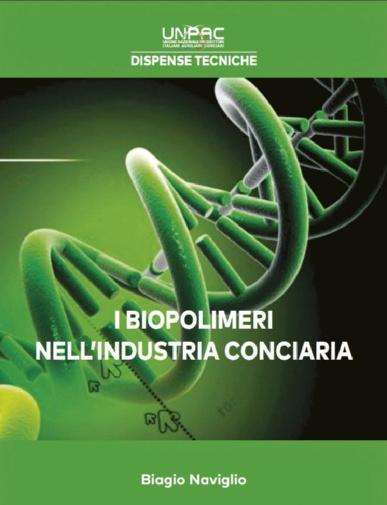
In the tanning industry, the use of chemicals derived from biological sources, particularly biomass, both plant and animal derived, is becoming increasingly popular. The latter also include those derived from the recovery of waste from the processing of the leather itself with a view to full circularity. Of extreme topicality, therefore, is the publication entitled "Biopolymers in the Tanning Industry," which enriches the "Technical Handouts" series produced by UNPAC.
The study was carried out by Prof. Biagio Naviglio, scientific director of the Leather Station for many years, and focuses precisely on the use, in the tanning production cycle, of biopolymers derived from plant biomasses (carbohydrates/polysaccharides, tannins) and animal biomasses (protein
La trasformazione delle biomasse di origine agricola, industriale o naturale in sostanze chimiche, sia per impiego energetico, sia per impiego industriale, è un processo chimico che permette di ottenere sostanze che possono essere utilizzate sia per produrre direttamente energia (biocombustibili), sia per produrre composti chimici (intermedi) che a loro volta vengono trasformati in ulteriori prodotti. Dalla chimica da biomasse si ottengono quelli che vengono definiti “bio-based products”, cioè prodotti ottenuti totalmente o parzialmente da materiali di origine biologica, con esclusione delle fonti fossili e minerarie, cioè di materiali non rinnovabili. L’uso di prodotti chimici ottenuti da materiali di origine organica, si colloca perfettamente nel percorso contrassegnato dal “Green Deal” europeo e nella visione strategica che mira a rendere l’Europa climaticamente neutra, attraverso azioni orientate vero uno sviluppo economico sostenibile. La pubblicazione può essere richiesta sul sito https://www.dinamicasas.it/biblioteca/
14 ARSTANNERY NEWS
ONLY SUSTAINABLE LEATHER FOR PORSCHE
nal auditors against a leather-specific sustainability standard such that offered by LWG. Porsche thus obliges its suppliers to respect animal welfare and ensure responsible production and processing of leather.
Porsche supports more sustainable leather production and has joined Leather Working Group (LWG) together with the brands of the Volkswagen Group. “Leather is a mark of quality for Porsche customers. Together with our suppliers, we are committed to internationally accepted standards” says Barbara Frenkel, Executive Board Member for Procurement at Porsche AG.
LWG, based in the English city of Milton Keynes, is a non-profit organisation with around 2.000 stakeholders. It advocates transparency and universal environmental and social standards in the global leather supply chain. It also offers certification for leather manufacturers. More than a quarter of global finished leather production stems from LWG certified leather manufacturers.

“The Volkswagen Group is taking responsibility for sustainable and transparent supply chains. The accession of Porsche and the brands of the Volkswagen Group to LWG is an important step. The organisation’s expertise helps us become even more sustainable in our use of leather,” says Dirk Grosse-Loheide, Member of the Extended Executive Committee and Board Member for Procurement on the Volkswagen brand Board of Management. “With supply chain traceability, companies can ensure that they are sourcing leather responsibly. This is at the heart of our efforts,” says Christina Trautmann, Head of Leather Working Group. “We look forward to the active participation of Porsche and the brands of the Volkswagen Group. With their support, we want to advance the development of tools and methods that can positively influence the leather industry.” Porsche’s commitment to LWG is an expression of its ambition to shape a more sustainable and transparent supply chain. Together with the Volkswagen Group, the car manufacturer has analysed 16 raw materials, including leather. At the beginning of 2022, Porsche created materials specifications for leather that have been mandatory for all new contract awards for leather suppliers since April 2022. Among other things, they must disclose the country of origin of the raw material and be audited by exter-
Porsche sostiene una produzione di pelle più sostenibile e aderisce al Leather Working Group (LWG) insieme ai marchi del Gruppo Volkswagen. "La pelle è un marchio di qualità per i clienti Porsche. Insieme ai nostri fornitori, ci impegniamo a rispettare gli standard accettati a livello internazionale", spiega Barbara Frenkel, membro del Consiglio Direttivo per gli Acquisti di Porsche AG. LWG, con sede nella città inglese di Milton Keynes, è un'organizzazione no-profit con circa 2.000 stakeholder; promuove la trasparenza e gli standard ambientali e sociali universali nella catena globale di approvvigionamento della pelle. Più di un quarto della produzione mondiale di pelle finita proviene da produttori di pelle certificati LWG. "Il Gruppo Volkswagen si sta assumendo la responsabilità di catene di approvvigionamento sostenibili e trasparenti. L'adesione di Porsche e dei marchi del Gruppo Volkswagen a LWG è un passo importante. L'esperienza dell'organizzazione ci aiuta a diventare ancora più sostenibili nell'uso della pelle", afferma Dirk Grosse-Loheide, membro del Comitato Esecutivo allargato e del Consiglio di Amministrazione per gli Approvvigionamenti nel Consiglio di Amministrazione del marchio Volkswagen.
"Con la tracciabilità della catena di fornitura, le aziende possono assicurarsi di approvvigionarsi di pelle in modo responsabile. Questo è il cuore del nostro impegno", afferma Christina Trautmann, responsabile del Leather Working Group che aggiunge: "Siamo lieti della partecipazione attiva di Porsche e dei marchi del Gruppo Volkswagen. Con il loro sostegno, vogliamo far progredire lo sviluppo di strumenti e metodi che possano influenzare positivamente l'industria della pelle".
L'impegno di Porsche nei confronti di LWG è espressione della sua ambizione di creare una catena di fornitura più sostenibile e trasparente. Insieme al Gruppo Volkswagen, il produttore di auto sportive ha analizzato 16 materie prime, tra cui la pelle. All'inizio del 2022, Porsche aveva già creato capitolati specifici per la pelle divenuti obbligatori per tutti i suoi fornitori da aprile 2022. Tra le altre cose, i fornitori devono dichiarare il Paese di origine della materia prima e devono essere sottoposti a verifiche da parte di revisori esterni.
Porsche obbliga quindi i suoi fornitori a rispettare il benessere degli animali e a garantire una produzione e una lavorazione responsabile della pelle.
Il produttore di auto sportive aderisce a Leather Working Group
SOLO PELLE SOSTENIBILE PER PORSCHE
The sports car manufacturer has joined Leather Working Group together with the other brands of Volkswagen Group committing to more responsible sourcing
ARSTANNERY 15 NEWS
APLF ASEAN RETURNS TO BANGKOK IN OCTOBER

APLF BANGKOK TORNA IN OTTOBRE
The second edition of APLF ASEAN will be held Oct. 25-27, 2023 in Halls 1 and 2 of the state-of-the-art Queen Sirikit National Convention Centre (QSNCC) in downtown Bangkok. What was supposed to be a oneoff event, created after APLF Dubai 2022 to offer a dedicated exhibition moment for the Asian market, is relaunching with a second event. After receiving many enquiries from both exhibitors and visitors as a result of the successful launch of APLF ASEAN in Bangkok last October 2022, the Organisers have taken the decision to hold a second event in Bangkok to satisfy the needs of all participants that wish to return to the heart of ASEAN to do business. At last year’s edition of APLF ASEAN, the national pavilions from the world’s leading leather producing countries generated much interest. It was the first time that such a gathering of some of the world’s most important tanneries had been brought together under one roof in this region of Southeast Asia. At the 2022 event, there were over 200 exhibitors in an exhibition area of 11,000 sqm participating, including six national pavilions from Brazil, France, India, Pakistan, USA, and Vietnam. The ten member countries of ASEAN (Brunei, Cambodia, Indonesia, Laos, Malaysia, Myanmar, the Philippines, Singapore, Thailand and Vietnam) have a population of 660 million inhabitants and generated a total gross domestic product (GDP) of US$3.4 trillion in 2021, making up 3.5% of global GDP. This places ASEAN as the third largest economy in Asia after China and Japan and fifth globally. In 2023, ASEAN's real GDP growth is forecasted to be 5.2%, according to the Organisation for Economic Co-operation and Development (OECD). With the necessity of importing raw materials, components, and chemical products to feed its production lines, ASEAN offers multiple export opportunities to western companies seeking to increase their business footprint in the region. APLF ASEAN is supported by the Thai Tanning Industry Association (TTIA) and the Vietnamese Leather, Footwear and Handbag Association (LEFASO).
La seconda edizione di APLF ASEAN si terrà dal 25 al 27 ottobre 2023 nei padiglioni 1 e 2 del modernissimo Queen Sirikit National Convention Centre (QSNCC), nel centro di Bangkok. Quella che doveva essere una manifestazione una tantum, nata dopo APLF Dubai 2022 per offrire un momento espositivo dedicato al mercato asiatico, rilancia con un secondo appuntamento. Una decisione nata dalla forte richiesta degli stessi operatori, spiegano oggi gli organizzatori, sia da parte di espositori che di visitatori a seguito del successo del lancio di APLF ASEAN a Bangkok lo scorso ottobre. In quell’occasione furono oltre 200 gli espositori presenti su un'area espositiva di 11.000 mq, tra cui sei padiglioni nazionali di Brasile, Francia, India, Pakistan, Stati Uniti e Vietnam che suscitarono grande interesse. Era la prima volta che un tale raduno di alcune delle più importanti concerie del mondo veniva riunito sotto lo stesso tetto in questa regione del SudEst asiatico. Vale la pena notare che l'importanza del blocco ASEAN in termini di produzione e lavorazione della pelle è stata favorita dalla delocalizzazione delle aziende cinesi nei paesi asiatici vicini a causa della pandemia. Ciò rende l'ASEAN una destinazione attraente per gli esportatori di pelle, dal momento che questo blocco importa 2,5 miliardi di dollari di tutti i tipi di pelle, non lontano dai 3,27 miliardi di dollari importati dalla Cina nello stesso periodo. Tra i primi dieci esportatori mondiali di calzature, tre sono Paesi ASEAN. Si tratta del Vietnam, al secondo posto dopo la Cina, che ha esportato quasi 1,3 miliardi di paia di scarpe, dell'Indonesia, al terzo posto con 427 milioni di paia, e della Cambogia, al decimo posto con 163 milioni di esportazioni. L'edizione inaugurale di APLF ASEAN nel 2022 ha attirato oltre 4.000 buyers. La maggior parte proveniva dai Paesi del blocco ASEAN, come si evince dall'elenco dei Paesi con più presenze, che sono stati: Thailandia, Vietnam, Indonesia, Filippine, Malesia, Singapore, India, Bangladesh, Pakistan e Cambogia. Gli organizzatori comunicano di voler continuare a puntare su questi gruppi di buyers anche per l'edizione 2023. I dieci Paesi membri dell'ASEAN (Brunei, Cambogia, Indonesia, Laos, Malesia, Myanmar, Filippine, Singapore, Thailandia e Vietnam) hanno una popolazione di 660 milioni di abitanti e hanno generato un prodotto interno lordo (PIL) totale di 3,4 trilioni di dollari nel 2021, pari al 3,5% del PIL globale, secondo i dati del blocco. Questo dato colloca l'ASEAN come terza economia in Asia dopo Cina e Giappone e quinta a livello globale. Secondo le previsioni dell'Organizzazione per la Cooperazione e lo Sviluppo Economico (OCSE) nel 2023 il PIL reale dell'ASEAN dovrebbe crescere del 5,2%. Con la necessità di importare materie prime, componenti e prodotti chimici per alimentare le linee di produzione, l'ASEAN offre molteplici opportunità di esportazione alle aziende occidentali che desiderano aumentare la propria presenza commerciale nella regione. APLF ASEAN è supportata dalla Thai Tanning Industry Association (TTIA) e dalla Vietnamese Leather, Footwear and Handbag Association (LEFASO).
La seconda edizione della manifestazione dedicata al sud-est asiatico si terrà dal 25 al 27 ottobre 2023
The second edition of the event dedicated to Southeast Asia will be held Oct. 25-27, 2023
16 ARSTANNERY FAIRS

A LINE OF ANTIBACTERIAL AND ANTIVIRAL PRODUCTS FROM GSC GROUP IN COLLABORATION WITH POLYGIENE GROUP
New Polygiene LeatherCoteTM technology provides comprehensive leather protection

PRODOTTI ANTIBATTERICI E ANTIVIRALI DA GSC GROUP IN COLLABORAZIONE CON POLYIGIENE GROUP
La nuova tecnologia Polygiene LeatherCoteTM garantisce una protezione completa della pelle
A leading Veneto-based chemical and leather company, GSC Group has a wide range of cutting-edge products dedicated to all application sectors, from footwear to furniture, from leather goods to automotive. We are talking about chemical auxiliaries and patented technologies for metal-free conce, low-VOC retanning agents, metal-free pigments, bio-based products and much more. The latest innovation is a line of antiviral and antibacterial products born from the collaboration between GSC Group and Polygiene AB, a Swedish company that has developed technology for odor elimination in textiles already used by leading sportswear brands. Together the two companies have developed Polygiene LeatherCoteTM, a range of products designed to inhibit the proliferation of microbes even on leather for use in finishing. "Polygiene LeatherCoteTM technology, incorporated into the coating at the production stage, forms a silver ion coating that limits microbial growth by up to 99.9 percent, eliminating bacterial-related odor throughout the life cycle of the leather," explain GSC. "As is well known, silver is a natural antimicrobial, capable of inhibiting microbial growth and thus related odors on leather for the entire life of the material. Thanks to these characteristics Polygiene LeatherCote keeps the leather protected forever." The technology has also been successfully tested on Covid. According to ISO 21702:2019, the treatment reduces the presence of SARSCoV-2 virus on the surface by 96 percent (after 6 h in comparison with a reference sample).
Azienda chimico-conciaria veneta leader di mercato, GSC Group dispone di un’ampia serie di prodotti all’avanguardia dedicati a tutti i settori applicativi, dalla calzatura all’arredamento, dalla pelletteria all’automotive. Parliamo di ausiliari chimici e tecnologie brevettate per conce metal-free, di riconcianti a basso contenuto di VOC, di pigmenti metal-free, di prodotti bio-based e molto altro ancora. L’ultima novità è una linea di prodotti antivirali e antibatterici nati dalla collaborazione tra GSC Group e Polygiene AB, azienda svedese che ha sviluppato una tecnologia per l’eliminazione degli odori nel tessile già utilizzata dai principali brand di abbigliamento sportivo. Insieme le due aziende hanno sviluppato Polygiene LeatherCoteTM, una gamma di prodotti studiata per inibire la proliferazione dei microbi anche sulla pelle da utilizzare in fase di rifinizione. “La tecnologia Polygiene LeatherCoteTM, incorporata nel finissaggio in fase di produzione, forma una copertura agli ioni d’argento che limita la crescita microbica fino al 99,9%, eliminando il cattivo odore legato ai batteri per tutto il ciclo di vita della pelle - spiegano da GSC -. Come noto l’argento è un antimicrobico naturale, capace di inibire la crescita microbica e quindi gli odori correlati sulla pelle per l’intera vita del materiale. Grazie a queste caratteristiche Polygiene LeatherCote mantiene la pelle protetta per sempre”.
La tecnologia è stata testata con successo anche sul Covid. Secondo la norma ISO 21702:2019 il trattamento riduce la presenza del virus SARSCoV-2 sulla superficie del 96% (dopo 6 h in confronto con un campione di riferimento).

18 ARSTANNERY CHEMICALS

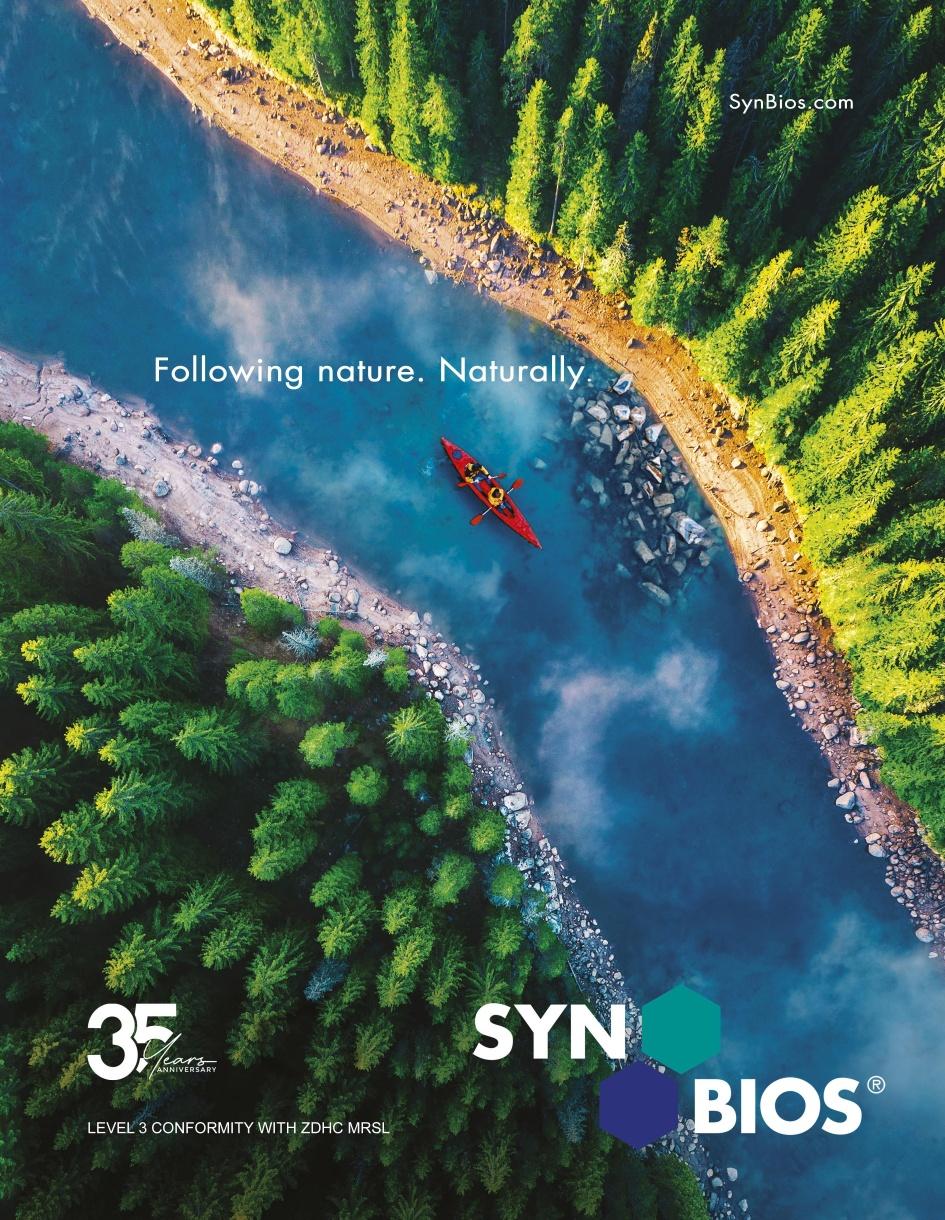

TODESCO LAUNCHES SCADA SOFTWARE "STATWATCH" FOR THE TANNERY

A tool to monitor Innover and Kingfisher finishing lines and improve operational efficiency
This results - on the one hand - in the possibility of affecting the economic losses dictated by process inefficiency and, on the other hand, in being able to provide its customers with a timely and real analysis of the sustainability of the work done.
TODESCO LANCIA IL SOFTWARE SCADA
“STATWATCH” PER LA CONCERIA
Uno strumento che consente di monitorare le linee di rifinizione Innover e Kingfisher per migliorare l’efficienza operativa
A SCADA (Supervisory Control and Data Acquisition) software is a monitoring and control system used to acquire, display and manage real-time data from devices and sensors in a plant or process. The company Todesco proposes it to monitor its Innover and Kingfisher finishing lines, providing tanneries with all the information they need to optimize their work.
The main purpose of Statwatch is to collect data from field devices, such as sensors, PLC (Programmable Logic Controller) or RTU (Remote Terminal Unit), and provide an intuitive user interface to monitor and control these devices.
Statwatch detects all parameters of a finishing line, including all operating states (spraying, washing, maintenance, gun brushing, up to and including recognizing operator absence) and analyzes chemical, air, water, electrical and thermal energy consumption, totally independent of machine operators.
The use of Statwatch makes it possible to improve operational efficiency, ensure process safety, reduce downtime and optimize production by transmitting for each batch processed or per reference period the value of OEE (Overall Equipment Efficiency).
In addition, in relation to the finishing phase, Statwatch enables the implementation of a LCA (Life Cycle Assessment) - Life Cycle Analysis, i.e., the methodology used to assess the environmental impact of the product and process.
The main objective of the LCA is to provide a comprehensive and objective assessment of the environmental impacts associated with the individual processed batch. With this in mind, Statwach proves to be a tool of considerable importance in that it enables the tannery to know exactly the cost and environmental impact of what has been finished.
Un software SCADA (Supervisory Control and Data Acquisition) è un sistema di monitoraggio e controllo utilizzato per acquisire, visualizzare e gestire dati in tempo reale provenienti da dispositivi e sensori presenti in un impianto o un processo. Lo propone Todesco per monitorare le sue linee di rifinizione Innover e Kingfisher fornendo alle concerie tutte le informazioni necessarie ad ottimizzare il lavoro.
Lo scopo principale di Statwatch è quello di raccogliere dati da dispositivi di campo, come sensori, PLC (Programmable Logic Controller) o RTU (Remote Terminal Unit), e fornire un'interfaccia utente intuitiva per monitorare e controllare tali dispositivi.
Statwatch rileva tutti i parametri di una linea di rifinizione, tra cui tutti gli stati operativi (spruzzatura, lavaggi, manutenzione, spazzolatura pistole, fino a riconoscere l’assenza dell’operatore) e analizza i consumi di prodotto chimico, di aria, acqua, energia elettrica e termica, in modo totalmente indipendente dagli operatori macchina.
L'utilizzo di Statwatch consente di migliorare l'efficienza operativa, garantire la sicurezza dei processi, ridurre i tempi di fermo e ottimizzare la produzione trasmettendo per ogni lotto lavorato o per periodo di riferimento il valore dell’OEE (Overall Equipment Efficiency).
Inoltre, in relazione alla fase di rifinizione, Statwatch consente l’implementazione di un LCA (Life Cycle Assessment) - Analisi del Ciclo di Vita, cioè della metodologia utilizzata per valutare l'impatto ambientale del prodotto e del processo. L'obiettivo principale dell'LCA è quello di fornire una valutazione completa e obiettiva dell’incidenza ambientale associata al singolo lotto lavorato. In quest’ottica Statwach si rivela essere uno strumento di notevole importanza in quanto consente alla conceria di conoscere esattamente l’impatto sui costi e sull’ambiente di quanto è stato rifinito. Ne consegue, da un lato, la possibilità di incidere sulle perdite economiche dettate dall’inefficienza del processo e, dall’altro, di poter fornire ai propri clienti un’analisi puntuale e reale sulla sostenibilità del lavoro svolto.
STATWATCH DETECTS ALL THE PARAMETERS OF A FINISHING LINE STATWATCH RILEVA TUTTI I PARAMETRI DI UNA LINEA DI RIFINIZIONE
22 ARSTANNERY NEWS
TFL COLOUR TRENDS FOR AUTUMN-WINTER 24/25
New fashion Catalogue focuses on regenerative manufacturing and material reuse
Being confident that the TFL Colour Trends catalogue will assist you in taking decisions regarding colour trends, we wish you a happy reading. The TFL Colour Trends Catalogue is now available. See at www.tfl.com.

TFL has released its new TFL Colour Trends Catalogue for the season Autumn Winter 2024/25. In the catalogue, TFL presents the colour trends for leather garment, footwear, accessories and additionally for the upholstery industry. The colour trends are divided into “Wearing” and “Living”, devoting a section to each within the publication. Wearing comprises inspirations and colour trends for garments, footwear and accessories. The Living section features all colours that will decorate the season’s interior designs. In “Wearing”, we discover a new process in motion that touches all the generations as well as the fashion system. Manufacturing becomes regenerative and tends to reuse materials and to return the organic ones to the earth, thus ensuring a low impact on the planet. Low sulphide products in the Beamhouse, low BPS/BPF syntans in the wet end, organic-based waxes and polyurethanes in the finishing grant outstanding results on glossy full grain leather, soft and airy floaters, shiny suede and small skins or soft vegetal leather.
In “Living”, we see how the blend of skills and new techniques applied to leather can lead to a (R)evolution in the different areas of our homes. Mixed materials and saturated colours in the kitchen, leather walls in the hallway, stain proof and water repellent materials in the dining room, bright nubuk and matt full grain floater for voluminous living rooms, shimmering colours and pastel shades on leather beds and wardrobe doors, light & water fastness properties on the outdoor furniture. Our homes can fully benefit from the latest technologies applied on leather.
TFL ha pubblicato il nuovo Catalogo Colour Trends per la stagione Autunno-Inverno 2024/25. All’interno le nuove tendenze colori della pelle per abbigliamento, calzatura, accessori oltre a quelle per l’industria dell’arredamento. Le indicazioni moda sono come sempre divise tra le sezioni “Wearing” e “Living”. La prima dedicata ad abbigliamento, calzature e pelletteria, la seconda al design d’interni.
In “Wearing” scopriamo un nuovo processo in atto, che interessa tutte le generazioni così come il sistema della moda. La produzione diventa rigenerativa e tende al riutilizzo dei materiali, restituendo le materie organiche alla terra per assicurare un minore impatto sul pianeta. Prodotti di riviera a basso contenuto di solfuro, tannini sintetici in botte con ridotta quantità di BPS/BPF, poliuretani e cere a base organica nella rifinizione garantiscono risultati notevoli su pelli lucide pieno fiore, floater soffici e aerei, camosci brillanti, ovicaprine e morbida pelle al vegetale.
In “Living”, vediamo come il mescolarsi di nuove abilità e tecnologie applicate alla pelle porterà a una (R)evoluzione nelle diverse aree delle nostre case. Mix di materiali e colori saturi in cucina, pareti in pelle nei corridoi, materiali antimacchia e antigoccia in sala da pranzo, nubuk brillanti con floater pieno fiore opachi nei soggiorni voluminosi, colori scintillanti e tinte pastello nei letti di pelle o nelle porte dei guardaroba, proprietà di resistenza all’acqua e alla luce negli arredi da esterno. Le nostre case potranno beneficiare appieno dalle ultime tecnologie applicate al cuoio. Il catalogo TFL Colour Trends è disponibile. Consulta il sito www.tfl.com.
New Sales organization in Solofra for TFL Italia Spa
As of February 1st 2023, TFL Italia’s SpA district of Solofra/ Campania is operating with a new sales organization. Following TFL’s acquisition of the OLC business, the company Graziano Buonanno & Figli becomes the new TFL’s area distributor.
Nuova organizzazione vendite a Solofra per TFL Italia Spa
Dal 1° febbraio 2023 TFL Italia SpA ha una nuova organizzazione vendite nel distretto conciario di Solofra/Campania. Per effetto dell’acquisizione del settore cuoio di Lanxess da parte di TFL, la società Graziano Buonanno & Figli diventa il nuovo distributore di zona.
Il nuovo catalogo moda punta su produzione rigenerativa e riutilizzo dei materiali
TFL PRESENTA LE TENDENZE COLORI PER L’AUTUNNO-INVERNO 24/25
ARSTANNERY 23 NEWS
ROYAL SMIT & ZOON RELEASES NEW ESG REPORT
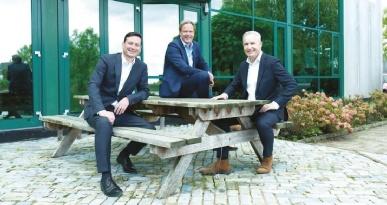
Leather chemicals manufacturer Royal Smit & Zoon has published its Environment, Social, Governance (ESG) report for 2022, highlighting the company’s environmental and social performance. The report is describing the company’s challenges for the future and the progress it is making towards its mission ‘to create a socially and environmentally sustainable leather supply chain, together’.
Despite 2022 being a year that has been challenging in many ways, we are proud to be able to report progress towards our long term ESG goals, including:
- Maintaining EcoVadis Gold rating
- Achieving ISO certification for all their production and logistics sites
- Expanding portfolio of ZDHC level 3 certified products
- Implementing a multi-year training program on the Employee Code of Conduct
- Demonstrating thought leadership in several education and community involvement initiatives
- Continuing strong involvement in key industry networks and organizations
Within the remit of their mission and strategy, Royal Smit & Zoon kept innovating and providing sustainable solutions to the industry. The interest and adoption of Zeology, a chrome free, heavy metal free, and aldehyde free tanning agent, has been growing further. In addition, new products like ligninmodified re-tanning agents, biopolymers based on sugar beet pectins, and environmental and performance-optimized retanning products were introduced.
CEO Marc Smit: “The Russia-Ukraine war, with its direct impact on raw materials, energy, and inflation, and the continued Covid-19 lockdowns in China significantly impacted our business and our customers. Despite the global turmoil, we kept true to our mission to ‘Create a Socially and Environmentally Sustainable Leather Value Chain’, spanning environmental, social, and governance dimensions. ESG is at the core of our strategy and critical to ensuring continuity for our family-owned business.”
ROYAL SMIT & ZOON PUBBLICA IL NUOVO REPORT ESG
Il rapporto annuale evidenzia i progressi, le soluzioni e gli obiettivi della compagnia olandese sul fronte della sostenibilità della pelle
Royal Smit & Zoon ha pubblicato il suo Rapporto ambientale, sociale ed economico (ESG) per il 2022, evidenziando le migliori prestazioni raggiunte nell’ultimo anno dall'azienda specializzata nella produzioni di ausiliari chimici per la pelle. Il rapporto illustra le sfide ancora da vincere e riferisce dei progressi compiuti dalla compagnia olandese rispetto all’obiettivo di "creare una catena di fornitura della pelle socialmente e ambientalmente sostenibile” insieme ai suoi partner. Nonostante il 2022 sia stato un anno impegnativo sotto molti punti di vista, la compagnia olandese ha compiuto progressi verso il raggiungimento dei suoi obiettivi ESG a lungo termine, tra cui:
- Mantenimento del rating EcoVadis Gold
- Ottenimento della certificazione ISO per tutti i suoi siti di produzione e logistica
- Ampliamento del portafoglio di prodotti certificati ZDHC livello 3
- Implementazione di un programma pluriennale di formazione sul Codice di Condotta dei dipendenti
- Leadership di pensiero in diverse iniziative di formazione e coinvolgimento della comunità
- Forte coinvolgimento nelle principali reti e organizzazioni del settore.
Nell'ambito della sua missione strategica, Royal Smit & Zoon ha continuato a innovare e a fornire soluzioni sostenibili al settore. L'interesse e l'adozione di Zeology, un agente conciante privo di cromo, metalli pesanti e aldeidi, sono cresciuti ulteriormente. Inoltre, sono stati introdotti nuovi prodotti come i riconcianti modificati con lignina, i biopolimeri a base di pectine di barbabietola da zucchero e i prodotti riconcianti ottimizzati per l'ambiente e le performance.
Marc Smit, CEO di Royal Smit & Zoon, ha dichiarato: "La guerra Russia-Ucraina, con il suo impatto diretto sulle materie prime, l'energia e l'inflazione, e le continue chiusure di Covid-19 in Cina hanno avuto un impatto significativo sulla nostra attività e sui nostri clienti. Nonostante le turbolenze globali, siamo rimasti fedeli alla nostra missione di creare una catena del valore della pelle sostenibile dal punto di vista sociale e ambientale, che abbraccia le dimensioni ambientale, sociale ed economica. L'ESG è al centro della nostra strategia ed è fondamentale per garantire la continuità della nostra azienda a conduzione familiare".
Annual report highlights the Dutch company's progress, solutions and ambitions on the leather sustainability front
24 ARSTANNERY NEWS
SIMAC TANNING TECH
19-21 September 2023 - Preview
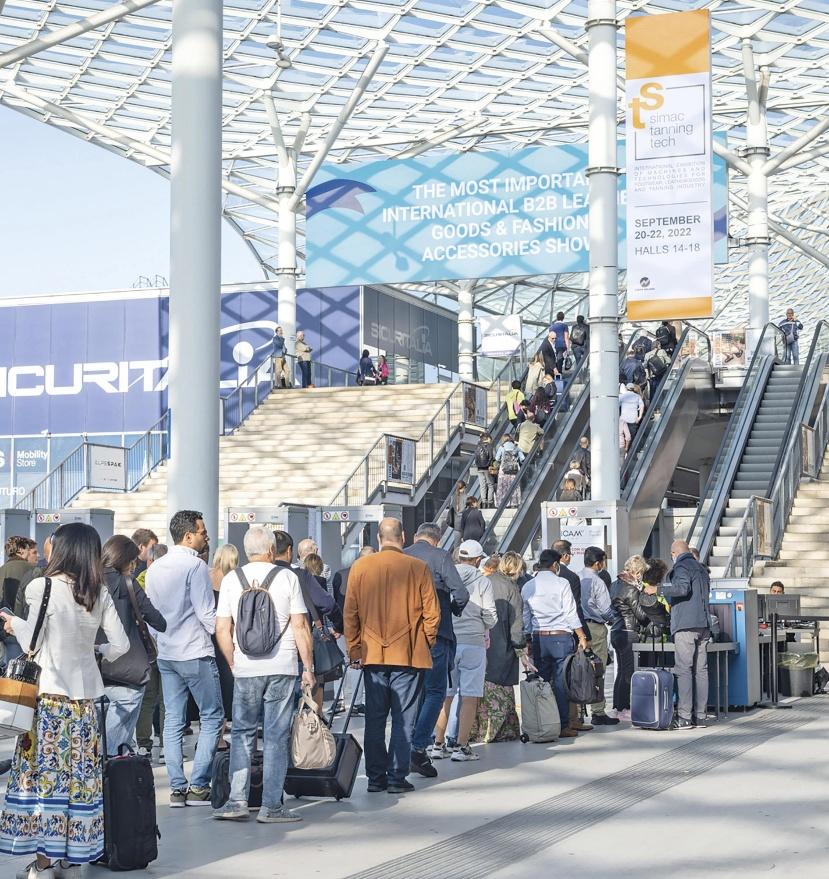
Reinvigorating the Italian model
by Maria Vittoria Brustia - President of Assomac Servizi s.r.l.
Made in Italy is in itself a huge, internationally recognized value, consisting certainly of products, but also of production 'styles' that determine the quality of the finished object.
Manufacturing expertise and skills, especially in high-end manufacturing, are based on the ability to organize the entire supply chain. The 'Italian model' has been studied globally as a brand of excellence. Today it needs to be innovated and associated with the concept 'sustainability', so as to further increase its appeal in the world.
Decisive in this evolution is the contribution in Technology and Innovation that Italian SMEs in the mechanical sector provide, particularly in the implementation of production processes under the banner of Safety and Sustainability.
Shifting the focus from the object to the subject of production, and therefore on the entrepreneur and those who collaborate with him, is certainly one of the necessary actions to support virtuous supply chains. To those that produce by meeting certain operational standards.
Our sector has been willing to commit itself to this by introducing voluntary certification methodologies for machinery. A distinctive element of Italian savoir-faire aimed at achieving those sustainable development goals of which much is spoken.
A supportive action will have to be taken on these issues that focuses on the promotion of Italian System, capable of sustaining the sector in the fierce international competition.
With this in mind, the events scheduled for next September and October 2023 will also lend themselves to become important moments of discussion and dialogue for the supply chain.
SIMAC TANNING TECH 2023 in September remains the internationally recognized fair as a unique opportunity where technology and innovation, especially Italian, play an important role in the manufacturing landscape of the footwear, leather goods, tannery, automotive and furniture sectors.
The 21st UITIC 2023 congress is the historically most important international event for the industry. Technical figures from the entire manufacturing system have an opportunity to grasp new solutions to be implemented in processes. In conjunction with Simac Tanning Tech will represent a unique opportunity to meet, even taking into account what we have experienced in recent years due to the pandemic and geopolitical crises.
At the Venice Sustainable Fashion Forum 2023 supply chain event, organized by The European House Ambrosetti in October, ASSOMAC joined with the specific aim of bringing our contribution and expertise to the table. After all, the issue of production processes, today more than yesterday, becomes decisive both in terms of international competition and sustainability declined in all its aspects.
I cannot but conclude by emphasizing how strategic it is, for today's Italy, to pick up the threads of decisive action aimed at training new professional figures. Next-generation manufacturing greatly needs this in order to achieve supply chain synergy goals that are essential for our future.
26 SIMAC TANNING TECH WELCOME
ll Made in Italy è di per sé un valore enorme, riconosciuto a livello internazionale, costituito certamente di prodotti, ma anche di ‘stili’ di produzione che determinano la qualità dell’oggetto finito.
La competenza e le abilità produttive, soprattutto nel manifatturiero di alta gamma, si fondano sulla capacità di organizzare l’intera filiera.
Il ‘modello Italiano’ è stato studiato a livello globale alla stregua di un marchio d’eccellenza. Oggi va innovato e associato al concetto ‘sostenibilità’, così da accrescere ulteriormente il suo appeal nel mondo.
In questa evoluzione è decisivo il contributo in Tecnologia e Innovazione che le PMI italiane del settore meccanico forniscono, in particolare nella realizzazione di processi produttivi all’insegna di Sicurezza e Sostenibilità.
Spostare il fuoco dall’oggetto al soggetto della produzione, e quindi sull’imprenditore e su quanti collaborano con lui, è certamente una delle necessarie azioni di sostegno alle filiere virtuose. A quelle che producono rispettando determinati standard operativi.
Il nostro settore ha voluto impegnarsi in tal senso, introducendo metodologie di certificazione volontaria dei macchinari. Un elemento distintivo del saper fare italiano finalizzato al raggiungimento di quegli obiettivi di sviluppo sostenibile di cui molto si parla. Su queste tematiche dovrà essere intrapresa un’azione di sostegno che si concentri sulla promozione del Sistema Italia, in grado di sostenere il comparto nell’ambito dell’agguerrita competizione internazionale.
In questa ottica, gli eventi in programma per il prossimo settembre e ottobre 2023 si presteranno a divenire anche importanti momenti di confronto e dialogo per la filiera.
SIMAC TANNING TECH 2023 di settembre rimane la fiera riconosciuta a livello internazionale come occasione unica dove tecnologia e innovazione, soprattutto italiane, giocano un ruolo importante nel panorama del manifatturiero dei settori calzatura, pelletteria, conceria, automotive e arredamento.
Il 21esimo congresso UITIC 2023 è l’evento internazionale storicamente più importante per il settore. Le figure tecniche dell’intero sistema produttivo hanno occasione di cogliere le nuove soluzioni da implementare nei processi. In concomitanza con Simac Tanning Tech rappresenterà un’occasione unica di incontro, anche tenendo conto di quanto abbiamo vissuto negli ultimi anni a causa delle crisi pandemica e geopolitica.
All’evento di filiera Venice Sustainable Fashion Forum 2023, organizzato da The European House Ambrosetti a ottobre, ASSOMAC ha aderito con il preciso obiettivo di portare sul tavolo il nostro contributo e la nostra competenza. Del resto, il tema dei processi produttivi, oggi più di ieri, diventa determinante sia in termini di competizione internazionale che di sostenibilità declinata in tutti i suoi aspetti. Non posso che concludere sottolineando quanto sia strategico, per l’Italia di oggi, riprendere le fila di un’azione decisa finalizzata a formare nuove figure professionali. Il manifatturiero di ultima generazione ne ha grandemente bisogno per raggiungere obiettivi di sinergia di filiera indispensabili per il nostro futuro.
SIMAC TANNING TECH 27 WELCOME
ITALIAN INDUSTRIAL MECHANICS FOR MANUFACTURING BACK AT CENTER STAGE INTERNATIONALLY
Excellent numbers and much optimism for a sector that has returned to growth and regained the attention of international markets. Good expectations also for September's trade fair events.
How does the Simac Tanning Tech event fit into this context?
"We can venture a consideration: the year 2023 is a 'pivotal' year that is long overdue for the manufacturing technology sector, particularly those related to the fashion and accessories industry. We believe it should be a source of pride and recognition of the 'know-how' that distinguishes Italian industrial history.

The next edition of Simac Tanning Tech fits into this groove, confirming itself as the only international event with industrial machinery and technologies in attendance for the footwear, leather goods, tanning, furniture and automotive sectors. The fair plays a reference role especially in the current period of 'disorientation' in the international exhibition scene.
This awareness comes from the confirmations gathered during the daily work of organizing the event and even from the analysis of the data collected with the latest survey conducted among visitors and exhibitors of the last edition”.
Have you gathered comforting responses?
"Fashion outperforms finance in Italy's ESG ranking", is the title of the Sole 24 Ore's insert dedicated to sustainability issues, published last May 17, 2023. Digital, Servitization and Circularity are the Italian competencies of an industry, that of fashion, that wants to remain a leader on the international scene. We talk about this with Roberto Vago, Director of Assomac, the national association of Italian manufacturers of footwear, leather goods and tannery technologies, which organizes the Simac Tanning Tech exhibition.
What market picture do you detect from your observatory?
"According to the data presented by the Vice-President of Fondazione Edison, Marco Fortis, during his speech at the opening of the 'Lamiera' fair last May, which incidentally saw a renewed climate of international participation, the industrial mechanics sector for manufacturing has reached and surpassed some of the largest economies on the European scene. A greatly positive sign that in the forecasts will also be confirmed by the success of ITMA 2023, the important international event dedicated to textile technologies, which will open its doors in Milan next June.
These are all encouraging elements that bring back to the center the Italian quality and competence in the mechanical sector for manufacturing. They emphasize and enhance the ability of Made in Italy to propose solutions and services for new production models, in line with the need to reconvert and adapt industrial systems globally. A vision of renewal oriented to the themes of sustainability not only environmental, but also related to the issues of safety and production quality”.
"We got confirmation that industry professionals see the appointment with Simac Tanning Tech as a fixed point in their agenda; exhibiting companies consider the event not only a showcase, but also a crucial opportunity to strengthen their network of contacts. While visitors confirmed that the event remains a unique opportunity to touch and see in action new solutions and technologies to be implemented in production departments.

After all, Simac Tanning Tech has always represented a platform to explore and understand how much the issues of digitization, machinery servitization and easy access to machinery programming can contribute to qualitative and quantitative results in line with the most stringent market needs".
How is the organization of the next edition progressing? Should we expect any news?
"We are working to provide a quality experience that lives up to expectations. We will soon open registration for visitors and, again this year, we expect a significant international response. With the support of Agenzia ITA/ICE, we are organizing delegations from all over the world, and we expect to host operators from the most important footwear, leather and tanning manufacturing countries. i.e. from Argentina, Mexico, India, Vietnam, Indonesia, Tunisia, Poland Uzbekistan, Pakistan, South Africa, Niger, Algeria, Iran... just to name a few nations. Our fair, in step with the metaverse, will present new ways of understanding the production processes of the tanning, leather and footwear supply chains by representing the main functions of the technological processes and machinery used with immersive digital environments. While remaining at the fair, visitors will be transported to a virtual company to step among the main production lines and observe their operation.
28 SIMAC TANNING TECH INTERVIEW
MARIA VITTORIA BRUSTIA WITH ROBERTO VAGO, PRESIDENT AND DIRECTOR, RESPECTIVELY, OF ASSOMAC, THE ASSOCIATION THAT ORGANIZES SIMAC TANNING TECH
In addition, we look positively at the overlapping days with other finished product and materials events, starting with the full concurrence of dates with Lineapelle and the two days with MICAM, MIPEL, HOMI, and THE ONE. A wide-ranging synergy that enhances an industrial sector of excellence. Not to mention the concomitance with the UITIC event dedicated to footwear technicians (more in-depth information in this issue, ed.). We are expecting a very positive September”.
LA
INDUSTRIALE ITALIANA
Ottimi numeri e tanto ottimismo per un settore tornato a crescere e che ha riconquistato l’attenzione dei mercati internazionali. Buone aspettative anche per gli eventi fieristici di settembre.
“La moda supera la finanza nella classifica ESG italiana”, così titola l’inserto dedicato ai temi della sostenibilità del Sole 24 Ore, pubblicato lo scorso 17 maggio 2023. Digitale, Servitizzazione e Circolarità sono le competenze italiane di un settore, quello del fashion, che vuole rimanere leader nel panorama internazionale. Ne parliamo con Roberto Vago, Direttore di Assomac, l’associazione nazionale dei costruttori italiani di tecnologie per calzature, pelletteria e conceria che organizza la fiera Simac Tanning Tech.
Quale quadro del mercato rilevate dal vostro osservatorio?
“Secondo i dati presentati dal Vicepresidente di Fondazione Edison, Marco Fortis, durante l’intervento di inaugurazione della fiera ‘Lamiera’ lo scorso maggio, che per inciso ha visto un rinnovato clima di partecipazione internazionale, il settore della meccanica industriale per il manifatturiero ha raggiunto e superato alcune delle maggiori economie del panorama Europeo. Un segnale grandemente positivo che nelle previsioni sarà confermato anche dal successo di ITMA 2023, l’importante manifestazione internazionale dedicata alle tecnologie tessili, che il prossimo giugno aprirà le porte a Milano.
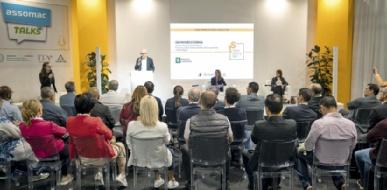
Tutti elementi incoraggianti che riportano al centro la qualità e competenza italiana nel settore meccanico per il manifatturiero. Rilevano e valorizzano la capacità del Made in Italy di proporre soluzioni e servizi per nuovi modelli produttivi, in linea con le necessità di riconversione e adeguamento dei sistemi industriali a livello globale. Una visione di rinnovamento orientata ai temi della sostenibilità non solo ambientale, ma anche legata alle tematiche della sicurezza e qualità produttiva”.
Come si inserisce la manifestazione Simac Tanning Tech in questo contesto?
“Possiamo azzardare una considerazione: il 2023 è un anno ‘centrale’, da tempo atteso dal settore delle tecnologie per il manifatturiero, in particolare da quello legato al settore moda e accessori. Riteniamo debba essere motivo di orgoglio e di riconoscimento del ‘saper fare’ che contraddistingue la storia industriale italiana. In questo solco si inserisce la prossima edizione di Simac Tanning Tech che si conferma l’unico evento internazionale con macchine industriali e tecnologie in presenza per i settori calzaturiero, pelletteria, conciario, arredamento e automotive. La fiera interpreta un
ruolo di riferimento soprattutto nell’attuale periodo di ‘disorientamento’ del panorama fieristico internazionale.
Questa consapevolezza deriva dalle conferme raccolte durante il quotidiano lavoro di organizzazione della manifestazione nonché dall’analisi dei dati raccolti con l’ultimo sondaggio condotto fra visitatori ed espositori dell’ultima edizione”.
Avete ricevuto risposte confortanti?
“Abbiamo avuto conferma che gli operatori del settore vedono l’appuntamento con Simac Tanning Tech come un punto fisso della loro agenda; le aziende espositrici considerano la manifestazione non solo una vetrina, ma anche una cruciale opportunità per rafforzare la propria rete di contatti.
Mentre i visitatori hanno confermato che l’evento rimane un’opportunità unica per toccare con mano e vedere in azione le nuove soluzioni e tecnologie da implementare nei reparti di produzione. Del resto Simac Tanning Tech rappresenta da sempre una piattaforma per esplorare e comprendere quanto i temi della digitalizzazione dei processi, la servitizzazione dei macchinari e la facilità di accesso alla programmazione degli stessi possano contribuire ad ottenere risultati qualitativi e quantitativi in linea con le più stringenti necessità di mercato”.
Come procede l’organizzazione della prossima edizione?
Ci dobbiamo aspettare novità?
“Stiamo lavorando per offrire un’esperienza di qualità e all’altezza delle aspettative. A breve apriremo le registrazioni per i visitatori e, anche quest’anno, ci attendiamo una risposta internazionale importante. Con il supporto di Agenzia ITA/ICE, stiamo organizzando delegazioni provenienti da tutto il mondo, e contiamo di ospitare operatori dai più importanti paesi di produzione calzaturiera, pellettiera e conciaria da Argentina, Messico, India, Vietnam, Indonesia, Tunisia, Polonia Uzbekistan, Pakistan, Sud Africa, Niger, Algeria, Iran… solo per citare alcune nazioni. La nostra fiera, al passo con i tempi del metaverso, presenterà nuovi modi di comprendere i processi produttivi delle filiere concia, pelletteria e calzature, rappresentando le funzioni principali dei processi tecnologici e dei macchinari utilizzati con ambienti immersivi digitali. I visitatori, rimanendo in fiera, saranno trasportati in un’azienda virtuale per calarsi fra le principali linee produttive e osservarne il funzionamento.
Inoltre, guardiamo con positività ai giorni di sovrapposizione con le altre manifestazioni del prodotto finito e materiali, a partire dalla piena concomitanza di date con Lineapelle e ai due giorni con MICAM, MIPEL, HOMI, e THE ONE. Una sinergia di ampio respiro che valorizza un comparto industriale d’eccellenza. Per non parlare della concomitanza con l’evento UITIC dedicato ai tecnici calzaturieri (informazioni più approfondite in questo numero, n.d.r.). Ci aspettiamo un settembre molto positivo”.
MECCANICA
PER IL MANIFATTURIERO TORNA AL CENTRO DELLA SCENA INTERNAZIONALE
SIMAC TANNING TECH 29 INTERVIEW
FROM SEPTEMBER 19 TO 21, THE APPOINTMENT WITH SIMAC TANNING TECH

A growing and very qualified attendance, which registered a 57 percent increase over the previous edition, and more than 280 exhibiting companies on 13,000 square meters of floor space decreed the success of the 2022 edition of Simac Tanning Tech, the international exhibition of machinery and technology for the footwear, leather goods and tanning industries. An edition that closed under the banner of optimism. A positive sentiment that can be felt even more in these months ahead of the next edition in September to be held from September 19 to 21. On the rise is the offer thanks to a further expansion of the exhibitor fleet, which will allow industry professionals to find the most important manufacturers of machines for shoe factories, leather goods and tanneries, accessories and components, chemical products, pattern prototyping, laboratory equipment, consumables, automation, purification equipment and systems, molds and dies, management and logistics systems, material testing, transport systems... Further reason for interest will be the appointment with the UITIC International Congress of Footwear Technicians, which will be hosted by the Simac Tanning Tech fair on September 20.
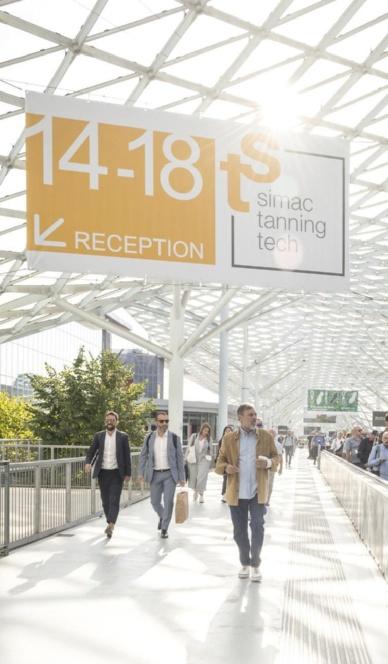
DAL 19 AL 21 SETTEMBRE L’APPUNTAMENTO CON SIMAC TANNING TECH
Un’edizione ulteriormente in crescita e molto speciale, visto che ospiterà anche il congresso UITIC oltre alle ultime novità tecnologiche dedicate a calzature, pelletteria e pelle.
Un’affluenza in crescita e molto qualificata, che ha registrato un aumento del 57% rispetto all’edizione precedente, e oltre 280 aziende espositrici su 13mila mq di superficie hanno decretato il successo dell’edizione 2022 di Simac Tanning Tech, il salone internazionale delle macchine e delle tecnologie per le industrie calzaturiera, pellettiera e conciaria. Un’edizione che si è chiusa all’insegna dell’ottimismo. Un sentiment positivo che si respira a maggior ragione in questi mesi in vista della prossima edizione di settembre che si terrà dal 19 al 21 settembre. In crescita l’offerta grazie a un ulteriore ampliamento del parco espositori che consentirà agli operatori di settore di trovare i più importanti produttori di macchine per calzaturifici, pelletteria e concerie, accessori e componenti, prodotti chimici, prototipazione dei modelli, attrezzature per laboratorio, materiali di consumo, automazione, apparecchi e impianti di depurazione, stampi e fustelle, sistemi di gestione e logistica, collaudo materiali, sistemi di trasporto… Ulteriore motivo di interesse sarà l’appuntamento con il congresso internazionale dei tecnici calzaturieri UITIC che verrà ospitato proprio in fiera, da Simac Tanning Tech, il 20 settembre.
A further growing and very special edition, as it will also host the UITIC congress in addition to the latest technological innovations dedicated to footwear, leather goods and leather.
30 SIMAC TANNING TECH FAIRS
Assomac's main mission is the development of sector policies to unify and enhance all the aspects that make "Made with Italian Technology" a guarantee of high quality standards. Italian expertise means Product Excellence, Process Experience and Innovation capability. With this spirit, Italian companies have faced the challenges of the market, resumed traveling the world and promoting their technologies capable of renewing the sector of footwear, bag and leather production in general. Together with Assomac, and with the support of ITA - Italian Trade Agency, in 2023 they have already touched Pakistan (Mega Leather Show), India (IILF), Brazil (FIMEC), China (APLF), Mexico (ANPIC). A long list of events in which Italian technologies, also thanks to the recognizable commitment to sustainability certified by the Assomac Green Label, have stood out and made their voices heard. In the coming months, the commitment will be further strengthened and will go to other regions of the world, such as Indonesia, Turkey, China again and the United States. It will culminate in the most important event: the SIMAC TANNING TECH in September.
SUSTAINABITALY, COSÌ SI PRESENTA LA TECNOLOGIA ITALIANA NEL MONDO

Uno neologismo che interpreta bene i valori che le macchine italiane promuovono a livello internazionale quando partecipano ai tanti appuntamenti di settore: esperienza, digitalizzazione e automazione, sostenibilità.
La missione principale di Assomac è l'elaborazione delle politiche di settore per unificare e valorizzare tutti gli aspetti che fanno del "Made with Italian Technology" una garanzia di elevati standard qualitativi. Competenza italiana significa Eccellenza di prodotto, Esperienza di processo e capacità di Innovazione. Con questo spirito le aziende italiane hanno affrontato le sfide del mercato, hanno ripreso a viaggiare per il mondo e a promuovere le proprie tecnologie capaci di rinnovare il settore della produzione di calzature, borse e della pelle in generale. Insieme ad Assomac, e con il supporto di ITA – Italian Trade Agency, nel 2023 hanno già toccato il Pakistan (Mega Leather Show), l’India (IILF), il Brasile (FIMEC), la Cina (APLF), il Messico (ANPIC). Una lunga lista di eventi in cui le tecnologie italiane, anche grazie al riconoscibile impegno per la sostenibilità certificato dalla Green Label Assomac, hanno spiccato e fatto sentire la propria voce. Nei prossimi mesi l’impegno verrà ulteriormente rafforzato e andrà a toccare altre regioni del mondo, come Indonesia, Turchia, ancora Cina e Stati Uniti. Per poi culminare nell’evento più importante: il SIMAC TANNING TECH di settembre.

A neologism that interprets well the values that Italian machinery promotes internationally when participating in the many industry events: experience, digitalization and automation, and sustainability.
IILF 2023 - INDIA SIMAC TANNING TECH 31 EVENTS
SUSTAINABITALY, THIS IS HOW ITALIAN TECHNOLOGY IS PRESENTED IN THE WORLD
UITIC INTERNATIONAL FOOTWEAR CONGRESS: NEW IDEAS, DISCOVERIES AND APPLICATIONS IN FOOTWEAR SUSTAINABILITY AND INNOVATION
The event will be held between Vigevano and Milan on September 20-22, 2023, in conjunction with the Simac Tanning Tech exhibition.


zaturifici, will be confirmed as the most prestigious meeting of experts in the sector, about 400, capable of bringing together footwear experts, research centers, private companies and technicians from footwear associations, from 27 countries.
For more information check www.uitic-italy2023.com and discover the continuously updated program.

"Bringing the global Footwear industry together in Italy will be a valuable opportunity for sharing important information, fostering new business opportunities, as well as fruitful discussions, interesting visits to companies and technology centers", said Maria Vittoria Brustia, President of Assomac referring to the UITIC International Footwear Congress to be held between Vigevano and Milan from September 20 to 22, 2023, in conjunction with the Simac Tanning Tech trade show, which will start just one day early.
The 21st edition of the International Congress of Footwear Technicians, the organization of which is entrusted to Assomac, with the support of Messe Frankfurt Italy, and which is supported by Assocal-

The Congress returns to Italy after 25 years and does so with enthusiasm, in the words of Françoise Nicolas, President of the Scientific Committee of the UITIC Congress, who states: "During the 21st UITIC Congress we expect speakers from footwear companies, research centers, universities or service providers to present new ideas, discoveries or applications in the field of sustainability and innovation in the footwear sector or related industries".
Reinforcing the concept and revealing the theme of the event is Sergio Dulio, chairman of the UITIC Congress Organizing Committee: "With UITIC 2023 we want to present to the footwear world all the most important technological evolutions and trends that can influence the way shoes are designed and manufactured. We have prepared a conference program covering all relevant topics, from sustainability to digital transformation, logistics and supply chains, with a focus on the human capital of tomorrow".
Recalling a bit of history Yves Morin, UITIC President: "UITIC Interna-
32 SIMAC TANNING TECH EVENTS
VIGEVANO MILAN
tional Footwear Congress was the first international industry event. The first edition was held in 1972, exactly 50 years ago. UTIC members around the world are excited to organize the 21st UITIC International Footwear Congress in Italy, a country of undisputed reference in terms of innovation and technology for the leather and footwear industry".
The collaboration between Assomac and UITIC will lead to activating many positive synergies. Through broad participation, it will be able to reestablish collaboration among industry professionals, technology providers, machine manufacturers and other stakeholders, ensuring a great diversity of opinions and experiences. There will be an opportunity to compare best practices, offering a unique opportunity to learn from others' experiences. And of course, it will showcase the latest technological innovations.

Mark the dates in your diary: September 20-22, 2023 because this UITIC conference "will be the right stage to divulge the Italian experience capable of creating an open and shared system as well as implementing the latest technologies in favor of the international competitiveness of manufacturing companies", in the words of Maria Vittoria Brustia.
UITIC INTERNATIONAL FOOTWEAR CONGRESS: NUOVE IDEE, SCOPERTE E APPLICAZIONI NEL CAMPO DELLA
SOSTENIBILITÀ E DELL'INNOVAZIONE DELLE CALZATURE
L’evento si terrà fra Vigevano e Milano dal 20 al 22 settembre 2023, in concomitanza con la fiera Simac Tanning Tech.
“Riunire il settore mondiale della Calzatura in Italia sarà occasione preziosa per la condivisione di importanti informazioni, per favorire la nascita di nuove opportunità di business, così come di discussioni proficue, oltre che per interessanti visite ad aziende e centri tecnologici”, ha dichiarato Maria Vittoria Brustia, Presidente di Assomac riferendosi all’appuntamento con l’UITIC International Footwear Congress che si terrà fra Vigevano e Milano dal 20 al 22 settembre 2023, in concomitanza con la fiera Simac Tanning Tech che partirà con un solo giorno di anticipo.
GET YOUR TICKET
Under the patronage of Organiser Organisational Partner Partner Main Sponsor Co-organiser Gold Sponsor
&
SIMAC TANNING TECH 33 EVENTS
La ventunesima edizione del Congresso Internazionale dei Tecnici della Calzatura, la cui organizzazione è affidata ad Assomac, con il supporto di Messe Frankfurt Italia, e che è sostenuta da Assocalzaturifici, si confermerà il più prestigioso meeting di esperti del settore, circa 400, capace di radunare esperti calzaturieri, centri di ricerca, aziende private e tecnici di associazioni di calzature, provenienti da 27 Paesi.
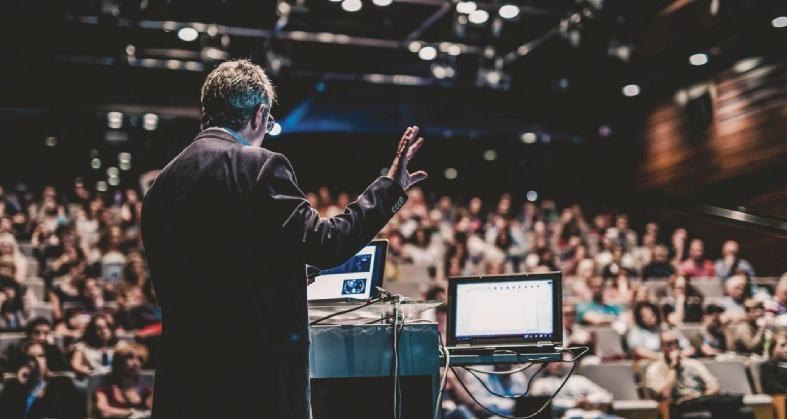
Il Congresso torna in Italia dopo 25 anni e lo fa con entusiasmo, secondo le parole di Françoise Nicolas, Presidente del Comitato Scientifico del Congresso UITIC, che dichiara: "Durante il 21° Congresso UITIC ci aspettiamo che i relatori provenienti da aziende calzaturiere, centri di ricerca, università o fornitori di servizi presentino nuove idee, scoperte o applicazioni nel campo della sostenibilità e dell'innovazione nel settore calzaturiero o in industrie affini". Rinforza il concetto e svela il tema dell’evento Sergio Dulio, presidente del Comitato organizzativo del Congresso UITIC: "Con UITIC 2023 vogliamo presentare al mondo della calzatura tutte le più importanti evoluzioni e tendenze tecnologiche che possono influenzare il modo in cui le scarpe vengono progettate e prodotte. Abbiamo preparato un programma di conferenze che copre tutti i temi rilevanti, dalla sostenibilità alla trasformazione digitale, alla logistica e alle catene di fornitura, con un'attenzione particolare al capitale umano di domani".
Ricorda un po’ di storia Yves Morin, Presidente UITIC: "UITIC International Footwear Congress è stato il primo appuntamento internazionale di settore. La prima edizione si è svolta nel 1972, esattamente 50 anni fa. I membri UTIC in tutto il mondo sono entusiasti di organizzare il 21° Congresso internazionale della calzatura UITIC in Italia, un Paese di indiscusso riferimento in termini di innovazione e tecnologia per l'industria della pelle e delle calzature".
La collaborazione tra Assomac e UITIC condurrà ad attivare molte sinergie positive. Grazie all’ampia partecipazione, potrà ristabilire la collaborazione fra professionisti del settore, fornitori di tecnologie, costruttori di macchine e altri stakeholder, garantendo una grande diversità di opinioni e di esperienze. Si avrà modo di confrontarsi sulle best practice offrendo l'opportunità unica di imparare dalle esperienze altrui. E ovviamente metterà in mostra le più recenti innovazioni tecnologiche.
Segnate in agenda le date: 20-22 settembre 2023 perché questo convegno UITIC “sarà il palcoscenico adatto per divulgare l’esperienza italiana capace di creare un sistema aperto e condiviso oltre a implementare le più moderne tecnologie a favore della competitività internazionale delle aziende del manifatturiero”, secondo le parole di Maria Vittoria Brustia.
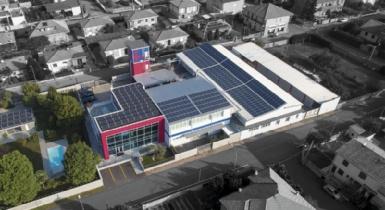
34 SIMAC TANNING TECH EVENTS
WHERE DOES TECHNOLOGY POINT FOR TOMORROW'S INDUSTRY?
Macro-themes animating the sector of machinery and technology dedicated to footwear, leather goods and leather.
edited by Andrea Favazzi - Assomac
Incoming regulations and generational change are the two most topical issues, which can be declined in various facets and with which entrepreneurs operating in the world of technological innovation destined for footwear, leather goods, leather, automotive and furniture must deal.
Looking at the big picture in which companies are moving, it seems quite clear how the fallout from the pandemic is manifesting its effects right now. This is the time when companies are experiencing how much the mobility of workers has actually decreased and how many more opportunities for customer contact are available to them anyway. A consideration that might seem unimportant, but is actually challenging every business organization. Not least, it affects the essential requirements that every piece of machinery must include: an advanced level of connectivity both to be able to be monitored, controlled and maintained remotely and for effective data collection. As noted several times before, machine data are and will be a crucial point for every production department both for automation and optimization issues and for conducting increasingly in-depth sustainability analyses.
EUROPEAN REGULATION
Machine interconnectivity is not only a pressing demand of the


market, but also a point of focus for the regulatory landscape. The Machinery Directive, which will soon take the form of a European Regulation and focus on worker safety, is being transformed. The last regulation issued in 2006, and which came into force in 2009, so 14 years ago, did not address in any of its parts the topic of interconnectedness of machines that subsequent technological evolution has brought to the fore. The next standards are expected to speak clearly on the issue and set minimum requirements for the industrial system to comply with.
A passage that gives us a good understanding of the enormous evolutions we have witnessed in just a few decades. Consider that in the first European directive, machine safety had to be handled entirely in an analog way; this was 1996. The second one took steps forward by allowing some parts to be managed software-side, as long as the programs met specific requirements. Today, the contribution of digital cannot be questioned, indeed it is a given, but it must in any case be regulated so as to ensure that there are no dangers to those who are physically near the interconnected and, perhaps, remotely controlled machinery.
A regulation that will finally shed light on many points and unravel many gray areas, providing companies with precise indications with respect to the parameters that a technology must take into account. This will free up resources and energy to be directed toward research and development of new solutions and innovations.

SIMAC TANNING TECH 35 INNOVATION TRENDS
GENERATIONAL CHANGE
The evolution of the technological paradigm just mentioned is accompanied by the issue of generational change, one of the aspects that will have to be observed very closely in the coming period. A generational change that forces us to think about machines from a different perspective, more suited to generations of users who have grown up in a digitized world dominated by smartphones.
Above all, a generational shift that affects technology companies and their business model. The exit from the scene of qualified personnel with years of experience behind them combines poorly with the complexity of today's world-which offers a variety of possibilities for innovation, but at the same time requires increasingly specific professionalism. The generational shift risks dispersing the valuable knowledge gained by an entire generation of professionals. The increasingly hectic market timelines and the limited availability of manpower in certain sectors often do not allow for gradual skill transitions. When one considers the evolving world of manufacturing, which is increasingly drained of technical expertise, one understands how manufacturing looks to the supply chain for an evolved, high-quality level of consulting to finalize projects.
To ground complex ideas, one no longer needs just the right advice with respect to the tool to be used, but a partner who accompanies brands through the stages of the production process and knows how to advise and resolve complexities or critical issues that arise along the way. Here's where generational change presents the bill and asks the sup-
ply chain, thus also those who produce technology, not to sell a tool but a service that, at the very least, must be consultative.
To make it clear: if an item involves stitching, those who make machines are no longer asked to provide the simple needle driven by a motor, but a complete solution to carry out the operation with ease, or, even better, the material already stitched. This is a process of servitization of the industry that requires companies, as we said, to have particularly well-trained personnel with considerable experience in the field.
The current situation is the result of the transition from a district world, in which the strength and credibility of Italian production grew and in which the entire supply chain was neighborly, and expertise lived across the street, to a globalized world in which distances between processing stages have led to a dispersion of knowledge that can probably only be overcome by new business models.
The crux for companies upstream in the supply chain, then, is to find ways to retain and pass on the knowledge and know-how they have accumulated over the years to put them to good use in a world increasingly looking for partners rather than suppliers.
AUTOMATION
To the two main themes to keep under the lens, a couple of corollaries can be added.
The growth of artificial intelligence and the explosion of sensor technology, which is increasingly refined and affordable, will surely push on the automation accelerator. What is holding back the complete success of that path is that the industry is not yet clear on what the actual directions of the market are. There is a lack of long-term vision with respect to what process changes will truly revolutionize the industry.
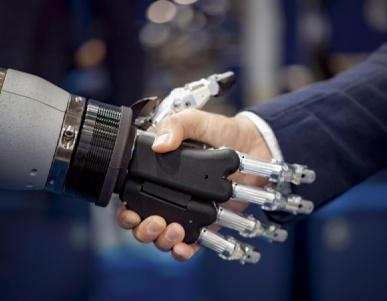
DIGITIZED CARE
If we talk about technology, we cannot but talk about breakdowns, downtime and service. Here, too, digitization has transformed the field of repair. On the one hand, increasingly advanced sensor technology and connectivity enable more effective machine diagnostics, including predictive diagnostics, and some remote interventions. On the other hand, augmented or virtual reality technologies have opened up prospects for increasingly advanced remote servicing. Finally, the possibility of storing a history of interventions made on a plant to make them immediately available to field technicians allows for timely interventions and easy analysis of situations.
Not to be underestimated is how much manuals have also changed: we rely more and more on visual content. Something that many companies are investing a lot in, despite being little recognized.
The industry continues to evolve very quickly, then, but it is time to decisively address some critical issues that may be slowing its pace.
36 SIMAC TANNING TECH INNOVATION TRENDS
DOVE PUNTA LA TECNOLOGIA PER L'INDUSTRIA DI DOMANI?
Macro-temi che animano il settore delle macchine e della tecnologia dedicata a calzature, pelletteria e pelle.
Normative in arrivo e cambio generazionale sono i due temi più attuali, declinabili in varie sfaccettature e con cui si devono confrontare gli imprenditori che operano nel mondo dell’innovazione tecnologica destinata a calzatura, pelletteria, pelle, automotive e arredo.
Se si guarda al quadro generale in cui le aziende si stanno muovendo, pare abbastanza chiaro come le ricadute della pandemia stiano manifestando proprio ora i loro effetti. È il momento in cui le aziende sperimentano quanto sia effettivamente diminuita la mobilità degli addetti ai lavori e quante possibilità in più di contatto con i clienti siano comunque a loro disposizione. Una considerazione che potrebbe apparire poco rilevante, ma che in realtà sta mettendo in discussione ogni organizzazione aziendale. Non di meno, incide sui requisiti essenziali che ogni macchinario deve prevedere: un livello di connettività avanzato sia per poter essere monitorati, comandati e manutenuti a distanza, sia per un’efficace raccolta dati. Come già più volte rimarcato, i dati macchina sono e saranno un punto cruciale per ogni reparto produttivo sia per questioni di automazione e ottimizzazione, sia per condurre analisi di sostenibilità sempre più approfondite.
REGOLAMENTO EUROPEO
L’interconnettività delle macchine non è solo una richiesta pressante del mercato, ma anche un punto di attenzione per il panorama normativo. È in via di trasformazione la Direttiva Macchine che prenderà presto la forma di Regolamento Europeo e si focalizzerà sulla sicurezza dei lavoratori. L'ultimo regolamento emanato nel 2006, ed entrato in vigore nel 2009, quindi 14 anni fa, non trattava in alcuna sua parte l’argomento dell’interconnessione delle macchine che la successiva evoluzione tecnologica ha portato alla ribalta. Le prossime norme dovrebbero esprimersi in modo chiaro sulla questione e fissare i requisiti minimi che il sistema industriale dovrà rispettare.
Un passaggio che ci fa ben comprendere le enormi evoluzioni a cui abbiamo assistito in pochi decenni. Si pensi che nella prima direttiva europea la sicurezza della macchina doveva essere gestita interamente in modo analogico, siamo nel 1996. La seconda fece dei passi in avanti consentendo che alcune parti potessero essere gestite lato software, a patto che i programmi rispondessero a requisiti specifici. Oggi l’apporto del digitale non può essere messo in discussione, anzi è scontato, ma deve in ogni caso essere regolamentato, così da assicurare che non sussistano pericoli per chi fisicamente si trova in prossimità del macchinario interconnesso e, magari, comandato a distanza. Un regolamento che farà finalmente chiarezza su molti punti e dipanerà tante zone grigie, fornendo alle aziende indicazioni precise rispetto ai parametri di cui una tecnologia dovrà tenere conto. Si libereranno, così, risorse ed energie da indirizzare verso la ricerca e lo sviluppo di nuove soluzioni e innovazioni.
CAMBIO GENERAZIONALE
L’evoluzione del paradigma tecnologico appena citato si accompagna al tema del cambio generazionale, uno degli aspetti che andrà osservato molto da vicino nel prossimo periodo. Un cambio generazionale che obbliga a pensare le macchine in ottica differente, più adatta a generazioni di utenti cresciuti in un mondo digitalizzato e dominato dagli smartphone. Soprattutto, un cambio generazionale che interessa le aziende costruttri-
ci di tecnologia e il loro modello di business. L'uscita di scena di personale qualificato e con anni di esperienza alle spalle mal si combina con la complessità del mondo attuale - che offre svariate possibilità di innovazione, ma al contempo richiede professionalità sempre più specifiche. Il passaggio generazionale rischia di disperdere la preziosa conoscenza acquisita da un’intera generazione di professionisti. Le tempistiche sempre più frenetiche del mercato e la poca disponibilità di manodopera in certi settori spesso non consentono passaggi di competenze graduali. Se si considera l'evoluzione del mondo della produzione, sempre più svuotato di competenze tecniche, si capisce come la produzione cerchi nella catena di fornitura un livello di consulenza evoluto e qualitativamente elevato che permetta di finalizzare i progetti.
Per mettere a terra idee complesse non serve più solo il consiglio giusto rispetto allo strumento da utilizzare, ma un partner che accompagni i marchi durante le fasi del processo produttivo e sappia consigliare e risolvere le complessità o criticità che si presentano lungo il percorso. Ecco che il cambio generazionale presenta il conto e chiede alla filiera, quindi anche a chi produce tecnologia, di non vendere uno strumento ma un servizio che, come minimo, deve essere consulenziale.
Per capirci: se un articolo prevede una cucitura, a chi fa macchine non viene più chiesto di fornire il semplice ago comandato da un motore, ma una soluzione completa a svolgere con semplicità l’operazione, oppure, ancora meglio, il materiale già cucito. Un processo di servitizzazione del settore che richiede alle aziende, come dicevamo, personale particolarmente preparato e dalla notevole esperienza sul campo.
La situazione attuale è il risultato del passaggio da un mondo distrettuale, in cui è cresciuta la forza e la credibilità della produzione italiana e in cui l'intera filiera era vicina di casa e le competenze vivevano al di là della strada, a un mondo globalizzato in cui le distanze fra le fasi di lavorazione hanno condotto a una dispersione delle conoscenze che probabilmente può essere superata solo da nuovi modelli di business.
Il punto cruciale per le aziende a monte della filiera, quindi, è trovare il modo di ritenere e trasmettere la conoscenza e il know-how che hanno accumulato negli anni per metterle a frutto in un mondo sempre più alla ricerca di partner più che di fornitori.
AUTOMAZIONE
Ai due temi principali da tenere sotto la lente, si possono aggiungere un paio di corollari.
La crescita dell’intelligenza artificiale e l’esplosione della sensoristica, sempre più raffinata e alla portata di tutti, sicuramente spingeranno sull'acceleratore dell'automazione. Ciò che frena il successo completo di tale percorso è il non avere ancora chiaro, da parte del settore, quali siano le effettive direttrici del mercato. Manca la visione di lungo periodo rispetto a quali cambiamenti di processo potranno realmente rivoluzionare il comparto.
ASSISTENZA DIGITALIZZATA
Se si parla di tecnologia non si può non parlare di guasti, fermi macchina e assistenza. Anche in questo caso la digitalizzazione ha trasformato l'ambito della riparazione. Da un lato, la sensoristica e la connettività sempre più evoluta consentono di eseguire una più efficace diagnostica delle macchine, anche predittiva, e alcuni interventi a distanza. Dall'altro lato, le tecnologie di realtà aumentata o virtuale hanno dischiuso prospettive di assistenza da remoto sempre più avanzate. Infine, la possibilità di archiviare uno storico degli interventi effettuati su un impianto per renderli immediatamente disponibili ai tecnici sul campo consente tempestività negli interventi e facilità di analisi delle situazioni. Da non sottovalutare quanto sia cambiata anche la manualistica: ci si affida sempre più a contenuti visivi. Un aspetto su cui molte aziende stanno investendo parecchio, nonostante venga poco riconosciuto.
Il settore continua a evolvere molto velocemente, quindi, ma è tempo di affrontare con decisione alcune criticità che potrebbero rallentarne il passo.
SIMAC TANNING TECH 37 INNOVATION TRENDS
A NETWORK OF COLLABORATIONS TO GROW THE FOOTWEAR, LEATHER GOODS AND TANNERY TECHNOLOGY SECTOR
RetImpresa, Assolombarda, PIN, Sustainable Leather Foundation: the sector's collaboration with subjects that will make Italian companies grow in terms of visibility as well as training and sustainability is increasingly branched.
Simac Tanning Tech is undoubtedly the premier event where the world of Italian and international technology dedicated to fashion accessories, leather, automotive and furniture can showcase itself. But the world keeps turning even after the annual event organized by Assomac. This is why the national association that aggregates and represents Italian manufacturers of footwear, leather goods and tannery technology has continued to weave a dense network of collaborations. The intent is to create a set of relationships that can reward the great work of entrepreneurs focused on innovation.

Among the first initiatives was the memorandum of understanding between Assolombarda and Assomac aimed at revitalizing the mechano-footwear sector.

Specifically, Assolombarda, thanks to its expertise, proposes to
support Assomac, including through the activity of its service company for the implementation of tailor-made projects, on three main lines: training, innovation, and sustainability. To further cement the agreement and collaboration, it has been established that Assomac will host, in its headquarters, the offices of the local Assolombarda headquarters.
As far as training is concerned, Assolombarda will support Assomac on two main lines of action: the creation, with local ITSs, of post-diploma training paths for young people, and the elaboration of specific training paths with a view to retraining towards the most sought-after professions in the mechano-footwear sector. With a view to innovation, Assolombarda will support Assomac in identifying solutions suitable for the small businesses that represent this production sector of excellence, from traceability systems to
38 SIMAC TANNING TECH NEWS
THE AGREEMENT BETWEEN ASSOMAC AND ASSOLOMBARDA L’ACCORDO FRA ASSOMAC E ASSOLOMBARDA
Industry 4.0 and the strengthening of digital tools. On the topic of sustainability, Assolombarda will encourage the development of projects in the circular economy in the implementation of the best solutions to distinguish footwear industry machinery as "green".
Networking to emphasize the importance of technological innovation and support the success of Italian machines and technologies in the world is the key concept that also guided Assomac's decision to join RetImpresa: to continue to invest in a network between companies propaedeutic to promote and support innovation, Digital Transformation, internationalization and training for all manufacturers of tanning, footwear and leather goods technologies.
RetImpresa is Confindustria's agency (the main association representing manufacturing and service companies in Italy) for the representation and promotion of business aggregations and networks. A task carried out with tools such as the "network contract," a lever for strengthening supply chain cooperation, enhancing Territories, promoting the dimensional and competitive growth of SMEs and promoting economies of scale and synergies for access to financing and investment in innovation and internationalization.
In February this year, Assomac also signed an agreement with PIN, a center for higher education and research and development services participated by the University of Florence. The goal is to carry out joint actions to foster the activities of Assomac companies on the topics of Research, Digitization and Training. Specifically, PIN, thanks to its expertise, will support Assomac in all innovation processes through targeted focuses on the main technological trends. It will support it in the implementation of R&D, Innovation and Internationalization projects through participation in calls for proposals, EU programs and international tenders to foster the growth of corporate human resources' skills with continuous training. Assomac, for its part, through the analysis of the needs of its members, will identify the main strategic focuses, particularly related to digitization processes and the themes of sustainability, circular economy and Metaverse. More attention will be paid to the implementation of higher education paths capable of accompanying the value creation processes of companies and strengthening the technological culture and skills of human resources.
Finally, it is worth mentioning the activation of the collaboration with Sustainable Leather Foundation, which with its SLF Transpar-
ency Dashboard™ and a certification standard wants to convey to the consumer, in a clear way, the data related to the sustainability of leathers.
Through this agreement, Assomac continues its commitment to provide a useful technological contribution to direct processes toward quality production with reduced environmental impact and toward social development. Assomac's 'Supplier of Sustainable Technologies' program, in particular the Green Label, aims to promote and share, within the international fashion supply chain, issues related to the intelligent use and management of natural energy and water resources, as well as the safety and well-being of workers, with the aim of qualifying its production processes as sustainable, through a scientific approach and a strong commitment also to training. In SFL projects, Assomac finds valuable support for the Association's vision.
An important and ramified collaborative facility that increasingly pushes the accelerator on projects capable of growing the sector in terms of both visibility and training and sustainability.
UNA RETE DI COLLABORAZIONI PER FAR
CRESCERE IL SETTORE DELLE TECNOLOGIE PER CALZATURA, PELLETTERIA E CONCERIA
RetImpresa, Assolombarda, PIN, Sustainable Leather Foundation: è sempre più ramificata la collaborazione del comparto con realtà che faranno crescere le imprese italiane sia in termini di visibilità che di formazione e sostenibilità.
Simac Tanning Tech è senza dubbio l’appuntamento principe in cui il mondo della tecnologia italiana e internazionale dedicata agli accessori moda, pelle, automotive e arredo può mettersi in mostra. Ma il mondo continua a girare anche dopo l’evento annuale organizzato da Assomac. È per questo motivo che l’Associazione nazionale che aggrega e rappresenta i costruttori italiani di tecnologie per calzature, pelletteria e conceria ha continuato a tessere una fitta rete di collaborazioni. L’intento è quello di creare un insieme di relazioni che possa premiare il grande lavoro dell’imprenditoria focalizzata sull’innovazione.
SIMAC TANNING TECH 39 NEWS
Tra le prime iniziative si segnala il protocollo d’intesa tra Assolombarda e Assomac finalizzato al rilancio del settore meccano-calzaturiero. Nello specifico, Assolombarda, grazie alle sue competenze, si propone di affiancare Assomac, anche attraverso l’attività della propria società di servizi per la realizzazione di progetti tailor-made, su tre direttrici principali: la formazione, l’innovazione e la sostenibilità. A cementare ulteriormente l’accordo e la collaborazione, è stato stabilito che Assomac ospiterà, nella sua sede, gli uffici della sede locale di Assolombarda.
Per quel che riguarda la formazione, Assolombarda supporterà Assomac su due principali linee di azione: la creazione, con gli ITS del territorio, di percorsi formativi post-diploma per i giovani, e l'elaborazione di specifici percorsi formativi in un’ottica di riqualificazione verso le professionalità più ricercate dal comparto meccano-calzaturiero. In ottica di innovazione, Assolombarda supporterà Assomac nell’individuare soluzioni adatte alle piccole imprese che rappresentano questo comparto produttivo di eccellenza, dai sistemi di tracciabilità, fino a Industry 4.0 e al potenziamento degli strumenti digitali. Sul tema sostenibilità Assolombarda favorirà lo sviluppo di progetti nell’ambito dell’economia circolare nella realizzazione delle migliori soluzioni per distinguere i macchinari per l’industria calzaturiera come “green”.
Fare rete per rimarcare l’importanza dell’innovazione tecnologica e supportare il successo delle macchine e tecnologie italiane nel mondo è il concetto chiave che ha guidato anche la scelta di Assomac di entrare a far parte di RetImpresa: per continuare ad investire in un network tra aziende propedeutico a promuovere e sostenere l'innovazione, la Digital Transformation, l'internazionalizzazione e la formazione per tutti i produttori di tecnologie per concia, calzature e pelletteria. RetImpresa è l’Agenzia di Confindustria per la rappresentanza e la promozione di aggregazioni e reti d’impresa. Compito svolto con strumenti come il “contratto di rete”, una leva per rafforzare la cooperazione di filiera, valorizzare i Territori, favorire la crescita dimensionale e competitiva delle PMI e promuovere economie di scala e sinergie per l’accesso ai finanziamenti e per gli investimenti in innovazione e internazionalizzazione.
A febbraio di quest’anno, Assomac ha anche siglato un accordo con PIN, centro di alta formazione e servizi di ricerca e sviluppo
partecipato dall’Università di Firenze. L’obiettivo è realizzare azioni congiunte per favorire le attività delle imprese di Assomac sui temi della Ricerca, Digitalizzazione e Formazione.
Nello specifico, PIN, grazie alle sue competenze, affiancherà Assomac in tutti i processi di innovazione attraverso focus mirati sui principali trend tecnologici. La supporterà nella realizzazione di progetti di R&D, Innovazione e Internazionalizzazione attraverso la partecipazione a bandi, programmi comunitari e tender internazionali per favorire la crescita delle competenze delle risorse umane aziendali con la formazione continua. Assomac, da parte sua, attraverso l’analisi dei fabbisogni delle sue associate, individuerà i principali focus strategici, in particolare legati ai processi di digitalizzazione e ai temi di sostenibilità, economia circolare e Metaverso. Maggiore attenzione verrà dedicata alla realizzazione di percorsi di alta formazione capaci di accompagnare i processi di creazione del valore delle imprese e rafforzare la cultura tecnologica e le competenze delle risorse umane.
Da citare, infine, l’attivazione della collaborazione con Sustainable Leather Foundation, che con il suo SLF Transparency Dashboard™ e uno standard di certificazione vuole trasmettere al consumatore, in modo chiaro, i dati relativi alla sostenibilità dei pellami.
Grazie a questo accordo, Assomac continua il suo impegno nel fornire un contributo tecnologico utile a indirizzare i processi verso produzioni di qualità a ridotto impatto ambientale e verso lo sviluppo sociale. Il programma Assomac ‘Fornitore di Tecnologie Sostenibili’, in particolare la Green Label, ha lo scopo di promuovere e condividere, all'interno della filiera internazionale della moda, le tematiche relative all'uso e alla gestione intelligente delle risorse naturali energetiche e dell'acqua, nonché alla sicurezza e al benessere dei lavoratori, con l'obiettivo di qualificare i propri processi produttivi come sostenibili, attraverso un approccio scientifico e un forte impegno anche formativo. Nei progetti SFL, Assomac trova un valido supporto alla visione dell’Associazione.
Un impianto di collaborazioni importante e ramificato che sempre più spinge l’acceleratore su progetti capaci di far crescere il settore sia in termini di visibilità che di formazione e sostenibilità.
40 SIMAC TANNING TECH NEWS

FROM INDIA TO BRAZIL TO THE UNITED ARAB EMIRATES, A BUSY FIRST QUARTER FOR GEMATA
The Italian company presented its technologies at major international events at the beginning of the year
The first three months of 2023 were very busy for Gemata, a world leader in leather finishing. The company participated in three international events related to the leather industry: IILF in India, Fimec in Brazil, and APLF in the United Arab Emirates. After a forced stop caused by the pandemic, Gemata returned this year to IILF, the leather fair in the important tanning district of Chennai. The event, which took place in the first days of February, was enthusiastically attended both in general terms and in specific turnout at the booth.
"For Gemata it was an excellent opportunity to present, finally live, to the Indian market GREENSTARs, the latest roller technology we have developed," explained deputy director Mauro Pellizzari. "The feedback we got was very positive."
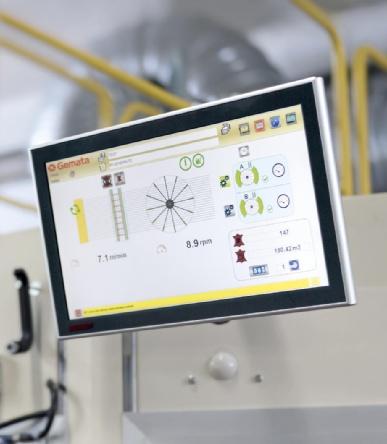
The Trissino-based company is also very pleased with the results obtained at FIMEC, the event held March 7-9 in Brazil. Compared to the previous edition, which had been rather sluggish, this year's saw a turnout equal to the pre-pandemic years.
Visits to the booth were numerous: according to deputy director Mauro Pellizzari, who was present at the fair along with colleagues from sister company Gemata do Brasil, there were several reasons for this great success.
"First of all, the Gemata brand is universally recognized in the finishing industry, and it alone is able to attract visitors. In addition, our booth was the only one displaying machinery: as a result, many came to see our spray technology and were also interested in the new economizer we recently developed." The visitors, mostly Bra-
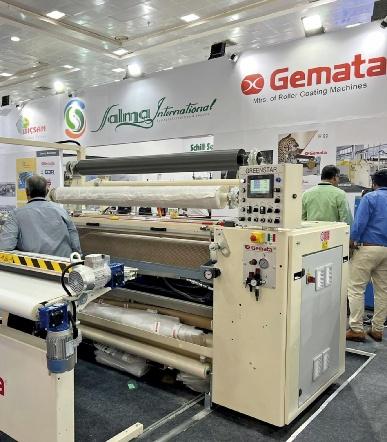 THE GEMATA BOOTH AT THE INDIAN IILF TRADE FAIR IN CHENNAI LO STAND GEMATA ALLA FIERA INDIANA IILF DI CHENNAI
THE GEMATA BOOTH AT THE INDIAN IILF TRADE FAIR IN CHENNAI LO STAND GEMATA ALLA FIERA INDIANA IILF DI CHENNAI
42 ARSTANNERY TECHNOLOGY
A DETAIL OF THE ECONOMIZER UN DETTAGLIO DELL’ECONOMIZZATORE
zilians with sporadic exceptions of Peruvians, Uruguayans and Colombians, inquired about products offering finishing technologies typical of their area, thus sprays and roller machines such as the JUMBOSTAR. Curiosity was also registered about GREENFINISH, a sign that Brazilian tanners are beginning to inquire about alternative types of finishing.
"In general, the leather market in Brazil is showing very positive trends, especially in the automotive and furniture sectors. Tanneries express an optimistic attitude and expect investments in the short term.” Pellizzari concludes.
A few days after FIMEC, the company also participated along with the Italian collective in APLF in Dubai, March 13-15. "This second edition in the Emirates had a more moderate turnout than in 2022: nevertheless, we managed to collect interesting contacts," said Mauro Pellizzari. "Our booth was visited mainly by Indians, Iranians and Kenyans, but also by tanneries that were themselves exhibitors at the fair."
Tanners, especially those from India, showed particular interest in GREENFINISH technology: since its launch three years ago, finishing with release paper is now popular with many Italian tanneries and has enabled them to reduce production costs.
"Indian tanneries also need to increase their competitiveness and reduce costs in order not to lose market," Pellizzari explains.
"That's why they took advantage of APLF to learn about a technology that is still little known in their areas."
Now the company is preparing for what is the most important international event for tanning technology, namely SIMAC TANNING TECH in Milan, which will take place Sept. 19-21.
DALL’INDIA AL BRASILE FINO AGLI EMIRATI ARABI, UN PRIMO TRIMESTRE INTENSO PER GEMATA
L’azienda italiana ha presentato le sue tecnologie alle principali manifestazioni internazionali di inizio anno
I primi tre mesi del 2023 sono stati molto intensi per Gemata, leader mondiale nella rifinizione conciaria. L’azienda ha partecipato a tre eventi internazionali legati al settore della pelle: IILF in India, Fimec in Brasile e APLF negli Emirati Arabi Uniti.
Dopo lo stop forzato causato dalla pandemia, quest’anno Gemata è tornata ad IILF, la fiera della pelle nell’importante distretto conciario di Chennai. L’evento, che si è svolto nei primi giorni di febbraio, ha registrato una partecipazione entusiasmante sia in termini generali sia di afflusso specifico allo stand.
“Per Gemata si è trattata di un’occasione ottima per presentare, finalmente dal vivo, al mercato indiano GREENSTARs, l’ultima tecnologia a rullo che abbiamo sviluppato” ha spiegato il vice-direttore Mauro Pellizzari. “Il riscontro che abbiamo avuto è stato molto positivo”.
L’azienda di Trissino si ritiene molto soddisfatta anche dei risultati ottenuti a FIMEC, l’evento che si è tenuto dal 7 al 9 marzo in Brasile. Rispetto all’edizione precedente, che era stata piuttosto fiacca, quella di quest’anno ha visto un’affluenza pari agli anni precedenti alla pandemia.
Le visite allo stand sono state numerose: secondo il vice-direttore Mauro Pellizzari, presente in fiera insieme ai colleghi della consociata Gemata do Brasil, i motivi di questo grande successo sono stati diversi.
“Prima di tutto, il marchio Gemata è universalmente riconosciuto nel settore della rifinizione e già da solo è in grado di attrarre visitatori. In aggiunta, il nostro stand era l’unico a esporre un macchinario: di conseguenza, molti
sono venuti a vedere la nostra tecnologia a spruzzo e si sono dimostrati interessati anche al nuovo economizzatore che abbiamo sviluppato di recente”. I visitatori, in maggioranza brasiliani con sporadiche eccezioni di peruviani, uruguayani e colombiani, hanno richiesto informazioni sui prodotti che offrono tecnologie di rifinizione tipiche del loro territorio, quindi spruzzi e macchine a rullo come la JUMBOSTAR. È stata registrata curiosità anche sulla GREENFINISH, segno che i conciatori brasiliani stanno iniziando ad informarsi su tipologie di rifinizioni alternative.
“In generale, il mercato della pelle in Brasile mostra trend molto positivi, soprattutto nei settori automotive e arredamento”, conclude Pellizzari. “Le concerie esprimono un atteggiamento ottimista e prevedono investimenti nel breve periodo”.
A qualche giorno di distanza da FIMEC, l’azienda ha partecipato assieme alla collettiva italiana anche ad APLF a Dubai, dal 13 al 15 marzo.
“Questa seconda edizione negli Emirati ha avuto un’affluenza più moderata rispetto al 2022: nonostante ciò siamo riusciti a raccogliere contatti interessanti”, ha dichiarato Mauro Pellizzari. “Il nostro stand è stato visitato prevalentemente da indiani, iraniani e kenioti, ma anche da concerie che erano a loro volta espositori in fiera”.
I conciatori, soprattutto quelli provenienti dall’India, hanno dimostrato un interesse particolare nei confronti della tecnologia GREENFINISH: dal lancio avvenuto tre anni fa, la rifinizione con carta release è ormai diffusa presso molte concerie italiane ed ha permesso loro di ridurre i costi di produzione.
“Anche le concerie indiane necessitano di aumentare la loro competitività e di ridurre i costi per non perdere mercato”, spiega Pellizzari. “Per questo hanno approfittato di APLF per informarsi su una tecnologia che è ancora poco nota nelle loro aree”.
Ora l’azienda si sta preparando a quello che è l’appuntamento più importante a livello internazionale per la tecnologia conciaria, ossia SIMAC TANNING TECH a Milano, che si svolgerà dal 19 al 21 settembre.
GEMATA acquires majority stake in COS.T.A.
In recent weeks GEMATA (www.gemata.com), the world’s leading supplier of industrial machinery for finishing leather and involved in textiles and glass applications too, completed the acquisition of a majority stake in COS.T.A., a leading equipment manufacturer for advanced technologies in automotive leather, technical textiles, and the furniture industry (www.costaimpianti.com). The transaction aims of increase the value that the two companies already bring to the market in terms of technological expertise, innovative solutions and service and support in the sectors in which they operate, particularly the finishing and upgrading of leather and technical textiles. Within a common strategic project, the two companies will continue to operate in the market under their brands, each with its products, which differ in features and functionality.
GEMATA acquisisce la maggioranza di COS.T.A.
Nelle scorse settimane GEMATA (www.gemata.com), società leader nel mondo per la fornitura di macchinari industriali per la rifinizione della pelle, tessuti e vetro, ha completato l’acquisizione della maggioranza di COS.T.A., azienda di primo piano nella costruzione di impianti per le tecnologie avanzate nel settore della pelle per automotive, nei tessuti tecnici e nel settore dell’industria del mobile (www.costaimpianti.com).
L’operazione ha lo scopo di aumentare il valore che le due aziende già portano al mercato, in termini di competenze tecnologiche, soluzioni innovative, e servizio e assistenza nei settori in cui operano, in particolare la rifinizione e nobilitazione delle pelli e dei tessuti tecnici.
All’interno di un progetto strategico comune, le due aziende continueranno ad operare sul mercato con il proprio marchio e ognuna con i propri prodotti, i quali si differenziano per caratteristiche e funzionalità.
ARSTANNERY 43 TECHNOLOGY
ALL THE ADVANTAGES OF BERGI’S BELT BUFFING MACHINE FOR WHOLE HIDES
Machining data from the Attiva 3200 model confirm high productivity and superior quality results
Bergi's Attiva 3200 is the latest generation of belt buffing machine for whole hides. Given the excellent results, in terms of finished product quality, obtained with the size 1800, the Bergi team decided to produce the size 3200 to complete the belt buffing machines range. As with the size 1800, this machine has a wide opening of both the upper protection guard and the leather introduction system; these two features facilitate machine maintenance and cleaning operations, making them safer and faster.

Very encouraging are the productivity and quality data recorded and collected by user customers, who, once they have found the right 'recipe' for their processing, confirm improvements in at least one of the two points. For example, some data show that with the same type of leather processed, the Attiva 3200 model allows the same final result to be obtained with just one process instead of the two made with a traditional model. Other data collected confirm the greater durability of the buffing paper with which a much greater number of hides can be processed than with a traditional model, in some cases even more than double the number of hides. Another strong point, which is fundamental for a top-quality finished product, is the complete absence of vibrations when working. At-
tiva 3200 has also been used to process nubuck articles, obtaining excellent results as confirmation of its high-quality construction. Attiva 3200 is strongly recommended for articles that are more sensitive to sudden changes in temperature, as having the possibility of working at lower revs, compared to a traditional roller model, a more stable temperature is maintained in the working area, thanks also to the paper that dissipates more heat.
When analysing the belt working mode, it can be seen that, compared to the conventional buffing roller, the belt, due to its larger surface area, removes more material and discharges dust better, thus keeping it cleaner. A further advantage is that with the belt, the use of glue and base paper is no longer necessary, thus generating less waste over time.
A "hidden" feature of the Attiva 3200 is the patented automatic paper change release system; this optional accessory provides for the automatic release of the "cantilever" by means of a hydraulic system, thus eliminating the use of the compressed air gun. This accessory further facilitates paper change operations and reduces the possibility of paper snagging during insertion as the mechanical elements used in manual paper changing are removed.
44 ARSTANNERY TECHNOLOGY
ATTIVA 3200, BELT BUFFING MACHINE FOR WHOLE HIDES LA SMERIGLIATRICE A NASTRO ATTIVA 3200
TUTTI I VANTAGGI DELLA SMERIGLIATRICE
A NASTRO PER PELLI INTERE DI BERGI
I dati di lavorazione del modello Attiva 3200 confermano una produttività elevate e risultati qualitativi superiori
La smerigliatrice Attiva 3200 di Bergi è il modello a nastro, di ultima generazione, per pelli intere. Visti gli ottimi risultati, in termini di qualità del prodotto finito, ottenuti con la taglia 1800 il team di Bergi ha deciso di realizzare la taglia 3200 per completare la gamma di smerigliatrici a nastro. Come per la taglia 1800 questo macchinario può vantare un’ampia apertura sia del carter di protezione superiore che del sistema di introduzione delle pelli; queste due caratteristiche agevolano le operazioni di manutenzione e pulizia della macchina rendendole più sicure e rapide. Molto incoraggianti sono i dati relativi a produttività e qualità rilevati e raccolti dai clienti utilizzatori, che una volta trovata la “ricetta” adatta alla propria lavorazione confermano dei miglioramenti in almeno uno dei due punti. Alcuni dati, ad esempio, dimostrano che a parità di pelle lavorata il modello Attiva 3200 permette di ottenere lo stesso risultato finale con un solo passaggio al posto dei due effettuati con un modello tradizionale. Altri dati raccolti confermano la maggior durata della carta da smerigliatura con la quale si riescono a lavorare un numero molto più alto di pelli rispetto ad un modello tradizionale, in certi casi anche più del doppio delle pelli. Un altro punto di forza, fondamentale per un prodotto finito di livello, è la completa assenza di vibrazioni in fase di lavoro. Attiva 3200 è stata utilizzata anche per lavorare degli articoli in nabuk, ottenendo ottimi risultati come conferma dell’alta qualità costruttiva. Attiva 3200 è fortemente indicata per gli articoli più sensibili agli sbalzi di temperatura, in quanto avendo la possibilità di lavorare a giri più bassi, rispetto ad un modello tradizionale a rullo, si mantiene una temperatura più stabile nella zona di lavoro, grazie anche alla carta che dissipa maggiormente il calore.
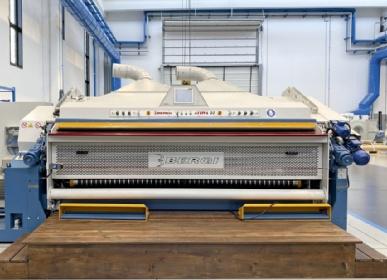
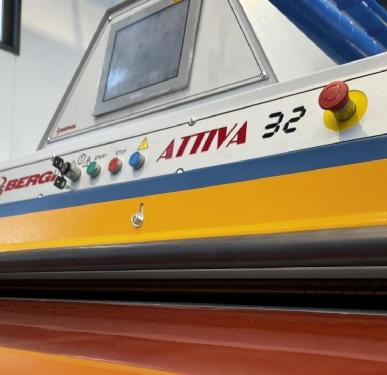
Analizzando la modalità di lavorazione a nastro si nota che, rispetto al tradizionale rullo smerigliatore, il nastro, grazie alla maggior superficie, asporta una quantità maggiore di materiale e scarica meglio la polvere, mantenendosi così più pulito. Un ulteriore vantaggio è che con il nastro non è più necessario l’utilizzo della colla e della carta base, generando così meno rifiuti nel tempo.
Una caratteristica “nascosta” di Attiva 3200 è il sistema, brevettato, di sblocco automatico del cambio carta; questo accessorio opzionale prevede lo sblocco automatico del “cantilever” tramite un sistema idraulico, eliminando così l’utilizzo della pistola ad aria compressa. Questo accessorio agevola ulteriormente le operazioni di cambio della carta e riduce le possibilità di impigliare la carta in fase di inserimento in quanto vengono rimossi degli elementi meccanici utilizzati nel cambio manuale.
ARSTANNERY 45 TECHNOLOGY
ALL INVITED TO THE AS GREEN TECHNOLOGY SHOWROOM
AS GREEN TECHNOLOGY, an innovative company in the field of tanning equipment, recently inaugurated an exclusive in-house showroom at its headquarters located in Montopoli in Val D'arno (Pisa) for displaying and demonstrating the solutions offered to customers. The futuristic space accommodates, in a dynamic and engaging environment, the most cutting-edge technologies, allowing visitors to "touch with their hands" and concretely appreciate the operation and effectiveness of different automation systems. Particular attention has been paid to the integration of a section dedicated to virtual reality, creating a true immersive experience for viewing the most significant and effective systems built around the world. This innovation will make it possible to optimize the design, implementation and maintenance phases of plants, thus opening up new development prospects for both customers and the company itself. Filippo Sani, CEO of AS GREEN, says he is extremely proud of the introduction of this futuristic technology and invites all potential buyers to visit the company's headquarters, "Only then will they be able to see for themselves the extraordinary opportunities offered by the use of our innovative solutions."
TUTTI INVITATI ALLO SHOWROOM DI AS GREEN TECHNOLOGY
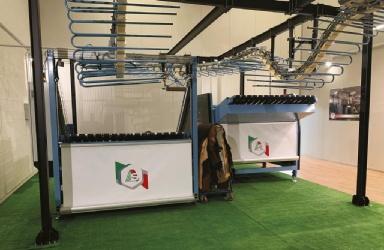
Uno spazio dinamico attrezzato con le tecnologie più all’avanguardia che permette ai clienti di osservare il funzionamento dei vari sistemi di automazione anche attraverso la realtà virtuale
AS GREEN TECHNOLOGY, un'innovativa azienda nel settore degli impianti conciari, ha recentemente inaugurato presso la propria sede di Montopoli in Val D'arno (Pisa) un esclusivo showroom interno per l'esposizione e la dimostrazione delle soluzioni offerte ai clienti. L'avveniristico spazio accoglie, in un ambiente dinamico e coinvolgente, le tecnologie più all'avanguardia, permettendo ai visitatori di “toccare con mano” ed apprezzare in concreto il funzionamento e l'efficacia dei diversi sistemi di automazione. Particolare attenzione è stata prestata all'integrazione di una sezione dedicata alla realtà virtuale, creando una vera e propria esperienza immersiva per la visione degli impianti più significativi ed efficaci realizzati in giro per il mondo. Questa innovazione consentirà di ottimizzare le fasi di progettazione, realizzazione e manutenzione degli impianti, aprendo così nuove prospettive di sviluppo sia per i clienti che per l'azienda stessa. Filippo Sani, CEO di AS GREEN, si dice estremamente orgoglioso dell'introduzione di questa avveniristica tecnologia e invita tutti i potenziali acquirenti a visitare la sede aziendale: “Solo così potranno rendersi conto di persona delle straordinarie opportunità offerte dall'utilizzo delle nostre soluzioni innovative”.
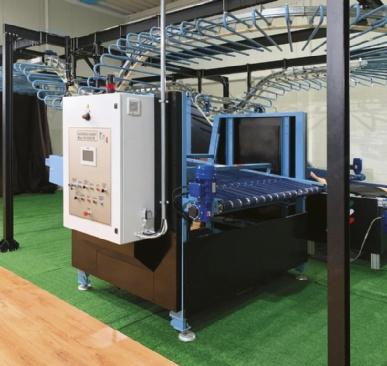
A dynamic space equipped with the latest technology that allows customers to observe the operation of various automation systems even through virtual reality
46 ARSTANNERY TECHNOLOGY
SOME GLIMPSES OF THE SHOWROOM ALCUNI SCORCI DELLO SHOWROOM
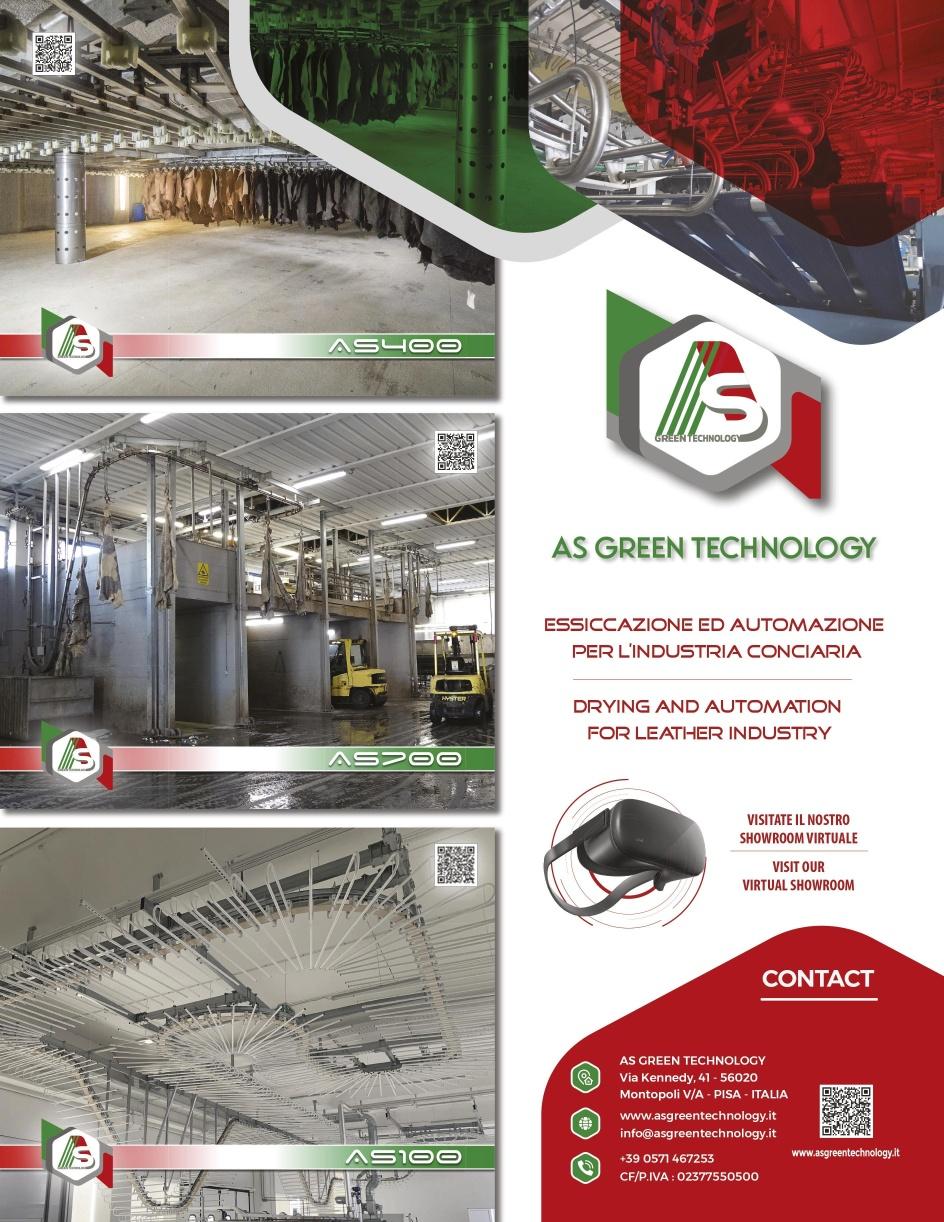
ESCOMAR INTRODUCES THE MODEL "PCR-e8" ON THE MARKET
OPERATIONAL
New application programs allow for easy and intuitive management, and also allow a constant control of the various functions of the machine even from remote device thanks to a specific software developed by Escomar Italia.
ESCOMAR LANCIA SUL MERCATO IL MODELLO “PCR-e8"
La nuova pressa idraulica in continuo per wet blue è ancora più potente ed efficiente
Da sempre attenta al miglioramento continuo delle sue presse in continuo per asciugare le pelli wet-blue, Escomar Italia Srl lancia sul mercato il modello elettroidraulico "PCR-e8”. Rispetto alle versioni precedenti la nuova pressa presenta una forza di asciugatura superiore che assicura prestazioni più elevate.
Escomar Italia Srl, always focused in improving his through-feed sammying machines for wet blue, is introducing into the market the electro-hydraulic model “PCR-e8”. Compared to previous model, the PCRe8 new series is the most powerful sammying machine ever produced in the leather market, aims to provide customers with superior performances. In brief the main new improvements are:
DRYING
The pressing system, completely controlled by the hydraulic unit, is able to develop the highest power pressure in the market distributed in 4 independent bridges.
WORKING SPEED
Thanks to the high pressure, the Escomar PCR-e8 allows to work at high speeds, with considerable production benefits.
LOW ELECTRIC CONSUMPTION with ELECTRO-DRIVE TRANSPORT
Transport speed with electric motovariator controlled by inverter, which ensures a steady and precise speed, and a remarkable reduction of electric power consumption.
LOW NOISE EMISSIONS
Thanks to the electro-drive system, the PCR-e8 is the low noising sammying machine at present in the market.
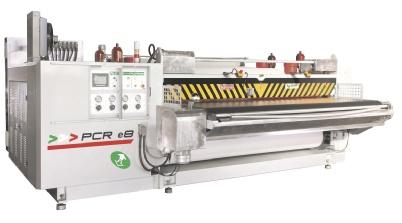
STRETCHING
Because of its excellent results, the stretching system is the same installed on the PCR-e7, guaranteeing the best stretching on the hides.
I principali miglioramenti sono così sintetizzabili:
ASCIUGATURA
Il sistema di pressatura, completamente controllato dalla centralina idraulica, è in grado di sviluppare la più alta potenza di pressione di asciugatura del mercato distribuita su 4 ponti indipendenti.
VELOCITÀ DI LAVORO
Grazie all'alta pressione, la Escomar PCR-e8 permette di lavorare a velocità elevate, con notevoli vantaggi produttivi.
BASSO CONSUMO ELETTRICO con TRASPORTO ELETTRO-DRIVE Velocità di trasporto con motovariatore elettrico controllato da inverter, che garantisce una velocità costante e precisa e una notevole riduzione del consumo di energia elettrica.
BASSE EMISSIONI SONORE
Grazie al sistema di trasmissione elettrica, la PCR-e8 è la pressa più silenziosa attualmente presente sul mercato
STENDITURA
Il sistema di stenditura delle pelli è lo stesso installato sulla PCR-e7 e garantisce la migliore distensione possibile.
FUNZIONAMENTO
Nuovi programmi applicativi consentono una gestione facile e intuitiva, permettendo un controllo costante delle varie funzioni dell’impianto anche da dispositivo remoto grazie a un software specifico sviluppato da Escomar Italia.
The new through-feed sammying machine for wet blue is more powerful and efficient
48 ARSTANNERY TECHNOLOGY

THE NEW LIME SPLITTING MACHINE BY MOSCONI

ANTARES 3.0 has an innovative automatic and patented auto-feeding introduction system
The new Antares splitting machine 3.0 Lime introduced by Mosconi has been designed to simplify the problems due to the lack of skilled and expert operators normally required for this particularly onerous operation. Its special feature is that the machine can be fed by a belt which brings the hides to the introduction system: it will then be the innovative system (patented) which will automatically convey and spread the hide presenting it at the splitting point. “The most interesting and productive uase is to put the ANTARES splitting machine in line with the fleshing machine through a belt, thus obtaining a constant production flow without downtime” explain from the company.
THE HEAD
The head is equipped with independent gauge roller counter-roller supports. Individual movement of each counter-roller is possible via centesimal brushless motors to profile the gauge roller. This system allows accurate thickness precision results as the gauge roller adapts to any type of leather to be split.
LOWER GROUP (BENCH)
Innovative system (patented) works without scrapers, rings-roller and rubber cylinder. The new patent provides for an inflatable hose with a special design that allows the split (even if very thin) to come out without any hitches which, in the traditional version, are found between the rings roller and the rings-roller supports. By increasing or decreasing the air pressure in the inflatable hose it is possible to adapt the machine to any leather to be divided, both light and heavy.
FEEDING SYSTEM
The hides are conveyed to the machine through a belt, so the operators only have to check that they are centered and stretched out, the rest is done by Antares. The system is made up of 3 upper spreading cylinders and 3 lower rubberized support cylinders which direct the well-stretched leather towards the gauge roller and the blade.
LA NUOVA SPACCATRICE AUTOMATICA PER PELLI IN TRIPPA DI MOSCONI
Il modello ANTARES 3.0 ha un sistema di alimentazione automatico brevettato
La nuova spaccatrice Antares 3.0 per pelli in trippa di Mosconi è stata studiata principalmente per semplificare le problematiche dovute alla mancanza di operatori specializzati ed esperti normalmente richiesti per questa lavorazione. La sua particolarità consiste nel fatto che può essere alimentata direttamente dal nastro trasportatore che porta le pelli al sistema di introduzione (brevettato) sul quale la pelle distesa viene appoggiata; sarà poi il sistema che automaticamente introdurrà e allargherà la pelle presentandola al cilindro di calibratura e alla lama. “L’utilizzo più produttivo ed interessante è quello di posizionare la spaccatrice ANTARES in linea con la scarnatrice interponendo un tappeto tra le due macchine, così facendo si avrà un flusso di produzione costante evitando tempi morti” spiegano da Mosconi.
TESTA
La testa della spaccatrice è dotata di supporti contro-rulli del cilindro calibratore indipendenti. È possibile il movimento individuale di ogni contro-rullo tramite motori brushless centesimali per profilare il cilindro calibratore, la regolazione eseguita da touch screen è sempre visualizzabile per ogni singolo controrullo. Questo sistema permette accurati risultati di precisione dello spessore in quanto il cilindro calibratore si adatta a qualsiasi tipo di pelle da spaccare.
GRUPPO INFERIORE (BANCO)
Sistema innovativo (brevettato) con eliminazione di schienale, rullini e cilindro gomma. Il nuovo brevetto prevede una manichetta gonfiabile di speciale disegno che evita l'accumulo di sporco e di eventuali pezzi di pelle o croste tra schienale e rullini (tipico nelle spaccatrici tradizionali) lasciando così sempre pulita e libera l'uscita della crosta. Aumentando o diminuendo la pressione dell'aria nella manichetta è possibile adattare la macchina a qualsiasi pelle.
SISTEMA DI INTRODUZIONE
Se le pelli sono convogliate alla macchina da un nastro trasportatore, l'operatore deve solo controllare che le pelli siano distese (senza pieghe); per il resto Antares con il suo sistema di introduzione fa tutto da sola. Il sistema è composto da tre cilindri allargatori superiori e tre cilindri gommati di appoggio inferiori che indirizzano la pelle ben distesa verso il cilindro calibratore e la lama.
50 ARSTANNERY TECHNOLOGY

I-TECH PRESENTS COLORHERE
I-TECH has been offering innovative solutions for the preparation and handling of liquid dye products for different industries for 25 years; already present for several years in the tanning sector, within the leather finishing process, with the supply of Colormix dosing systems, in the last two years it has developed and perfected an innovative integrated solution called COLORHERE. A complete system, aimed mainly at the leather finishing department, consisting of an automatic dosing system, an intralogistics handling and transfer system for dye mixtures, and L.I.M.E.S, an MES software that constantly monitors process KPIs.

COLORHERE is I-TECH's proposal that guarantees high production performance and high efficiency in the leather finishing process, a cutting-edge solution that meets the requirements of Industry 4.0 with a logic of lean manufacturing with very low environmental impact by avoiding overproduction of waste from processing and relevant reduction in the consumption of washing water
There have been many feedbacks from the market, both domestic and international, which has immediately appreciated and adopted the innovative.
I-TECH aspires to become the technological reference company in the field of liquid dyestuff preparation and transfer processes. Consistent with its vision, it is already working on the next proposals that will be presented at the next edition of SIMAC TANNING TECH in September 2023.
I-TECH PRESENTA COLORHERE

I-TECH da 25 anni offre soluzioni innovative per la preparazione e movimentazione di prodotti coloranti liquidi per diversi settori industriali; già presente da diversi anni nel settore conciario, nell’ambito del processo di rifinizione pelli, con la fornitura dei sistemi di dosaggio Colormix, negli ultimi due anni ha sviluppato e perfezionato una innovativa soluzione integrata denominata COLORHERE. Un sistema completo, rivolto principalmente al reparto di rifinizione pelli, composto da un sistema di dosaggio automatico, da un sistema di movimentazione e trasferimento intralogistico delle miscele coloranti e dal L.I.M.E.S, un software MES che monitora costantemente i KPI di processo.
COLORHERE è la proposta di I-TECH che garantisce elevate performances produttive ed alta efficienza nel processo di rifinizione pelli, una soluzione d’avanguardia che risponde ai requisiti dell’industria 4.0 con una logica di lean manufacturing con bassissimo impatto ambientale evitando sovraproduzioni di sfridi da lavorazione e rilevante riduzione del consumo delle acque di lavaggio.
Molteplici sono stati i riscontri dal mercato, sia domestico che internazionale, che ha da subito apprezzato e adottato l’innovativa.
I-TECH ambisce a diventare l’azienda di riferimento tecnologico nell’ambito dei processi di preparazione e trasferimento dei prodotti coloranti liquidi. Coerente con la sua vision, sta già lavorando alle prossime proposte che verranno presentate in occasione della prossima edizione di SIMAC TANNING TECH a settembre 2023.
Una soluzione completa per efficientare il reparto rifinizione rispettando l’ambiente
A complete solution to make the finishing department more efficient while respecting the environment
52 ARSTANNERY TECHNOLOGY
I-TECH CEO BRUNO BETTELLI WITH ANDREA CARANDINI, SALES DIRECTOR L’AMMINISTRATORE UNICO DI I-TECH BRUNO BETTELLI CON ANDREA CARANDINI, SALES DIRECTOR

ROBUST AND EFFICIENT SELF-CLEANING GRID FROM SC COSTRUZIONI MECCANICHE
Belt Filter features stainless steel construction
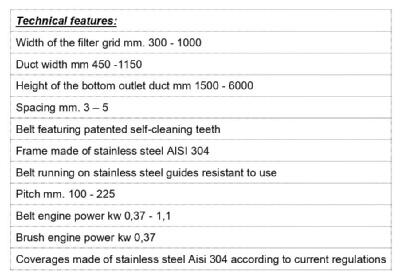

the screened material. At the base, a nylon bottom brush prevents the passage of solids through the rotation space of the teeth. The belt is capable of separating, from the slurry, suspended solids and conveying them to the upper part of the machine where, thanks to the special conformation of the teeth, when the belt motion is reversed, self-cleaning takes place, made more effective by the use of a counter-rotating brush at the discharge point. Solids, in this way, fall by gravity at the predetermined point. The counter-rotating nylon brush is driven by a gearmotor dedicated to it and is mounted on an AISI 304 stainless steel shaft, supported by grease-lubricated supports and bearings. Belt Filter is also equipped with: belt drive shaft and chute to convey the screened material to the discharge point, drive gearmotor, AISI 304 stainless steel filter belt washing piping, casing fixed with screws to the support structure and protection of all moving parts.
ROBUSTA ED EFFICIENTE LA GRIGLIA AUTOPULENTE DI SC COSTRUZIONI MECCANICHE
Belt Filter si caratterizza per la struttura in acciaio inox
S.C. Costruzioni Meccaniche designs, manufactures and installs auxiliary systems and equipment for various industries, especially tannery machinery and sewage treatment plants. Among its workhorses is Belt Filter, a self-cleaning belt screen for duct installation. The machine boasts a structure completely made of AISI 304 steel, consisting of two sides and spacer columns. It is equipped with a continuous filtering belt, composed of teeth of special patented self-cleaning profile made of wear- and acid-resistant plastic material, assembled on AISI 304 stainless steel shafts with 100 mm or 225 mm pitches. The belt is laterally equipped with AISI 304 stainless steel sheets that intersect to form a continuous barrier against lateral spillage of
S.C. Costruzioni Meccaniche progetta, costruisce ed installa impianti ed attrezzature ausiliarie per diversi settori industriali, in particolar modo macchine per conceria e impianti di depurazione. Tra i suoi cavalli di battaglia si distingue Belt Filter, griglia autopulente a nastro per installazione in canale. La macchina vanta una struttura completamente costruita in acciaio AISI 304, composta da due fiancate e da colonne distanziatrici. È dotata di nastro filtrante continuo, composto da denti di particolare profilo autopulente brevettato realizzati in materiale plastico resistente all'usura e agli acidi, assemblati su alberi in acciaio inox AISI 304 con passi di 100 mm oppure 225 mm. Il nastro è dotato lateralmente di lamine in acciaio inox AISI 304 che si intersecano in modo da formare una barriera continua contro la fuoriuscita laterale del materiale grigliato. Alla base, una spazzola di fondo in nylon evita il passaggio dei corpi solidi attraverso lo spazio di rotazione dei denti. Il nastro è in grado di separare, dal liquame, i solidi in sospensione e di convogliarli sulla parte superiore della macchina dove, grazie alla particolare conformazione dei denti, all'atto dell'inversione del moto del nastro, avviene l'autopulizia, resa più efficace dall'utilizzo di una spazzola controrotante nel punto di scarico. I solidi, in questo modo, cadono per gravità nel punto prestabilito. La spazzola controrotante in nylon è azionata da un motoriduttore ad essa dedicato ed è montata su albero in acciaio inox AISI 304, sostenuto da supporti e cuscinetti lubrificati a grasso. Belt Filter è inoltre provvista di: albero di trazione del nastro e scivolo per convogliare il materiale grigliato nel punto di scarico, motoriduttore di azionamento, tubazione di lavaggio del nastro filtrante in acciaio inox AISI 304, carter fissato con viti alla struttura di supporto e protezione di tutte le parti in movimento.
54 ARSTANNERY TECHNOLOGY

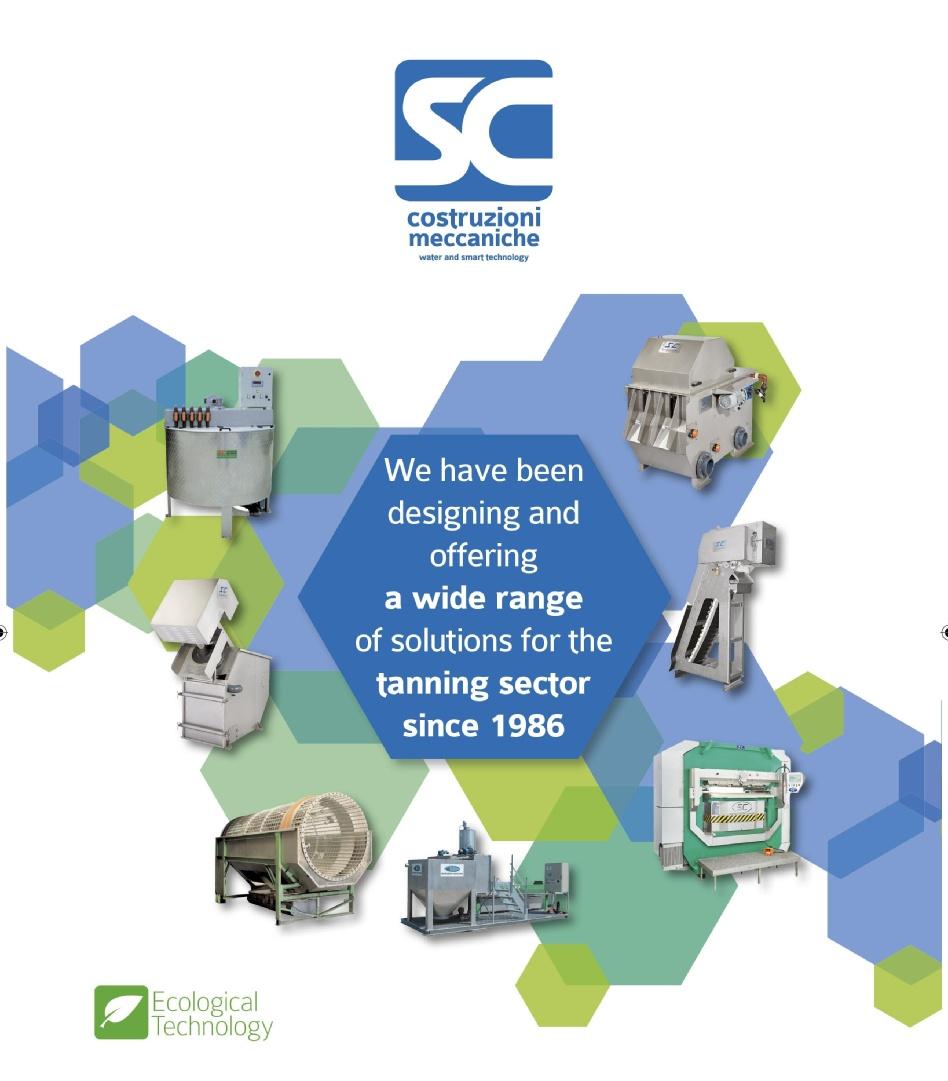
APLF DUBAI, FINAL ACT
Fifteen national pavilions at Leather Fair 2023 registering five thousand visitors and awaiting final return to Hong Kong in 2024
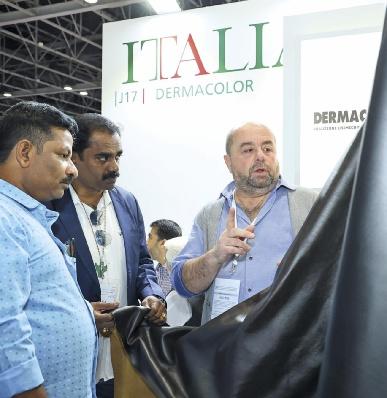

APLF's second, and probably last, time in Dubai (UAE) was held March 13-15 in the presence of 341 exhibitors, including 15 national pavilions, who were visited by some five thousand visitors from around the world. With the end of anti-Covid restrictions in China, Chinese exhibitors and buyers were also able to attend the event this year, giving participants, especially in the finished product section, the opportunity to take full advantage of the trade platform traditionally offered to the leather and fashion sectors by APLF.
Narrowing our gaze to the Leather section, let us say right away that this edition of the event will go down without infamy or praise, and will probably be remembered as a transitional fair before the long-awaited return to the historic venue in Hong Kong, a return already announced with relief by the organizers for 2024. The excitement that was felt at APLF Dubai last year, probably related to the fact that it was the first major fair after the pandemic and also the novelty of the Emirates location, was not felt in the same way this time. Probably also due to fewer visitors from India and neighboring countries being able to attend the IILF in Chennai this year, which was not held last year.
But of course opinions are also very different among them. While for some APLF Dubai 2023 was underwhelming, for others it was a positive experience. Muhammad Ali, Secretary General of the Pakistan Tanners Association confirms this: "It is not the quantity, but the quality of the buyers we were able to connect with that made our participation in APLF Dubai worthwhile." Fernanda Schwade, managing director of Brazil's Liderkoll, was also very satisfied: "The Dubai fair was a very productive experience for us, as we were able to make contact and network with quality operators from all over the world."
Some important side events were also held during the event, such as the Global Footwear Executive Summit (GFES) and seminars organized by Leather Naturally, Lanxess, GIZ (German Society for International Cooperation) and Santoni. Four workshops were also held at this year's edition, including two from the Leather Foundation and two on Footwear Design presented by ESMOD Dubai. The appointment with the next edition of APLF, as we said, is already set in Hong Kong next year, exactly from March 19 to 21.
56 ARSTANNERY FAIRS
Quindici collettive nazionali alla Leather Fair 2023 che registra cinquemila visitatori ed attende il ritorno definitivo ad Hong Kong nel 2024
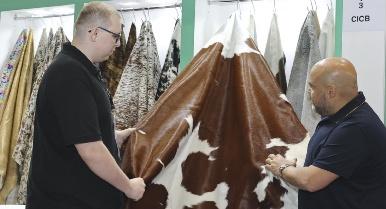

La seconda, e probabilmente ultima, volta a Dubai (EAU) di APLF si è svolta dal 13 al 15 marzo scorso alla presenza di 341 espositori, tra cui 15 collettive nazionali, che hanno ricevuto la visita di circa cinquemila visitatori da tutto il mondo. Con la fine delle restrizioni anti-Covid in Cina, quest'anno hanno potuto partecipare all’evento anche espositori e buyers cinesi, offrendo ai partecipanti, soprattutto nella sezione del prodotto finito, l'opportunità di sfruttare appieno la piattaforma commerciale tradizionalmente offerta ai settori della pelle e della moda da APLF. Restringendo lo sguardo alla sezione Leather, diciamo subito che questa edizione della manifestazione andrà in archivio senza infamia e senza lode, e verrà probabilmente ricordata come una fiera di transizione prima del tanto atteso ritorno alla sede storica di Hong Kong, ritorno già annunciato con sollievo dagli organizzatori per il 2024. L’entusiasmo che si era respirato ad APLF Dubai lo scorso anno, probabilmente legato al fatto che si trattava della prima grande fiera dopo la pandemia e anche della novità della location emiratina, questa volta non si è avvertito allo stesso modo. Probabilmente anche a causa di un minor afflusso di visitatori dall’India e dai paesi limitrofi che quest’anno hanno potuto parteci-
pare alla IILF di Chennai che l’anno scorso invece non si era svolta. Ma naturalmente i pareri sono fra loro anche molto diversi. Se per alcuni APLF Dubai 2023 è stata sottotono, per altri è stata invece un’esperienza positiva. Muhammad Ali, Segretario Generale dell’Associazione conciatori del Pakistan lo conferma: “Non è la quantità, ma la qualità degli acquirenti con cui siamo riusciti a entrare in contatto che ha reso proficua la nostra partecipazione all’APLF di Dubai”. Anche Fernanda Schwade, amministratore delegato della brasiliana Liderkoll, si è detta molto soddisfatta: “La fiera di Dubai è stata per noi un’esperienza molto produttiva, in quanto abbiamo potuto entrare in contatto e fare rete con operatori di qualità provenienti da tutto il mondo”. Durante la manifestazione si sono svolti anche alcuni importanti eventi collaterali come il Global Footwear Executive Summit (GFES) e i seminari organizzati da Leather Naturally, Lanxess, GIZ (Società tedesca per la cooperazione internazionale) e Santoni. All’edizione di quest’anno si sono svolti anche quattro workshop, tra cui due della Leather Foundation e due sul Footwear Design presentati da ESMOD Dubai.
L’appuntamento con la prossima edizione di APLF, come dicevamo, è già fissato a Hong Kong il prossimo anno, esattamente dal 19 al 21 marzo.
Award to KLF Tecnokimica
The Best of APLF AWARDS (BOAA) awards ceremony, the program initiated by APLF in 2004 to encourage the pursuit of excellence, was also held as usual during the event. This year’s winners included Italian chemical auxiliary manufacturer KLF Tecnokimica, which won first prize in the Best Tanning Process Innovation category. The other winners were: Best Leather Craft - SiC Cat (Guangzhou) Technology Co Ltd; Best Sustainable Leather - Scottish Leather Group; Best Innovation in Leather Finishing - Uyguner Deri; Best Fashion Leather Collection - TEAMpiel International; Best Classic Leather Collection - Wollsdorf Leather.
Premio a KLF Tecnokimica
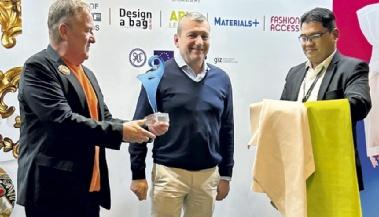
Durante la manifestazione si è svolta come sempre anche la cerimonia di premiazione dei Best of APLF AWARDS (BOAA), il programma avviato da APLF nel 2004 per incoraggiare la ricerca dell’eccellenza.
Tra i vincitori di quest’anno anche l’azienda italiana produttrici di ausiliari chimici KLF Tecnokimica che si è aggiudicata il primo premio nella categoria Best Tanning Process Innovation (miglior processo di concia alternativa). Gli altri vincitori sono stati: Best Leather Craft - SiC Cat (Guangzhou) Technology Co Ltd; Best Sustainable Leather - Scottish Leather Group; Best Innovation in Leather Finishing - Uyguner Deri; Best Fashion Leather Collection - TEAMpiel International; Best Classic Leather Collection - Wollsdorf Leather.
APLF DUBAI, ULTIMO ATTO
GLOBAL FOOTWEAR EXECUTIVE SUMMIT WAS HELD DURING APLF DUBAI
PARALLELAMENTE
AD APLF DUBAI SI È SVOLTO IL GLOBAL FOOTWEAR EXECUTIVE SUMMIT
MARCO FREDIANI OF KLF TECNOKIMICA WAS AWARDED FOR THE “BEST TANNING PROCESS INNOVATION” MARCO FREDIANI DI KLF TECNOKIMICA HA RICEVUTO IL PREMIO PER L’INNOVAZIONE CONCIARIA
“BEST TANNING PROCESS INNOVATION”
ARSTANNERY 57 FAIRS


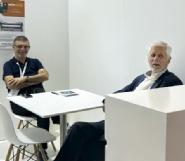


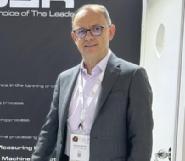

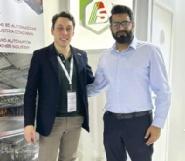

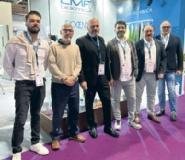



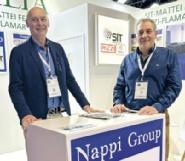



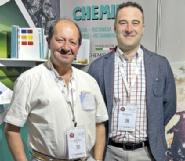
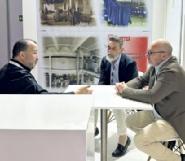
 FELTRE EMMEZETA TANMAC
CLAUDIO ROSATI, BRUNO MUCCIGNAT - LMF BIOKIMICA
FILIPPO SANI - AS GREEN TECHNOLOGY
BAUCE TRI.MA
PAOLO MATELLI - ALPE
STEFANO MASTROTTO - SPRAYTECH
GIANMARIO CAZZOLA - C.G.R.D.
ALESSIO MAFFEI, LORENO FRESCHI - BARNINI MOSTARDINI
BERGI
ROBERTO CALATTINI - S.C. COSTRUZIONI MECCANICHE
BRUNO & MARCO BERNARDINI - CHEMIPAL
MARCO FOGLI - THEMA
RALPH ARBEID, PETER MASTEVC - HUENI ITALIA
WILLIAM PELLICCIARI, ANTONELLO NAPPI - NAPPI GROUP, RIZZI, FLAMAR
OPENING CEREMONY
GUIDO FRIZZARIN - ELPA SERVICE
MAURIZIO MOLON - GER ELETTRONICA GIULIO GALIOTTO - ERRETRE, F.LLI CARLESSI
MAURO PELLIZZARI - GEMATA
FELTRE EMMEZETA TANMAC
CLAUDIO ROSATI, BRUNO MUCCIGNAT - LMF BIOKIMICA
FILIPPO SANI - AS GREEN TECHNOLOGY
BAUCE TRI.MA
PAOLO MATELLI - ALPE
STEFANO MASTROTTO - SPRAYTECH
GIANMARIO CAZZOLA - C.G.R.D.
ALESSIO MAFFEI, LORENO FRESCHI - BARNINI MOSTARDINI
BERGI
ROBERTO CALATTINI - S.C. COSTRUZIONI MECCANICHE
BRUNO & MARCO BERNARDINI - CHEMIPAL
MARCO FOGLI - THEMA
RALPH ARBEID, PETER MASTEVC - HUENI ITALIA
WILLIAM PELLICCIARI, ANTONELLO NAPPI - NAPPI GROUP, RIZZI, FLAMAR
OPENING CEREMONY
GUIDO FRIZZARIN - ELPA SERVICE
MAURIZIO MOLON - GER ELETTRONICA GIULIO GALIOTTO - ERRETRE, F.LLI CARLESSI
MAURO PELLIZZARI - GEMATA
58 ARSTANNERY FAIRS
GIANNI GONELLA, GIULIO TANDURA - MOSCONI

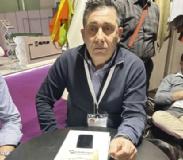
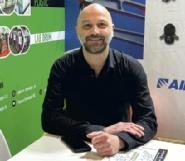


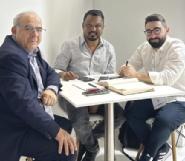
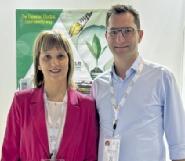

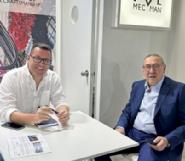

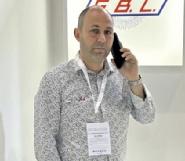
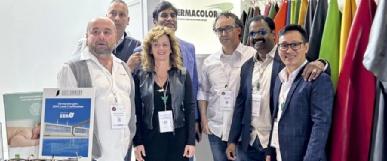
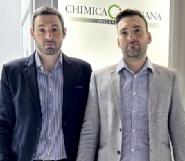



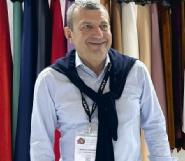
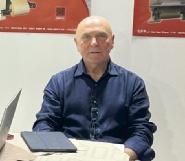 GABRIELLA BOCCA - LAMEBO
MARCO AGOSTINI - MEC MAN
NICOLA PIACENTINI - ESCOMAR
OLIMPIO STORTI - PAJUSCO TECNOLOGIE
LEONARDO LEONARDI, ANDREA FASTELLI - TECNOCHIMICA
ALBERTO CAMPINOTI - G.B.L.
VALENTINA PALAGINI, ANDREA MEUCCI - DERMACOLOR
FABIO BRAGGION - CORICHEM
DIEGO CISCO - GSC GROUP
ANTONELLO MARCHINO - EVOLUTION TECH
MARCO FREDIANI - KLF TECNOKIMICA
SERGIO GUERRAZZI - GFP
NICOLO’ PIAMPIANI - CHIMICA ITALIANA
PATRIZIA CAIMI - CAIMI
SN ITALIA CHEMICALS
SERGIO DANI - ITALPROGETTI PROKIMICAL INTERNATIONAL
GABRIELLA BOCCA - LAMEBO
MARCO AGOSTINI - MEC MAN
NICOLA PIACENTINI - ESCOMAR
OLIMPIO STORTI - PAJUSCO TECNOLOGIE
LEONARDO LEONARDI, ANDREA FASTELLI - TECNOCHIMICA
ALBERTO CAMPINOTI - G.B.L.
VALENTINA PALAGINI, ANDREA MEUCCI - DERMACOLOR
FABIO BRAGGION - CORICHEM
DIEGO CISCO - GSC GROUP
ANTONELLO MARCHINO - EVOLUTION TECH
MARCO FREDIANI - KLF TECNOKIMICA
SERGIO GUERRAZZI - GFP
NICOLO’ PIAMPIANI - CHIMICA ITALIANA
PATRIZIA CAIMI - CAIMI
SN ITALIA CHEMICALS
SERGIO DANI - ITALPROGETTI PROKIMICAL INTERNATIONAL
ARSTANNERY 59 FAIRS
ANDREA CARRAI - CENTRALKIMICA
FURNITURE INDUSTRY FINDS NEW IMPETUS AT THE SALONE DEL MOBILE
As many as 307,418 visitors came to the 61st edition of the Salone del Mobile.Milano (the Milan Furniture Fair) this past April: a 15 percent increase over 2022 that ratifies the success of the event's new format, confirming the catalyzing power of the event. More than 2,000 brands exhibited, including 34% from 37 countries. In terms of visitor attendance, particularly significant was the 65 percent of buyers and trade operators from abroad. China again became the leading country after Italy, followed by Germany, France, the United States, Spain with Brazil and India tied. It was an all-round success, confirmed by the words of the protagonists, who were unanimous in commenting positively on the performance of an extremely dynamic exhibition that fully met all expectations.

WHAT’S NEW
Among the key words of the Salone (but also of Fuorisalone, i.e., the set of events organized around Milan during Design Week) is definitely recycling. Reuse, upcycling, transformation of materials and more generally the circular economy are the watchwords of design. Recycled and reusable materials are at the center of the product innovations of all the major brands in the sector that compete to present themselves in a light of maximum sustainability. Another important trend is the fluidity of environments: conviviality areas are increasingly hybridizing between indoor and outdoor, between bedroom and home office, between dining room and living room with important consequences on the choice of multifunctional furniture.
Soft, rounded shapes in the new upholstered proposals where leather, smooth or suede, is always the protagonist
60 ARSTANNERY UPHOLSTERY
VISITOR ATTENDANCE AT THE MILAN FURNITURE FAIR WAS MASSIVE AGAIN THIS YEAR ANCHE QUEST’ANNO È STATA MASSICCIA LA PARTECIPAZIONE DI VISITATORI AL SALONE DEL MOBILE DI MILANO
As for what is new in the upholstered section, we can certainly say that the shapes tend to be soft and rounded. Among designers' favorite upholstery remains leather, thanks to its ability to add value and prestige to any stylistic choice. Leather and design, after all, represent a combination of enormous international success for top-end Italian manufacturing. Upholstered furniture, in particular, has always been one of the main areas of use for Italian leather. And once again leather, smooth but also suede or nubuck, is the protagonist everywhere in the new proposals: in lounge seating and bed headboards but also as a covering for tables, drawers and walls. Much appreciated is the multi-materiality (leather and fabric together) that creates new pleasant material and color effects. The lines of the new seats
are wide and enveloping, and new light shades such as ice white and mustard stand out among the colors, as well as traditional earth tones with textural textures that bring out the rounded shape of the upholstered furniture. Raw edges and saddle stitching the hallmarks of many major brands.
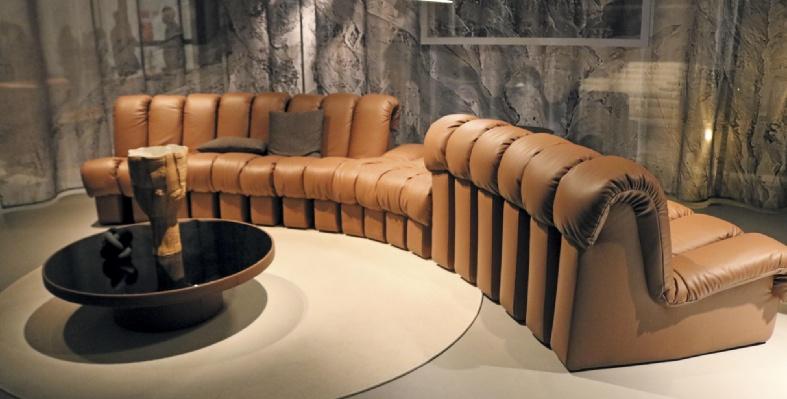
THE MARKET
2023 is shaping up to be a reflective year, one of adjustment and transition, one that began without the abrupt slowdown that many furniture companies feared, given the premise of the global economy with out-of-control inflation, energy and commodity prices not yet back to normal levels. The slowdown in orders is there and was, after all, to be expected after two years of a sky -
DS-705 BY DE SEDE
ARSTANNERY 61 UPHOLSTERY
rocketing market but, at least for the first part of the year, the sector will benefit from the long tail of contracts signed last year. FederlegnoArredo's Monitor estimates a closing of the year still up by 5 percent thanks mainly to foreign markets while the domestic market could be negatively affected by the weakening of building bonuses.
As for the previous year's balance, in 2022 the supply chain recorded +12.7 percent over 2021. Exports, which make up 37 percent of the total turnover volume of the wood-furniture supply chain, are estimated to grow by +13.3 percent, driven in particular by the United States (third destination behind France and a very short distance from Germany) although especially in the last quarter of the year a slow -
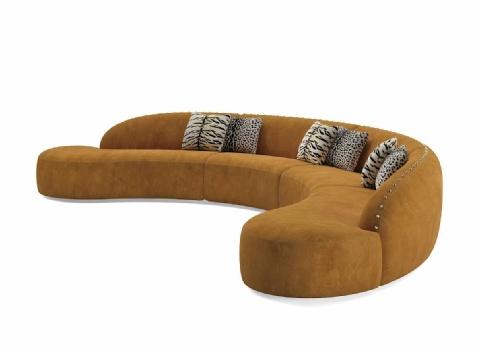
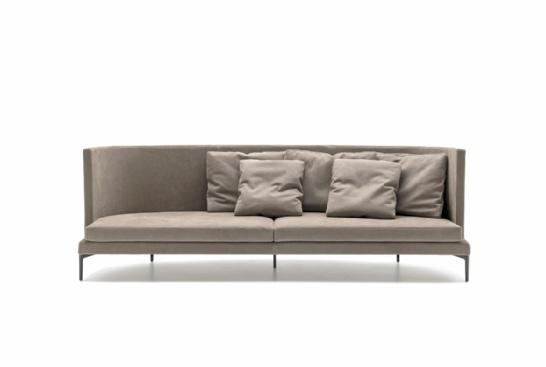
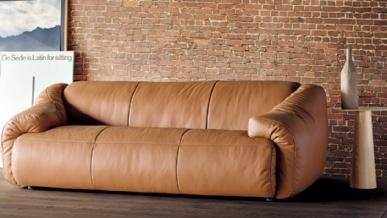

down is evident. China, characterized in the past years by a particular dynamism with much more marked percentage changes in growth than other countries, remains in 2022 the seventh destination for our exports but, due to the closures decided by the Chinese government to combat the pandemic, it is among the top 10 markets in the chain, the one with the lowest growth (+4.8%). The main markets all show a positive sign, with the exception of Russia, which loses share by dropping out of the top 10 destinations replaced by the United Arab Emirates.
 ROBERTO CAVALLI
TUSCANY CHAISE LONGUE BY MOLTENI
CLAN SOFA BY LIVING DIVANI
DE SEDE
ROBERTO CAVALLI
TUSCANY CHAISE LONGUE BY MOLTENI
CLAN SOFA BY LIVING DIVANI
DE SEDE
62 ARSTANNERY UPHOLSTERY
CANTORI
L’ARREDO TROVA NUOVO SLANCIO AL SALONE DEL MOBILE
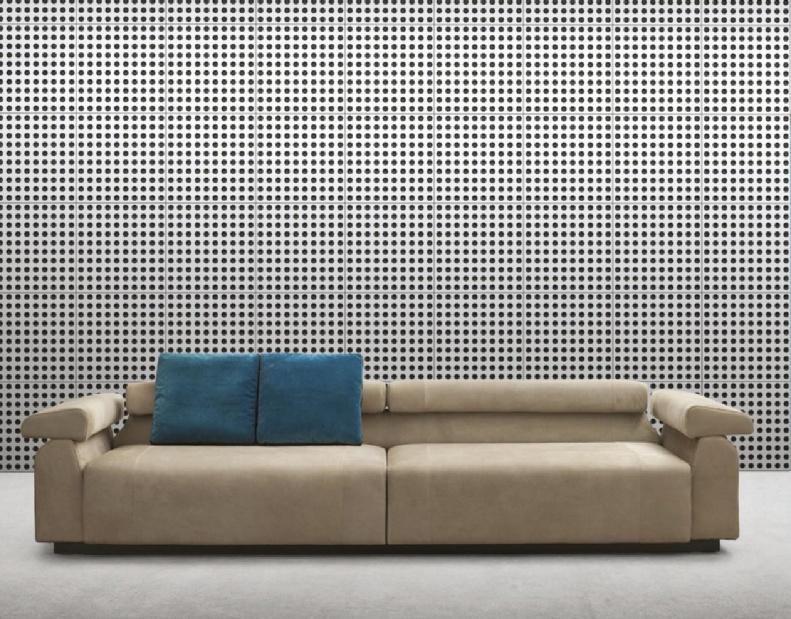
Forme morbide e arrotondate nelle nuove proposte imbottite dove la pelle, liscia o scamosciata, è sempre protagonista
Sono stati ben 307.418 i visitatori della 61ª edizione del Salone del Mobile.Milano dello scorso aprile: un +15% rispetto al 2022 che sancisce il successo del nuovo format della manifestazione, confermando la forza catalizzatrice dell’evento. Più di 2.000 i brand espositori, di cui il 34% da 37 Paesi. In termini di affluen -

za di visitatori, particolarmente significativo il 65% di buyer e operatori di settore provenienti dall’estero. La Cina è tornata a essere il primo Paese dopo l’Italia, seguita da Germania, Francia, Stati Uniti, Spagna con Brasile e India a pari merito. Un successo a tutto tondo, confermato dalle parole dei protagonisti, unanimi nel commentare positivamente l’andamento di un Salone estremamente dinamico che ha soddisfatto pienamente tutte le aspettative.
LE NOVITA’
Tra le parole chiave del Salone (ma anche del Fuorisalone, ovvero l’insieme degli eventi organizzati in giro per Milano durante la Design Week) c’è sicuramente il riciclo. Riuso, upcycling, tra -
ARSTANNERY 63 UPHOLSTERY
ATOB BY BUSNELLI
sformazione dei materiali e più in generale l’economia circolare sono le parole d’ordine del design. Materiali riciclati e riutilizzabili sono al centro delle novità di prodotto di tutti i brand più importanti del settore che fanno a gara a presentarsi sotto una luce di massima sostenibilità. Un’altra tendenza importante è la fluidità degli ambienti: le zone della convivialità si ibridano sempre di più tra indoor e outdoor, tra camera da letto e home office, tra sala da pranzo e living con importanti conseguenze sulla scelta di mobili multifunzioni.

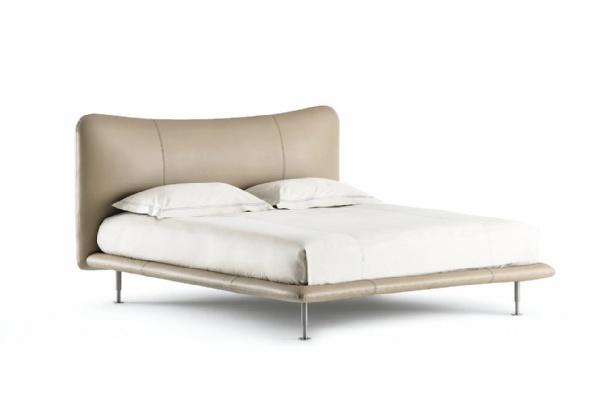

Quanto alle novità del comparto imbottito, possiamo sicuramente affermare che le forme sono tendenzialmente morbide e arrotondate. Tra i rivestimenti preferiti dai designers resta la pelle grazie alla sua capacità di conferire valore e prestigio a
ogni scelta stilistica. Pelle e design, del resto, rappresentano un connubio di enorme successo internazionale per la manifattura italiana di fascia top. L’arredamento imbottito, in particolare, è da sempre uno dei principali settori di utilizzo della pelle italiana. E ancora una volta la pelle, liscia ma anche scamosciata o nabuccata, è protagonista ovunque nelle nuove proposte: nelle sedute dei salotti e nelle testiere dei letti ma anche come rivestimento di tavolini, cassettiere e pareti. Molto apprezzata la multimaterialità (pelle e tessuto insieme) che crea nuovi piacevoli effetti materici e cromatici. Le linee delle nuove sedute sono ampie e avvolgenti; tra i colori spiccano nuove tonalità chiare come il bianco ghiaccio e il senape, oltre alle tradizionali sfumature della terra con trame materiche che fanno risaltare la
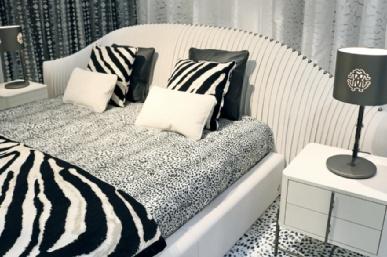 BAIA BY FLOU
LOUNGE CHAIR KLISMOS BY KNOLL
BAIA BY FLOU
LOUNGE CHAIR KLISMOS BY KNOLL
64 ARSTANNERY UPHOLSTERY
ELOBAY SOFA BY ROBERTO CAVALLI VISIONNAIRE
forma stondata degli imbottiti. Orli al vivo e cuciture selleria i segni distintivi di molti brand importanti.
IL MERCATO
Il 2023 si annuncia come un anno riflessivo, di assestamento e transizione, iniziato senza la brusca frenata che molte aziende dell’arredamento temevano, considerate le premesse dell’economia globale con un’inflazione fuori controllo, prezzi dell’energia e delle materie prime non ancora tornati ai livelli normali. Il rallentamento degli ordini c’è e del resto era prevedibile dopo due anni di mercato alle stelle ma, almeno per la prima parte dell’anno, il settore beneficerà della coda lunga dei contratti siglati lo scorso anno. Il Monitor di FederlegnoArredo stima una chiusura d’anno ancora in crescita del 5% grazie soprattutto ai mercati esteri mentre il mercato interno potrebbe risentire negativamente del depotenziamento dei bonus edilizi.
Quanto al bilancio dell’anno precedente, nel 2022 la filiera ha registrato un +12,7% sul 2021. Per le esportazioni, che costituiscono il 37% del volume di fatturato totale della filiera legnoarredo, si stima una crescita del +13,3%, trainata in particolare dagli Stati Uniti (terza destinazione dietro la Francia e a pochissima distanza dalla Germania) anche se soprattutto nell’ultimo trimestre dell’anno si evidenzia un rallentamento. La Cina, caratterizzata negli scorsi anni da un particolare dinamismo con variazioni percentuali di crescita molto più marcate degli altri Paesi, resta nel 2022 la settima destinazione per il nostro export ma, a causa delle chiusure decise dal Governo cinese per contrastare la pandemia, è tra i primi 10 mercati della filiera, quella con la crescita più bassa (+4,8%). I principali mercati presentano tutti un segno positivo, ad eccezione della Russia che perde quote uscendo dalle prime dieci destinazioni sostituita dagli Emirati Arabi Uniti.
Lineapelle presents NABUCCO
From April 17 to 23, 2023, during the Fuorisalone in Milan, “Nabucco,” an exhibition designed to highlight the application development opportunities of made-in-Italy leather for the interior world, was set up in the Lineapelle Space in Piazza Tomasi di Lampedusa. “Innovative compared to the traditional boiserie, the collection takes shape from a palette of twenty-five colors, inspired by Renaissance and Baroque Venetian painting: a chromatic alphabet at the service of architects and interior designers, in a game between fashion and architecture,” explain the organizers.
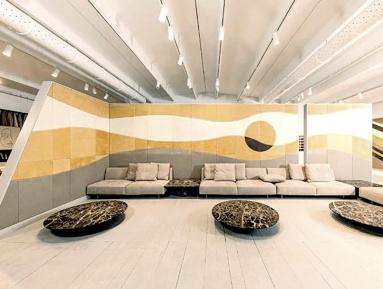

Lineapelle presenta NABUCCO
Dal 17 al 23 aprile 2023, in occasione del Fuorisalone di Milano, nello Spazio Lineapelle di piazza Tomasi di Lampedusa è stata allestita “Nabucco”, un’esposizione ideata per mettere in luce le opportunità di sviluppo applicativo della pelle made in Italy per il mondo interior. “Innovativa rispetto alla tradizionale boiserie, la collezione prende forma da una palette di venticinque colori, ispirata alla pittura veneta rinascimentale e barocca: un alfabeto cromatico al servizio di architetti e interior designer, in un gioco tra fashion e architettura” spiegano gli organizzatori.
ARSTANNERY 65 UPHOLSTERY
A GLIMPSE OF NABUCCO, THE EXHIBITION SET UP AT THE LINEAPELLE SPACE DURING MILAN DESIGN WEEK UNO SCORCIO DI NABUCCO, L’ESPOSIZIONE ALLESTITA PRESSO LO SPAZIO LINEAPELLE DURANTE LA MILANO DESIGN WEEK
SUCCESSFUL CELEBRATION OF WORLD LEATHER DAY
Celebrated on April 26th the joint initiative between Leather Working Group and Leather Naturally
UN SUCCESSO LA GIORNATA MONDIALE DELLA PELLE
L’iniziativa congiunta di Leather Working Group e Leather Naturally celebrata il 26 aprile
On April 26th the industry celebrated World Leather Day 2023. Started as a joint initiative between Leather Working Group (LWG) and Leather Naturally (LN). Its aim was to engage the industry to celebrate the positive attributes of leather. Three key product themes focused on the long-lasting properties of leather and their importance in reducing consumer impact. “This year World Leather Day united leather manufacturers, chemical suppliers, machinery suppliers, finished product manufacturers, industry associations, industry media, retailers, and schools to promote the positive attributes of leather with over 350 registering to participate in advance – they explain from LN -. Particularly encouraging were the number of companies that took the theme and ran with it, creating their own posts featuring the World Leather Day logo and the theme of longevity”.
Chair of Leather Naturally, Debbie Burton commented, “World Leather Day was imagined as a day to engage the industry and harness the strength of working together. The growth in participation this year was exceptional, now let’s build on it. If the industry can collectively maintain the momentum of 26 April 2023, it will be a powerful statement. Leather Naturally is committed to continuing its support as a resource for providing the information, materials and social messaging that will more easily enable that.”
Christina Trautmann of Leather Working Group added: "We're thrilled with the success of this year's World Leather Day celebrations and the level of engagement from stakeholders across the industry. It is inspiring to see so many organizations come together to showcase the positive attributes of leather and promote its sustainable and circular qualities. Leather Working Group hopes that we can continue with this momentum into 2024, and build the support for responsibly made leather as a sustainable material."
Il 26 aprile il settore ha celebrato la Giornata Mondiale della Pelle 2023, un’iniziativa congiunta di Leather Working Group (LWG) e Leather Naturally (LN) nata lo scorso anno con l’obiettivo di parlare della pelle e delle sue caratteristiche positive in un’ottica di economia circolare. Nelle immagini utilizzate sui social media sono stati utilizzati tre temi chiave di prodotto (un sofà, una calzatura e un articolo di pelletteria) focalizzati sulle caratteristiche di longevità della pelle e sulla sua importanza nel ridurre l'impatto dei consumatori. “Quest'anno la Giornata Mondiale della Pelle ha unito produttori di pelle, fornitori di prodotti chimici, fornitori di macchinari, produttori di prodotti finiti, associazioni di settore, media del settore, rivenditori e scuole per promuovere gli attributi positivi della pelle con oltre 350 registrazioni per partecipare in anticipo – spiegano da LN -. Particolarmente incoraggiante è stato il numero di aziende che hanno preso il tema e lo hanno portato avanti, creando i propri post con il logo della Giornata Mondiale della Pelle e il tema della longevità”.


La presidente di Leather Naturally, Debbie Burton, ha commentato: "La Giornata mondiale della pelle è stata immaginata come una giornata per coinvolgere il settore e sfruttare la forza di lavorare insieme. L'aumento della partecipazione di quest'anno è stato eccezionale, ora cerchiamo di lavorarci sopra. Se il settore riuscirà a mantenere collettivamente lo slancio del 26 aprile 2023, sarà una dichiarazione potente. Leather Naturally si impegna a continuare a sostenere la manifestazione come risorsa per fornire le informazioni, i materiali e la messaggistica sociale che consentiranno più facilmente di raggiungere questo obiettivo".
Christina Trautmann del Leather Working Group ha aggiunto: "Siamo entusiasti del successo delle celebrazioni della Giornata Mondiale della Pelle di quest'anno e del livello di coinvolgimento delle parti interessate in tutto il settore. È stimolante vedere così tante organizzazioni riunirsi per mostrare gli attributi positivi della pelle e promuovere le sue qualità sostenibili e circolari".
Leather Naturally promotes the use of responsibly made, certified leather. Its website www.leathernaturally.org is a key resource for information about modern leather manufacturing and the part it plays in a more sustainable society.
Leather Naturally promuove l’uso di pelle certificata e prodotta in modo responsabile. Il suo sito web www.leathernaturally.org è una risorsa fondamentale per ottenere informazioni sulla moderna produzione di pelle e sul ruolo che essa svolge in una società più sostenibile.

66 ARSTANNERY NEWS
>> The first part of this article was published in the previous issue
ORGANIC WASTE VALORISATION TOWARDS CIRCULAR AND SUSTAINABLE BIOCOMPOSITES
Source: Green Chem, 2022, 24, 5429
Erlantz Lizundia, ab Francesca Luzic and Debora Puglia *d
a Life Cycle Thinking Group, Department of Graphic Design and Engineering Projects, Faculty of Engineering in Bilbao, University of the Basque Country (UPV/EHU), Bilbao 48013, Spain. E-mail: erlantz.liizundia@ehu.eus
b BCMaterials, Basque Center for Materials, Applications and Nanostructures, UPV/EHU Science Park, 48940 Leioa, Spain
c Department of Materials, Environmental Sciences and Urban Planning (SIMAU), Polytechnic University of Marche, Via Brecce Bianche 12, 60131 Ancona, Italy.
E-mail: f.luzi@staff.univpm.it
d Civil and Environmental Engineering Department, University of Perugia, Strada di Pentima 4, 05100 Terni, Italy.
E-mail: debora.puglia@unipg.it
Biopolymeric composite performance is also undoubtedly correlated to compositions and phase morphologies, which need to be optimized by using compatibilisation methods or a nanocomposite approach. Naturally derived materials with hierarchical organization are also attractive candidates for high-performance and functional bionanocomposites because of their renewability, biocompatibility, biodegradability, flexibility, and availability of multiple reactive sites for introducing novel functionalities. Complementary to these inherent properties, the synergistic combination of biological and synthetic components can substantially enhance the structural performance and facilitate added functionalities of these bio-enabled materials.
From this viewpoint, the development of biodegradable nanocomposite systems by incorporating, into gelatin biopolymer, silver nanoparticles biologically synthesized using industrial food waste was proposed (Fig. 7, Panel A), namely using cassava tuber peels. It was demonstrated that AgNPs enhanced the UV-shield capability of nanocomposite films, preventing lipid oxidation and showing significant antimicrobial activity, with an excellent notable increase in the shelf life of sapodilla fruits (Fig. 7, Panel B), confirming that the gelatin–AgNPs nanocomposite films are ideal for the food packaging industry. Ideally, any research must prioritize the development of useful products for society, and biocomposites made from waste fillers are no exception. In the current scenario, the advancement of waste-based biocomposite manufacturing technology will result in a rise in its applications. Nanotechnology is the key able to open new windows of innovation, and its combination with the “green-based” ideology has resulted in invaluable opportunities. Moreover, the use of bionanocomposites has acquired substantial interest due to their cost-effectiveness and high selectivity. However, with the current improvements in nanotechnology, there is a crucial need to assess its impact on the ecosystem and human health. In the following section 4, the integration of nanotechnology with naturally derived products to outline the tremendous contribution of nanobased bioproducts will be described.

4. Processed feedstocks to biopolymers and polymeric biocomposites
Nanoparticles’ synthesis includes several inputs, such as highly sophisticated instruments and considerable amounts of energy, most of which include drastic conditions, such as elevated temperature, voltage, etc. If we incorporate green chemistry procedures and biobased materials into the synthesis of nanoparticles, the problems that can cause damage to the environment could be invalidated, and non-toxicity, easy reproducibility and cost effectiveness could be achieved. Towards the future of green, sustainable and renewable products, interest in the idea of using different bio-wastes in the coming decades has increased. Biowaste and nanoparticle synthesis sounds like an improbable recipe, but recent investigations in the literature have shown that naturally occurring biomolecules present in waste have the potential to create nanoparticles with unique medicinal and pharmaceutical properties, linked to the possibility of collecting materials having diverse shapes and sizes (Fig. 8). Nature acts like a large “bio-laboratory” comprising biomolecules that can play a dynamic role in the formation of nanoparticles, thereby acting as a driving force for the design of greener, safe and environmentally benign protocols for the synthesis of NPs. Biowaste contains beneficial biomolecules and compounds that can play actively in reducing precursor metal ions in aqueous solutions, as modelling agents for particle growth in particular orientations, or as capping agents to prevent nanoparticle agglomeration. Bio-wastes are definitely an extraordinary source of chemical richness whose valorisation is not only feasible and crucial to preserve life on our planet, but which also drives the creation of business, new technologies, livelihoods, and jobs. The abundance and diversity of agrowastes can successfully be exploited on wider scale for green synthesis of different nanoparticles; this approach is cost-effective and may also create some other useful products by nanotechnology. Utilization of agrowaste is of huge advantage, since it is the most efficient waste management process that constitutes high-value product formation from low-cost materials. As in the case of nano-
FIG. 8 SCHEMATIC REPRESENTATION OF THE BIOGENIC SYNTHESIS OF NANOPARTICLES USING FOOD WASTE EXTRACTS (A) AND SCHEMATIC DIAGRAM OF THE MECHANISM BEHIND THE BIOGENIC SYNTHESIS OF METALLIC NANOPARTICLES, WITH FOOD WASTE BIOMOLECULES ACTING AS NATURAL SURFACTANTS (CAPPING AGENTS) (B). REPRODUCED FROM REF. 148 WITH PERMISSION FROM ELSEVIER, COPYRIGHT 2018.
ARSTANNERY 67 RESEARCH
carbons, hybrids, and nanocomposites, that are excellent materials for their versatility and potential use in the fabrication of a variety of high-value devices, biodegradable wastes that have high C-content represent an increasingly popular source for the preparation of such nanosized architectures. The literature reported that biowastes have variable mean C content: nearly 35% for cereal straws, sugarcane bagasse, pitch, lower for seaweed (16%) and approximately 50 wt% for fruit shells. A comprehensive study on various bio-based sources for conductive carbon has been recently made by Zia et al., including agricultural crops, energy crops, crop residue, forest, forestry residue, aquatic crops, municipal waste and industrial waste, confirming the high potential application of these materials in sectors for energy storage and harvesting. Elemental composition in terms of nitrogen content also confirmed values of 1–5% in agricultural and food wastes. It has also been demonstrated that green mode-based synthesized nanoparticles exert antibacterial, antioxidant, and antifungal activity against a plethora of pathogens for food packaging purposes, facilitating a simple, alternative, interactive and reliable technology with positive feedback for the food industries and packaging markets. Even though research on bio-inspired nanomaterials is actually at a really early stage, there is however a niche of opportunity for it to be scaled at industrial levels, although the difficulty in reproducing them should necessarily consider the environmental factors affecting and altering the main specific properties of biobased wastes. Additionally, the lack of clear design guidelines for biosynthesis, the requirement for extensive fundamental research and coordination between the industrial and research communities, the lack of toxicity analysis protocols, higher regulatory barriers compared with nanoparticles synthesized via conventional approaches, and unclear end-market demands are the other challenges that must be addressed in the future to utilize biosynthesis as a potential synthesis approach for large-scale nanoparticle production. In the following paragraphs, the synthesis of different nanoparticles from biowaste feedstock is reviewed, taking into consideration the technical difficulties and overall advantages of using this kind of material as a precursor of nanosized fillers.
4.1. Biowaste for the synthesis of metal and metal oxide nanoparticles

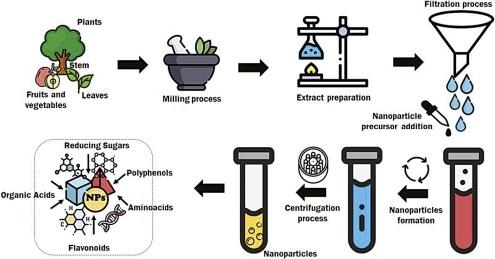
The use of waste extracts for metal (and metal-based) hybrid nanoparticle synthesis is currently a brand of new research focus that has gained wide acceptance (see Fig. 9 and Table 2).
Recent review reports suggest that different plant biowastes such as banana, kiwi, orange, lemon, pomegranate, mango peels, eggshell membrane, rice husk, and wheat straw can be utilized for generation of metal NPs. Fruit peels contain abundant bioactive compounds including phenols, flavonoids, tannins, carotenoids, anthocyanins and essential oils, with substantial health benefits, anti-bacterial and antioxidant properties, generally discarded as by-products or waste by the fruit processing industry. NPs synthesized using bioactive compounds from fruit peel have futuristic applications for an unrealized market potential for nutraceutical and pharmaceutical delivery. Numerous studies have been conducted on the biosynthesis of metallic NPs such as silver, gold, iron, copper, palladium and titanium using fruit peel extract. AgNPs have been synthesized by starting from aqueous extract of cassava or onion peels. Various biogenic molecules present in plant materials, such as in leaves, roots, flowers and fruit, have been also utilized for the synthesis of NPs. Recently, conifer extracts have been found to be effective in the synthesis of metallic nanoparticles through a highly regulated process.
In most cases, extracts from these wastes are used as reducing and stabilizing agents, with diverse activities ranging from antimicrobial, antioxidant, and catalytic to cytotoxicity against cancer cells. Generally, the extracts containing active biomolecules that catalyze the formation of nanoparticles can be obtained through a simple procedure of hot water extraction of dried and ground agro-waste materials. Metallic nanoparticles from those biowastes can also be considered as effective and environmentally friendly supports for heterogeneous catalysis, and may be the future alternative method for clean manufacturing technology.
Another potential point in green synthesis is the possibility of infinite combinations of extracts to manipulate the structure and morpholo-
68 ARSTANNERY RESEARCH
FIG. 9 SCHEMATIC PROCEDURE FOR THE BIOSYNTHESIS OF METAL NANOPARTICLES. REPRODUCED ION FROM REF. 153 WITH PERMISSION FROM ELSEVIER, COPYRIGHT 2021.
gy to prepare metal oxide nanoparticles. Like metals, metal oxides have been widely synthesized via plant extracts and their synthesis is easier compared with metal nanoparticles, as the biomolecules in the extract can act as an oxygen donor, along with their capping, stabilizing, and metal-reducing properties, controlling particle shape and size in the synthesized material, since the phytochemical composition and selected plant part can influence the efficiency of the extract in forming the desired nanoparticles. Morphological properties of the nanoparticles are also influenced by several aspects, such as the pH, synthesis temperature, extract concentration and volume. The review by Akintelu et al. showed, as an example, how the type of extract used in the synthesis, as well as its concentration, influenced the synthesis of copper oxide, obtaining different moulds and applications. Analogously, Devatha et al. found that the greater the availability of these phytochemicals present in the medium, the faster the nanoparticle formation rate.
Another opportunity in the synthesis of metal and metal oxide NPs is given by biobased industrial co-products, such as lignin and cellulose from agricultural by-products: the combination of organic nanoparticles, such as the ones derived from biomass feedstock, to realize nanohybrids may be a suitable strategy to obtain new interesting materials which show the advantages of the distinct components, as widely reported in the literature.
Amino, carboxyl, carbonyl and aldehyde functional groups available from animal waste act as reducing agents for the synthesis of metal oxide nanoparticles. As an example, noble metal nanomaterials (Ag, Au) NPs and metal oxide nanomaterials, such as ZnO, Co3O4, PbO, Mn3O4, TiO2, have been successfully synthesized using egg shell membrane (ESM) as a template, which made the synthesis facile and under control.
Limits of the presented approach are related to the need to explore commercial, economic and eco-friendly methodologies. Moreover, reproducibility of NPs in a high amount also poses a challenge in the green synthesis of metal and metal oxide nanoparticles. Substantial variation in the composition of extracts, variability in size and shape due to the interaction with metal ions, reaction time or temperature, and the variability of biowaste properties according to seasonality is information that must be considered essential for the reproducibility of the process and to understand the mechanisms culminating in the formation of metal-based NPs. Furthermore, there is a need to identify the biomolecules responsible for the synthesis of metallic nanoparticles, and to develop a single-step method to surpass the above-discussed challenges and pave the way for new opportunities for green chemistry to create eco-friendly metallic nanoparticles.
4.2 Biowaste for the synthesis of (bio)polymeric nanoparticles
Biopolymeric nanoparticles offer numerous advantages, which con-
sist of easy preparation from well-studied biodegradable polymers and great stability in biological fluids and during storage.187 In the present analysis, the case of nanoparticles’ synthesis by raw natural biopolymers is not considered, while attention is given to biopolymeric sources from waste materials: potato bio-products, fish scale, and shrimp waste are natural sources for some useful biopolymers, such as starch, chitin, collagen, that can be employed for synthesizing nanoparticles of the same nature. Examples are represented by the work of Hasanin et al., where the authors considered the extraction of starch nanoparticles (StNPs) from zero-value waste (potato peel waste) via simple alkali extraction followed by ultrasonic treatment; alternative and diverse sources are also represented by exudates or extracts from seeds, mucilages, fruits, peels, bark, or even leaves. Balde et al. considered the preparation of chitosan nanoparticles (CSNPs) loaded with diclofenac, with chitosan extracted and purified from Carinosquilla multicarinata shells, confirming that marine scrap can be used economically for the synthesis of specific drug-incorporated nanoparticles to cure various anti-inflammatory diseases. The same approach has been adopted for the extraction of keratin nanoparticles from poultry waste at various temperatures, and nanoparticles based on albumin and gelatin: among the colloidal systems, those based on proteins are very favourable, since they are biodegradable and non-toxic; they have superior strength in vivo and during storage, are rather easy to formulate, and their production can be scaled up. In addition, the protein-based nanoparticles offer several possibilities for surface modification and covalent drug functionalization. Collagen is another biomaterial valuable for its excellent biocompatibility, biodegradation and availability. Additionally, it is easily modifiable, opening the way to a number of applications in nanoparticle fabrication. Those modifications include adding other proteins, such as elastin, fibronectin and glycosaminoglycans, with the main aim of improving its physicochemical and biological properties as well as to regulate biodegradability. Biodegradable collagen-based nanoparticles are thermally stable, sterilisable and allow improved uptake of drug molecules into cells. A number of publications are available on the extraction of lignin and cellulose nanoparticles from agricultural and forestry biowastes, reviewed in very recent papers as summarized in Fig. 10. In both cases, to reach large-scale production implementation, technological constraints and economic concerns must be solved. Thus, the development of high-value-added lignin and cellulose-based materials can not only conserve energy, but can also address several persistent ecological issues while also supporting economic development.
4.3 Biowaste for the synthesis of carbonaceous nanoparticles
Biomass waste is a widespread natural carbon source which mainly contains cellulose, hemicellulose, lignin, chitin, ash, and proteins,

ARSTANNERY 69 RESEARCH
FIG. 10 LIGNIN NANOPARTICLES PROPERTIES, SUSTAINABLE EXTRACTION PROCESSES FROM FOREST AND AGRICULTURAL BY-PRODUCTS AND THEIR AGRICULTURAL APPLICATIONS. REPRODUCED FROM REF. 196 WITH PERMISSION FROM ELSEVIER, COPYRIGHT 2022.
and thus it is particularly suitable to be used as precursor to prepare high-value carbon-based materials stimulating a sustainable approach (Fig. 11).
Plant-derived precursors can yield carbon nanomaterials of similar, and sometime even better, quality than one would normally get starting with fossil-fuel materials and petroleum. Most studies employed a hydrothermal carbonization process, which requires catalysts and high temperatures and pressures, i.e. subcritical conditions, at 80–260 °C in a closed system and 20–100 bar. Therefore, a sustainable green approach to synthesize carbonaceous nano/microstructures from biomass in a single-step process under ambient conditions would be of great interest. One of the suitable routes to convert biomass into amorphous carbon is through pyrolysis or combustion; amorphous carbon is then further converted into carbon nanomaterials by means of catalytic graphitization, mechanical activation or chemical activation. Carbonaceous nanoparticles can also be obtained from biomass through a solid–vapour–solid process in which hydrocarbons and their derivatives are the precursors. Activated carbon-based nanoparticles (ACNPs) are also emerging as effective antimicrobial agents due to their anti-microbial properties; the development of activated carbon nanoparticles, especially from biowaste-derived carbon precursors, is a recent forthcoming technology which is easy available, economically viable, low cost and characterized by easy methods of production. The ever-increasing demand for green and clean energy has also moved research activities towards the development of cheap and efficient electrode materials for supercapacitors. Quite recently, a review on the subject underlined how sustainable carbon materials exhibit a potential advancement in various applications, focusing on diverse sustainable strategies. Composition complexity and batch stability of the carbon source are significant for the practical application of sustainable carbon materials (Table 3). Therefore, special attention should be paid to the production of sustainable carbon from industrial by-products. However, it is necessary to expand the production scale of emerging sustainable carbon materials from the laboratory stage to a practical industrial level, and further investigation and development of facile and greener manufacturing processes to obtain low-cost and environmentally friendly carbon materials are also urgently required.
4.4 (Bio)(nano) fillers in polymers, metals and ceramic-based matrices
Naturally sourced particulates (agro-waste) has been discovered to be a very good reinforcement constituent, owing to the availability
and immensely low cost of acquiring the recommended agricultural waste. So, many researchers have worked extensively on several natural wastes from agriculture, and have found them to rich in useful elemental oxides that are present in their ash content. The advent of the importance of agricultural waste in particulate form as a reinforcement for metallic matrix composites (MMCs) is not just of added advantage to our manufacturing industries because of its availability and low cost, but it also reduces the rate of environmental pollution, by converting such waste from agro-processes into useful raw materials for engineering purposes. The addition of agro waste ash as reinforcement in MMCs, indeed, improves specific strength, yield strength and ultimate tensile strength, and hardness, with satisfactory levels of corrosion resistance. In their review, Baharami et al. thoroughly investigated how composite performance strongly depends not only on its origin, chemical composition, and morphology, but also on the choice of processing route (chemical or mechanical). Although agricultural waste materials cannot be used in their original form in MMCs, choosing the most efficient procedure can yield ceramic phases with unique and valuable structures.
The same approach and considerations can be extended to the preparation of ceramic matrix composites (CMCs). In this sense, the feasibility of utilizing bio-waste as a potential filler material for cement was also considered: different amounts of eggshell powder (0, 5%, 10% and 15% by weight) were adopted to replace cement, and the authors found that calcium carbonate in the biowaste can react with the aluminium phase in the cement to produce monocarboaluminate; they also concluded that the replacement level of 5% provides the best performance and reduces environmental pollution. Biowaste can also be thermally converted into char by pyrolysis treatment and subsequently introduced into cementitious matrix-forming cement-based composites (Fig. 12).
According to Gupta et al., after adding biochar to a cementitious mixture, micropores and voids between the cement and sand grains are filled; due to the presence of hydroxyl functional groups, biochar attracts cement particles and forms a cluster around them. Clustering results in nucleation, which improves hydration by attracting more biochar particles. This causes hydration products to precipitate on the surfaces of the biochar clusters. As a result, biochar evolves into an active filler material that increases densification in the cementitious matrix. Highly porous biochars in the concrete act also as thermal insulators, preventing heat transfer within the matrix. Heat transfer in reference mortar occurs through the matrix, the aggregate, and the
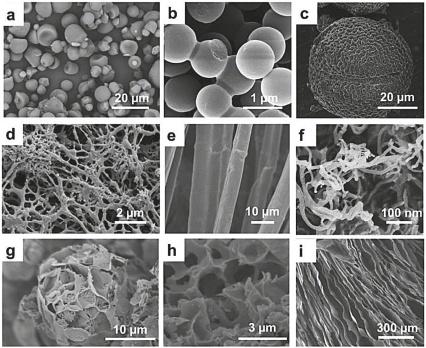
70 ARSTANNERY RESEARCH
FIG. 11 SCANNING ELECTRON MICROSCOPY (SEM) IMAGES OF CARBON MATERIALS OBTAINED FROM VARIOUS BIOMASS PRECURSORS WITH DIFFERENT MORPHOLOGIES AND STRUCTURES. (A) CASSAVA-STARCH-DERIVED CARBON PARTICLES. (B) GLUCOSE-DERIVED HYDROTHERMAL CARBONS. (C) LOTUS POLLEN GRAINS-DERIVED NIO/C COMPOSITE MICROSPHERE. (D) WHEAT-STARCH-DERIVED NANOPOROUS RETICULAR AEROGELS. (E) RAMIE-DERIVED CARBON FIBRES. (F) CELLULOSE-DERIVED NANORIBBONS; (G) D-FRUCTOSE-DERIVED CARBONS WITH FLOWER-LIKE STRUCTURE. (H) CORN-HUSK-DERIVED NANOPOROUS FOAMY AEROGELS. (I) GELATIN-DERIVED PLATE-LIKE CARBON CRYOGEL. REPRODUCED FROM REF. 200 WITH PERMISSION FROM WILEY, COPYRIGHT 2021.
interfacial zone, while heat transfer in normal biochar-added concrete occurs only through the matrix. The absence of thermally insulating material (i.e., biochar) in a reference concrete caused direct heat transfer within the matrix, resulting in increased thermal conductivity. The analysis of the mechanical properties of these materials also evidenced that, as an example, chitosan-derived char-containing composites showed an incipient fracture toughness capability, very appealing for possible structural applications. The possibility of improving the mechanical performance of cement and concrete (in particular the fracture toughness) by means of nanoscopic and/or microscopic fillers is an interesting research field with promising application in the creation of earthquake-resistant and monitoring-enabling cementitious materials.
Among the different types of fillers, carbonaceous ones are certainly widely investigated, due to the possibility of introducing novel advanced properties. Moreover, the introduction into cement of biobased renewable materials and/or natural fibres derived from animal, vegetal and mineral sources attests itself as a real sustainable alternative choice encouraged by the building construction industry. Another possibility of biowaste reuse in the field of ceramic (and glass-based) materials is linked to the mineral content of organic waste that, although it actually varies widely depending on the type of plant, also provides the ability to batch a variety of glass and glass–ceramic compositions, allowing significant flexibility in producing these engineered materials.
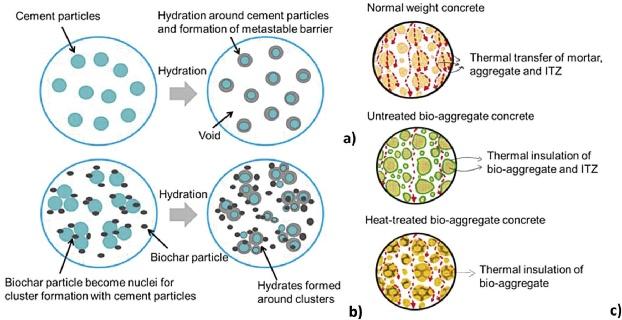

5. Biodegradability issues
Nowadays, with the help of research and technological advancements, waste can be converted into valuable products which will not only give
results in terms of environmental sustainability, but also enhance the economy. The transformation of waste to wealth comprises reuse and recycling of resources, helping to limit the lack in resource supply homogeneity, cost of discarding waste, and environmental load, and resulting in sustainable exploitation of feedstock. Although they are environmentally friendly, the process of production is sometimes complex, reducing its economic feasibility. This problem can be resolved to a great extent by using organic wastes of biological origin as raw material for the production of bioplastics that have different possibilities for biodegradation. Despite earlier hopes, biodegradation is non-trivial, as the rate of biodegradation is highly dependent on a polymer’s chemical structure, an easy destructuring or depolymerizing procedure, stabilizing additives, and surrounding environment. If we limit the biodegradability issue to the converted biowaste and not to the biowaste itself, and assume that biowaste can be considered biodegradable in its nature, all these conditions could be partially fulfilled and biodegradability could be partially achieved. The use of renewable resources and the production of bioplastics are no longer a guarantee for minimal environmental impact, and the production process, as well as their technical performance and their ultimate disposal, have to be carefully considered. Biodegradation can be classified by considering that we can have subsequent organic recovery of the bio-wastes, or the biodegradation process can modify the environment: in both cases, the introduction of toxic elements, for example heavy metals, or halogenated or aromatic hydrocarbons to make the biowaste a plastic, could contaminate the compost. It should be then taken into account that replacing conventional plastics with bioplastics does not necessarily solve the issues of resource depletion and plastic waste accumulation, regardless of their biodegradability. So, in order to come to a truly sustainable plastics economy, the growing
ARSTANNERY 71 RESEARCH
FIG. 12 SCHEMATICS SHOWING HYDRATION PRODUCT FORMATION IN (A) CEMENT-ONLY SYSTEM AND (B) SYSTEM CONTAINING CEMENT AND BIOCHAR. (C) THERMAL INSULATION MECHANISM OF BIO-BASED CONCRETE (ITZ = INTERFACIAL TRANSITION ZONE). REPRODUCED FROM REF. 229 WITH PERMISSION FROM MDPI, COPYRIGHT 2021.
bioplastics production must be paralleled with effective end-of-life strategies for bioplastic waste, such as mechanical, chemical and enzymatic recycling. Instead of complete biodegradation (composting), microorganisms and their hydrolysing enzymes can indeed be used to depolymerise condensation polymers into monomers, instead of CO2, similar to chemical recycling, aiming ideally to reuse the bioplastics and the original biowaste.
6. Environmental impacts
6.1. Life cycle assessment
The potential of organic waste valorisation to obtain functional bionanocomposites for different applications has been highlighted through this review. These materials, besides being renewable and degradable, limit the uncontrolled accumulation of waste in aquatic and land environments. Avoiding landfilling or composting may encompass additional environmental benefits, as notable CO2, CH4, ammonia, nitrogen oxides, etc., emissions are generated during these EoL stages. Although CO2 emissions can be considered as neutral due to their biogenic nature, CH4 has a global warming equivalence 25 times higher than CO2. Additionally, between 130 and 160 kW h are required to compost 1 tonne of organic fraction of municipal solid waste. Altogether, it is estimated that composting encompasses 60 kg CO2 eq. per t, with additional notable acidification potential, photochemical oxidation potential, eutrophication, human toxicity and ozone layer depletion impacts. Nonetheless, waste valorisation approaches should be accompanied by accurate environmental performance metrics to unambiguously determine their environmental benefits. A key factor, for instance, is the transport of the waste into the recycling plant, especially when large volumes and masses are involved. As a representative example in which bulky and heavy waste is treated, Di Maria et al. analyzed the environmental impacts of the recycling of construction and demolition waste, and concluded that transport was the main contributor to the environmental burdens (accounting for more than 50%). In this framework, the life cycle assessment (LCA) methodology provides a means for the evaluation of the environmental impacts of a product or service. LCA studies can be performed focusing on the whole life cycle, from the raw material extraction to its EoL (cradle-to-cradle), or can solely focus on the organic waste valorisation/conversion process (cradle-to-gate). While the former accounts for the impacts throughout the entire life cycle, the latter provides information on the valorisation process itself, so more accurate decisions on the environmentally preferred process can be made. One of the difficulties when performing the LCA of organic waste valorisation is the multi-output character. As the impacts need to be standardized for a given material (functional unit, FU), this process becomes difficult when different products are obtained. The non-mature technology for waste valorisation, the data scarcity and the often lab-scale studies are other bottlenecks for the accurate determination of environmental impacts. LCA allows determination of not only the equivalent CO2 emissions but also additional relevant impact categories including fossil resource scarcity, freshwater and terrestrial ecotoxicity/eutrophication, human toxicity, land use, or water consumption. However, for the sake of comparison most works mainly focus their efforts on the determination of global warming (measured in CO2 emission equivalents) and cumulative energy demand (CED, accounting for the direct and indirect energy use including the energy consumed during the extraction/manufacturing/disposal of the raw and auxiliary materials). In this section we summarize the recent reports in the field. To enable cross-comparison, mass-allocation is used, with 1 kg of material as a FU (when not directly available, our own extrapolations were made). Results are summarized in Fig. 13.
6.1.1. Polymeric matrices
Partial organic conversion to polymeric matrices (or their precursors) in biorefineries can result environmentally preferred outcomes than solely generating bio-power via combustion, which is the current biorefinery paradigm in many cases. In this hypothesis, Corona et al. showed that the fabrication of bio-based adipic acid (monomer for nylon or polyurethane) from lignin presents a global warming value of 4.87 kg CO2 eq. per kg, representing a 62–78% improvement over the conventional petrochemical production pathway. This waste-based
production pathway adheres to green chemistry principles as it also mitigates all N2O emissions. Regarding lignin valorisation, global warming values of 0.5 kg CO2 eq. per kg and 1.4–2.1 kg CO2 eq. per kg have been reported for the production of Kraft lignin, or organosolv lignin extraction from bark,247 respectively. Those results are comparable or even better than those derived from the industrial fabrication of commodity plastics, where values of 1.58–1.60 kg CO2 eq. per kg, or 5.5 kg CO2 eq. per kg, have been obtained for polypropylene and polyethylene terephthalate, respectively.
The valorisation of marine and terrestrial animal waste resources into materials offers notable environmental benefits. Although not directly applied to obtaining polymeric materials, Lopes et al. studied the environmental impacts associated with the valorisation of fish by-products (fishmeal and oil production for animal feed) against different waste management scenarios. The valorisation scenario provided a global warming value of 5.1 kg CO2 eq. per tonne in comparison with the 256.8 kg CO2 eq. per tonne of the composting scenario. Similarly, García-Santiago et al. recently calculated the gate-to-gate impacts of fish biorefinery, and concluded that fish valorisation into collagen (and other by-products including fishmeal, fish oil and fish protein hydrolysates) could be carried out at 10.29 kg CO2 eq. per kg with a total electricity consumption of 276.8 kW h, which was more eco-efficient than the established process of fishmeal production. Regarding waste-derived polymers, Leceta et al. studied the impacts associated with chitosan-films considering the material extraction, film manufacture, and end of life (FU: 1 m2 of film). A 11% increase in global warming value was obtained (over polypropylene), which was accompanied by an increase in respiratory inorganics and minerals (due to the HCl for raw material extraction and acetic acid for film manufacture) and an increase of over one order of magnitude in land use (due to glycerine). However, improvements in carcinogens and fossil fuel categories were achieved. The same group also evaluated the environmental impacts of bio-based films based on soy protein from the soy oil industry, chitosan from the skeleton of crustaceans, and agar from marine seaweeds (FU: 1 m2 of film). Obtained total global warming values were similar to those of polypropylene (1.22–1.37 × 10−6vs. 1.18 × 10−6 of polypropylene), mostly driven by the manufacturing stage which scored an order of magnitude higher for waste-derived films. However, raw material extraction and EoL stages were markedly improved, underlying the potential for waste-derived materials to lower environmental impacts if mature processing technologies are provided. A possible strategy to further improve the environmental profile of chitin and chitosan from marine waste would be the optimization of the raw material extraction; currently 1 kg chitin requires 33 kg of shrimp shells, 8 kg HCl 32%, 1.3 kg NaOH, 1.3 kW h electricity and 167 L freshwater; and 1 kg of chitosan requires 1.4 kg chitin, 5.18 kg NaOH, 1.06 kW h, 31 MJ wood fuel and 250 L water.
6.1.2. (Nano)particles
Waste-derived organic fibres are generally more sustainable in comparison with non-renewable-based fibres. In this sense, Broeren et al. concluded that sisal fibre production has a 75–98% lower greenhouse gas emission and requires 85–95% less non-renewable energy use in comparison with glass fibre production. Additionally, sisal fibre valorisation avoids its disposal in ponds, limiting its eutrophication potential, which is recognized as the main environmental hotspot of these fibers. However, the environmental burdens of nanoparticle extraction are generally notably larger due to their often energy-intensity, the poor atom efficiency and the relatively hazardous chemical syntheses using inorganic acids. As a matter of fact, a global warming value in the range of 36.6 to 199 kg CO2 eq. per kg (depending on the synthetic conditions) has been reported for lignin nanoparticles suspended in water extracted from wheat straw. Sillero et al. valorised almond shells into oligosaccharides, lignin, glucose and CNCs and demonstrated that the organosolv delignification showed larger impacts than the alkaline procedure, the use of ethanol being one of the main drivers. The impacts can be reduced by replacing ethanol with methanol (although there may be serious safety issues here), while acetic acid, formic acid and glycerol provide even worse metrics.
Li et al. studied the environmental impacts of CNF fabrication in 2013 and reported global warming values ranging from 190 to 1160 kg CO2 eq. per kg. The impacts were dominated by fossil fuels for energy (CED of 3470 to 17 610 MJ). The use of the high-pressure ho-
72 ARSTANNERY RESEARCH
mogenizer reduced the CO2 emissions by half in comparison with the mechanical disintegration process by sonication. Similarly, the use of TEMPO-oxidation limits the CO2 emissions by half over chemical modification involving chloroacetic acid etherification. The impacts of CNF production via enzymatic pretreatment, carboxymethylation pretreatment, and direct production with no pretreatment have been also compared, with CED values of 87, 180 and 240 MJ kg−1 and global warming values of 0.79, 99 and 1.2 CO2 eq. per kg, respectively. Carboxymethylation required ~30 kg kg−1 CNF of the reagents (ethanol, isopropanol, and methanol). Very recently, Turk et al. used thermo-groundwood from a local paper manufacturer to synthesize TEMPO-oxidized CNFs, obtaining a global warming value of 800 kg CO2 eq. per kg. The primary energy consumption of 19 000 MJ kg−1 could be lowered to 10 100 MJ kg−1 if lignin was considered as a co-product (~100, 75 and ~200 MJ kg−1 for polypropylene, titanium and aluminium, respectively).
The purification process contributed up to 95% of the whole environmental footprint. In another effort to use organic waste as the source material, Piccinno et al. obtained CNFs from carrot-waste using an aqueous enzymatic treatment. Due to the 87 wt% water content of carrots, 15 kg of carrot waste was required to obtain 150 g of CNF. Interestingly, the environmental impacts of CNF production at industrial scale via the enzymatic approach are predicted to be reduced by a factor of 6.5 in comparison with lab-scale production (50 kg vs. 10 g). CNCs are another representative form of bio-based nanoparticles. In this sense, Katakojwala reported that with a global warming value of 146.9 to 261.9 kg CO2 eq. per kg, electricity accounted up to 141.1 and 254.1 CO2 eq. per kg during the production of CNCs, confirming that chemical inputs (HNO3, H2SO4, NaOH, NaClO, CH3COOH and H2O2) had a negligible contribution to the global warming value.264 However, the wastewater generated had a strong impact on aquatic toxicity as estimations account that 2.19 × 105 to 3.42 × 107 L kg−1 CNC are required. In another study, global warming values of 61 kg CO2 eq. per kg were reported (CED of 2280 MJ kg−1), which remain well below the 112 CO2 eq. per kg for the CNCs extracted from cotton and especially the 1086 CO2 eq. per kg for the CNCs extracted from unripe coconuts (CNCs obtained in both cases via a
H2SO4-induced acid hydrolysis; Brazilian energy mix; CED of 1800 and 15 944 MJ kg−1, respectively). Starch nanocrystals encompass notably lower impacts as these materials, when produced via hydrolysis with H2SO4, present improved values of 7.9–13 kg CO2 eq. per kg. However, marked acidification impacts were found. In spite of the relatively large CO2 emissions during organic waste-derived nanoparticle production in comparison with organic waste-derived polymeric matrices, bioparticles are environmentally preferred over other nanoparticles such as carbonaceous nanoparticles, whose synthesis involves a large CED (1 to 900 GJ per 1 kg of carbon nanofibres, carbon nanotubes or fullerene). In this sense, global warming values of 1060–2360 kg CO2 eq. per kg for reduced graphene oxide or 217–501 kg CO2 eq. per kg for graphene oxide obtained via the Hummers and Marcano methods have been reported. However, it should be considered that other inorganic nanoparticles with long and well-established fabrication methods such as TiO2 offer lower CO2 emissions, as highlighted by the 12 to 86 kg CO2 eq. per kg obtained using titanium oxysulphate and titanium bis(ammonium-lactato)dihydroxide precursors, respectively (CED of 149 and 1952 MJ kg−1).
Because of their relatively high C-content, organic waste is an increasingly popular precursor for the preparation of carbon (nano) materials. Activated carbon from eucalyptus wastes using slow pyrolysis with ZnCl2 and H3PO4 activation showed a global warming value of 8.58 and 5.57 CO2 eq. per kg, respectively, which remains below the 11.1 eq. per kg reported for the activated carbon obtained from olive-waste cake.
Marine aquatic ecotoxicity and terrestrial acidification were major environmental loads of the system due to the activating reagents used and the fossil fuel. Interestingly, a CED of 118.6 to 153.8 MJ kg−1 was obtained (11.8–16.2% renewable share), which was 36% lower than that of the commercial activated carbon. A calcination approach can also be taken to valorise eggshells and convert their CaCO3 phase into CaO (with potential construction applications). A value of 31.8 kg CO2 eq. per kg was obtained, with additional remarkable contributions in marine ecotoxicity, freshwater ecotoxicity, freshwater eutrophication and human toxicity also observed. Due to the energy-intensive character of the calcination process,
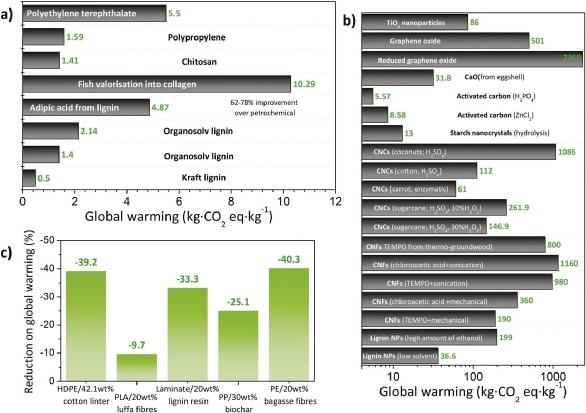
ARSTANNERY 73 RESEARCH
FIG. 13 SUMMARY OF THE GLOBAL WARMING VALUES OBTAINED FOR DIFFERENT ORGANIC WASTE VALORISATION PROCESSES CLASSIFIED INTO: (A) POLYMERIC MATRICES; (B) BIONANOPARTICLES AND (C) BIOCOMPOSITES. NOTE THAT WHILE PLOTS A AND B REPORT ABSOLUTE GLOBAL WARMING VALUES, PANEL C SHOWS THE REDUCTION ON THE GLOBAL WARMING IN COMPARISON WITH THE NEAT POLYMER OR A COMPOSITE HAVING THE SAME CONCENTRATION OF NON-BIOBASED PARTICLES.
the avoided raw CaO use of landfill accounted solely for 0.3–4.7% of the environmental benefits.
6.1.3. (Nano)composites
The environmental impacts of composites derived from organic waste show generally improved environmental metrics. A 42.1 wt% cotton linter biowaste incorporation reduces the 5.1 kg CO2 eq. per kg of virgin high-density polyethylene to 3.1 kg CO2 eq. per kg. In comparison with neat PLA bottles, a 9.7% reduction on CO2 emissions could be obtained when 20 wt% luffa fibres were incorporated (it also outperformed better in 7 of the 8 analyzed impact categories). Similarly, lignin by-products from industrial wood are efficient at substituting phenolic resins in beech fibre laminates and increasing the bio-based content in composite materials. Hildebrandt et al. showed that sawmill by-products can potentially reduce the global warming value of 3.6 kg CO2 eq. per m2 (composite 70/30 wt% fibre/resin) to 2.4 kg CO2 eq. per m2 (for the composite with 20 wt% lignin-derived phenolic resin). Additional environmental improvements were observed in nine of the eleven analyzed categories. 20 wt% chicken feathers in a 80 wt% PLA matrix solely account for the 0.02% of the total cradleto-gate global warming. In the same direction, the substitution of talc by Miscanthus biochar (30 wt%) in a polypropylene composite reduces the global warming value by 25.1%.
Larger impacts have been also reported for specific categories. For example, lower cradle-to-gate impacts in global warming, ozone formation, terrestrial acidification and fossil resource scarcity are observed after the incorporation of bagasse fibres into sugarcane-polyethylene (2.01 kg CO2 eq. per kg for fossil polyethylene, 1.38 kg CO2 eq. per kg for bio-polyethylene and 1.20 CO2 eq. per kg for the biocomposite). However, ozone formation, freshwater eutrophication, and terrestrial acidification are increased. Likewise, with 1.7 kg CO2 eq. per 1 metric Sabin (sound absorption unit), chicken feather nonwoven fabrics for acoustic applications have lower global warming values than other acoustic insulation materials such as rice husk, cork scraps or end-life granulated tires. However, ozone layer depletion, ecotoxicity and eutrophication impacts are larger than those of stone wool. Finally, it should be considered that the introduction of organic waste nanoparticles into petroleum-based polymers to replace other particles such as glass fibres does not directly result in lower CO2 emissions. With cradle-to-gate global warming of 4.6 kg CO2 eq. for PLA, 4.9 kg CO2 eq. for glass fibre/polypropylene and 8.6 kg CO2 eq. for epoxy/CNF (FU based on tensile stiffness), it is necessary to expand to the whole life-cycle to obtain the environmental benefits (cradle-tograve GWP of 26.9 kg CO2 eq. for PLA, 18.9 kg CO2 eq. for glass fibre/ polypropylene and 19.9 kg CO2 eq. for epoxy/CNF). On the other side, valorised olive pomace incorporated into polypropylene or polyethylene (for building purposes) yields global warming values of 20.25 to 20.52 CO2 eq. per m2 of lath, avoiding the 141.5 kg CO2 eq. that the composting of the same olive pomace quantity would liberate. These results emphasize the need to consider the use phase and the end-of-life of nanocellulose-reinforced epoxy composites to exploit the “green credentials” of biowaste-derived particles.
6.1.4. Future improvement potential
The following changes are envisaged to improve the environmental performance of organic waste valorisation. First, the source material can be modelled as a free input with no environmental impacts, as it originates from waste. However, special attention should be paid to the waste’s composition. For example, while the whole carrot has a cellulose content below 1.5 wt%, the cellulosic content of carrot pomace is as high as 24 wt%. Therefore, 20 times less reagents would be needed if using pomace (with its associated material and energy savings). Electricity use is a main driver in the LCA results. This is explained by the fact that large amounts of water and relatively low amounts of hazardous chemicals are used. Therefore, scaling-up the process should notably reduce the CO2 numbers. A reduction of the reaction times and temperatures would also be beneficial for reduction of the energy demand.
To ensure a reagent circularity, solvent recovery through distillation is also encouraged. Valorisation approaches relying on enzymatic processes or green solvents such as ionic liquids should be investigated to avoid the need for toxic reagents. The non-technically mature technology also makes the full exploitation of waste-derived mate-
rials difficult. For example, nanolignin extraction via the birch-alkali-homogenization pathway presents a global warming value of 102.8 kg CO2 eq. per kg, a human toxicity potential of 935.5 m3 kg−1 and a water depletion of 0.28 m3 kg−1, while a less mature empty fruit bunch-organosolv homogenization pathway results in increased values of 1052.1, 1158.4 and 0.61, respectively. Finally, the concomitant extraction of other materials must be explored as these may reduce the computed environmental impacts after adequate input and output allocation. For example, plants are composed of cellulose, lignin and hemicellulose, so it may be possible to extract different materials after a single process.
Generally, organic waste valorisation has the potential to reduce non-renewable primary material use, occupied landfill area and the carbon footprint over other EoL scenarios such as incineration or landfill. Additionally, circular biocomposites can replace less sustainable materials, contributing to more responsible consumption and production through resource efficiency. For instance, up to 23 kg CO2 eq. per kg could be saved by replacing cotton with lignin. Overall, the implementation of green chemistry principles to (nano)particle synthesis from organic waste is encouraged in the near future. Apart from guiding researchers and industry towards the sustainable valorisation of waste by identifying the driving environmental factors, these LCA results can also empower policymakers to adopt efficient measures to boost the implementation of sustainable policies.
6.2. Toxicity
Even if raw biowaste is unanimously considered not toxic, chemical additives used to convert it into matrices and nanoparticles, such sorbed environmental pollutants during application, could strongly modify this characteristic. Nevertheless, biopolymer toxicity is an emerging issue, since adverse effects of biodegradation products must be taken into account. It has been considered that, actually, bio-based/biodegradable materials and conventional plastics have similar toxicity characteristics: the results indicated that the majority (67%) of bioplastics and plant-based products contain toxic chemicals as well as a large number and diversity of compounds (>1000 chemical features each in 80% of the samples). In order to develop bio-based/biodegradable materials that do indeed outperform conventional plastics, sustainability and chemical safety aspects must be addressed alike. One way to promote this is to integrate, as an example, chemical toxicity into the life cycle assessment of materials, or by using green chemistry to “design out” toxicity during the development of new bio-based and biodegradable materials. To this aim, it needs to be considered that although the main components in biomass wastes are biocompatible and nontoxic, there are still certain amounts of “impurities” or contaminants. Moreover, various nanoparticles are usually incorporated to improve the performance of biowaste-derived composite materials, which also cause some worries. Therefore, it is necessary to study case-by-case the outcome of these minorities in materials and their potential safety issues.
A negative aspect is based on the incorporation of toxic elements such as heavy metals obtained from natural sources in the development of new polymeric system. As an example, Astolfi and co-authors proposed the realization of polyhydroxyalkanoate (PHA) with organic waste as the feedstock and analyzed the polluting elements. The potential impurities that could transfer from bio-waste to a PHA include inorganic elements such as heavy metals, as represented in the schematic illustration shown in Fig. 14. The total content of certain elements in PHA ranged between 0.0001 (Be) and 49 500 mg kg−1 (Na). The amounts of some alkaline (Na and K) and alkaline earth (Ca and Mg) metals were highest, which are of little environmental concern. These authors observed that the number of heavy metals in PHA realized from fruit waste or crops were inferior to those in the PHA realized from the mixture of sludge from wastewater treatment and the organic fraction of municipal waste. The PHA values obtained by extraction from wet biomass (acid storage) with aqueous phase extraction reagents and commercial PHA were below the migration limits required by the current regulation on plastics and articles intended to come into contact with food under refrigerated and frozen conditions. Another opportunity to limit the toxicity of biowaste is conversion, via pyrolysis into biochar, that could effectively deactivate toxic heavy metals: pyrolysed biowastes could be a clean and affordable input to
74 ARSTANNERY RESEARCH
improve soil and recycle nutrients in agriculture, delivering considerable economic and environmental benefits. Yet, how pyrolysed biowastes may affect soil food webs and biological diversity conservation as well as ecosystem processes should be further explored in more field studies.
7. Future outlook and conclusions
Produced annually on a remarkable scale of billions of kilos, biowastes should be redesigned considering circular economy principles (Fig. 15). Accordingly, sustainable growth should be ideally implemented through a closed loop for recycling and transformation, without damaging and/or diminishing the natural sources. Biowastes can be fundamentally transformed, via physical, chemical or biological methods into wide-ranging examples of end-use products and materials. However, the highly heterogeneous nature of biowastes makes the identification of adequate valorisation challenging. Accordingly, this review focuses on the conversion methods of biowaste to derived nanomaterials, namely biopolymers and nanocomposites, starting from a variety of largely available sources such as collagen, chitin, chitosan, hydroxyapatites, cellulose, lignin, and other C-based feedstocks for metal, metal oxide nanoparticles, biopolymeric and nanocarbon structures. Outlooks for the applications of these materials range from drug and agricultural delivery, to environmental remediation, catalysis, energy storage, etc.; nonetheless, many such studies can be still considered to be at an early stage and require an in-depth analysis of both technical and socio-ecological aspects, including energy balance and costs, environmental emissions, toxicity and biodegradability issues. Upcoming research is undeniably required to promote everyday applications, passing through proper quality control to determine compositions and molecular structure of targeted natural polymers and assure constant final properties of the converted materials. Ongoing research that looks at valorising bio-waste as bio-products (matrices and nanofillers) still has many challenges to be tackled to reach scaled production and commercialization, so further technical development is needed for their use at industrial level.12 Several factors hamper their adoption, which includes reproducibility of the properties and complexity/varying nature of bio-waste that demand pricy separation processes and purification. Accordingly, high costs to bring the products to higher scale are expected. The limited output volume of converted biomass is also another limiting factor to commercialization, since the required controlled compositions of biomass wastes to ensure the desirable properties of the final products certainly hinder growth to the market.


Looking at the functionality of converted biowastes, concise studies are essential to first tune the properties, design and control structures, so early commercial success can be reached if technological requirements for higher volume are easily overcome. Help in reaching this objective is offered, for example, at European level, by the Bio Base
Europe Pilot Plant, that successfully conducted over 450 bilateral (private) projects with more than 150 small, medium and large-sized companies in more than 50 public project consortia, from 2013 to 2020, to finalize the construction of process lines and facilities and help in the market positioning of different processed biowastes new products on the market.
To the best of the authors’ knowledge, chitosan biowastes surpassed these barriers and reached commercialization, with shrimp shell source chitosan occupying almost 80% of the total chitosan market (fungal-based chitosan products are still limited in market). However, the product is intended to be used for food/beverage and tissue engineering applications, while no indications for use and filler or matrix could be found. Cellulose and lignin conversion to biopolymers also reached Technology readiness levels (TRLs) higher than 5, and carrageenans in hydrogels also represent an interesting alternative to an integral valorisation of disposals, currently only used as fertilizing purposes. A variety of sustainable sources of collagen and keratin and the beneficial multiform application of these two proteins have been also extensively reviewed. In all the cited cases, we should, however, keep in mind that production is economically viable and cost-competitive in the market only if, in parallel, and regardless of the easy scaling of the procedures and the yield in marketable products, it represents an industrial activity with no considerable environmental impacts.
FIG. 14 BOUNDARIES (INPUTS AND OUTPUTS) OF THE SYSTEM UNDER THE CIRCULAR ECONOMY FRAMEWORK IN POLYMERIC PROCESSES. SCHEMATIC REPRESENTATION OF POLYHYDROXYALKANOATE PRODUCTION. REPRODUCED FROM REF. 289 WITH PERMISSION FROM ELSEVIER, COPYRIGHT 2020.
ARSTANNERY 75 RESEARCH
FIG. 15 SCHEMATIC REPRESENTATION HIGHLIGHTING THE LIFE CYCLE ASPECTS OF BIOWASTE VALORIZATION AND THE FUTURE OPPORTUNITIES CHALLENGES ENVISIONED TOWARD PRACTICAL IMPLEMENTATION.
Design inspirations from the past, present and future
Many of the top shoe and bag designers worldwide use Arsutoria Studio to create their new collections and to find new market opportunities.
We have a simple mission: help you turn your ideas into products
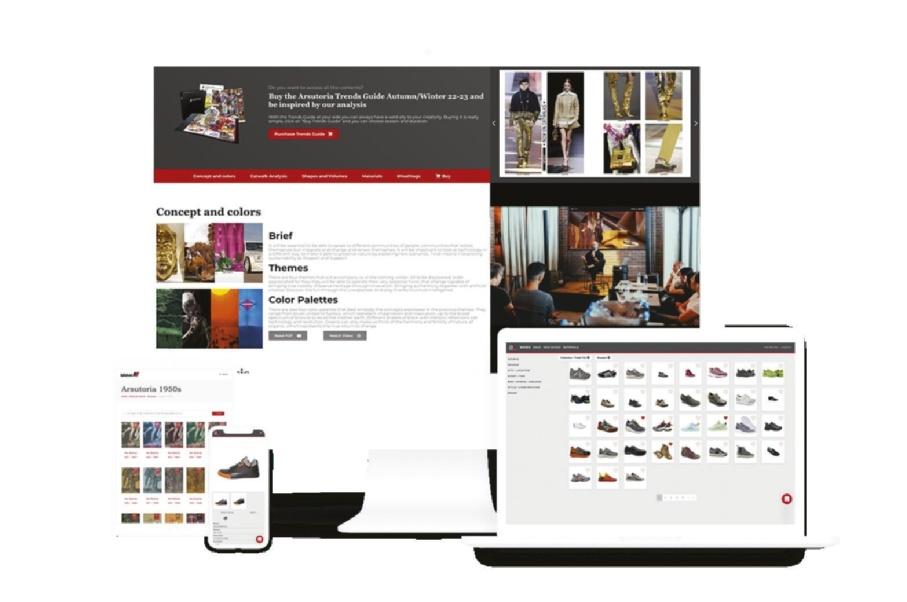
arsutoria
Arsutoria provides you complete information on footwear, leather goods and accessories industries, reporting the latest shoe and handbags trends, focusing on special topics such as sports, sustainability or technology. Arsutoria editorial plan now includes a complete Trends guide, reports for tanning industries, safety shoes and much more.

arstrends.com
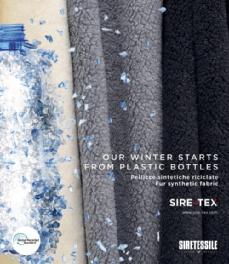
Online database of photos of shoes, bags and materials, categorized by style, season, events and much more. Hundreds of new pictures uploaded every week from fairs collection, catwalks, retail windows and e-commerce.
historical archive
Arsutoria (shoes) and Arpel (bags) historical archives available online. Arsutoria magazines from 1947 to 1980 and Arpel magazines from 1965 to 1980

ISSN 2531-9620 Send an e-mail to: arsutoria@edizioniaf.com to receive link and read the next issues of ARSUTORIA online for free 465 SS2023 TRENDS GUIDE CONCEPT, INSPIRATIONS, THEMES, COLOURS SS2023 VISION LAB NEXT MATERIALS FOR THE NEXT COLLECTIONS FOCUS SUSTAINABILITY B-CORP, NEW MATERIALS SUSTINABLE VISIONS AND FIGURES SAFETY SHOES INNOVATION, TECHNOLOGIES, NEW COLLECTIONS
MAGAZINES & BOOKS
ARSUTORIA
10 Issues
Arsutoria offers the most complete information for footwear & leather manufacturers and designers: collections, materials and technology.
FOTO
SHOE 30
6 Issues
An overview on medium-end footwear market: news, articles and pictures. Foto Shoe 30 is a must have for wholesalers and mass retailers..
arsutoriamagazine.com
ARSUTORIA ONLY SHOES / ONLY BAGS
Hard cover book of over 200 pages of shoes and bags presented for each season on fair sand catwalks.



fotoshoemagazine.com
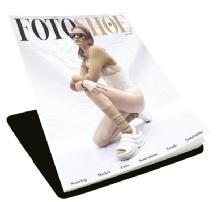

FOOTWEAR DICTIONARY
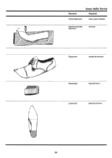
• 500 illustrated pages
• 1000 terms in five different languages (IT-EN-ES-DE-FR)
• Only Printed edition

subscriptions@edizioniaf.com ph. +39 02 3191 2331 fax +39 02 3361 1619
www.edizioniaf.com
subscriptions@edizioniaf.com
ph. +39 02 3191 2331
fax +39 02 3361 1619
ORDER FORM
Prices include FedEx shipment
CREDIT CARD
EXP. DATE / CVV/CVC
CARDHOLDER NAME
SIGNATURE ____________________________________
BANK TRANSFER
IBAN: IT 49 Z 01030 01604 000002285956
Monte Paschi Siena Swift: PASCITM1MI4
* Prices are subject to VAT: only for Italy and private UE clients
** Available from January 2022
CONTACT EMAIL
VAT NBR COUNTRY +_____/______________________________
COMPANY ADDRESS CITY ZIP
PHONE
_ _ _ __ _ _ __ _ _ __ _ _ _
MAGAZINES & BOOKS ISSUES ITALY EUROPE REST OF THE WORLD ARSUTORIA - magazine 1 YEAR 10 250 € 450 € FOTOSHOE30 - magazine 1 YEAR 6 150 € 250 € FOOTWEAR TECHNICAL DICTIONARY* - book 1 book 1 120 € ARSUTORIA ONLY SHOES - book 1 YEAR 1 2 250 € 450 € ARPEL ONLY BAGS - book 1 YEAR 1 250 € ARSUTORIA STUDIO** USERS DIGITAL ITALY EUROPE REST OF THE WORLD SILVER (1 YEAR) Arsutoria magazine trends webinars 3 200 € 250 € 450 € GOLD (1 YEAR) SILVER +arstrends, photos of collections, catwalks, retail 5 SHOES BAGS FULL 450 € 350 € 500 € 500 € 400 € 550 € 700 € 600 € 750 € PLATINUM (1 YEAR) GOLD +historical archive 10 SHOES BAGS FULL 950 € 750 € 1200 € 1000 € 800 € 1250 € 1200 € 1000 € 1450 € PAPER
APLF LTD. tel. +852 282.762.11 info@aplf.com
www.aplf.com
www.aclechina.com
www.fashionaccess.aplf.com
www.leatherfair.aplf.com
pag. 7-17
AS GREEN TECHNOLOGY s.r.l. Unipersonale tel. +39 0571.467.253 info@asgreentechnology.it www.asgreentechnology.it
pag. 47
ASSOMAC SERVIZI s.r.l. tel. +39 0381.788.83 info@assomac.it
www.assomac.it
pag. 3
BARNINI s.r.l. tel. +39 0571.487.001 barnini@barnini.it www.barnini.it
pag. IV cover
COMELZ S.p.A. tel. +39 0381.424.01 info@comelz.com www.comelz.com
pag. 82
DERMACOLOR s.r.l. tel. +39 0571.471.313 info@dermacolor.it www.dermacolor.it
pag. 9
DERMAKIM s.r.l. tel. +39 0332.287.623 info@dermakim.it www.dermakim.it
pag. 5
ERRETRE S.p.A. tel. +39 0444.478.312
info@erretre.com
www.erretre.com
pag. 41-81
ESCOMAR ITALIA s.r.l. tel. +39 0444.451.313
info@escomar.it
www.escomar.it
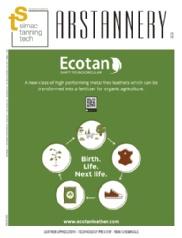
pag. 49
FGL INTERNATIONAL S.p.A. tel. +39 0571.478.851 info@fglinternational.com www.fglinternational.com
pag. 11
GEMATA S.p.A. tel. +39 0445.492.711 info@gemata.com www.gemata.com
pag. 19
I-TECH s.r.l. tel. +39 0536.905.168 info@itech-italia.com www.itech-italia.com
pag. 53
KLF TECNOKIMICA s.r.l. tel. +39 0571.471.090 info@klftecnokimica.it www.klftecnokimica.it
pag. III cover
MOSCONI S.p.A. tel. +39 045.820.04.90 sales@mosconispa.it www.mosconispa.it
pag. 51
S.C. COSTRUZIONI MECCANICHE s.r.l. tel. +39 0571.931.588 info@sctech.it www.sctech.it
pag. 55
SILVACHIMICA s.r.l. tel. +39 0174.220.254 tan@silvateam.com www.silvateam.com
pag. Cover
SYN-BIOS S.p.A. tel. +39 0444.441.144 synbios@synbios.it www.synbios.it pag. 20
TODESCO s.r.l. tel. +39 0444.340.639 info@todescosrl.com www.todescosrl.com pag. II cover
80 CONTACTS June 2023

















 DEFEO AND HIS TEAM IN FRONT OF THE SCAR SPECTROMETER USED TO MEASURE THE BIO CARBON CONTENT OF MATERIALS
DEFEO E IL SUO GRUPPO DI LAVORO DAVANTI ALLO SPETTROMETRO SCAR UTILIZZATO PER MISURARE IL CONTENUTO
DI CARBONIO BIO DEI MATERIALI
DEFEO AND HIS TEAM IN FRONT OF THE SCAR SPECTROMETER USED TO MEASURE THE BIO CARBON CONTENT OF MATERIALS
DEFEO E IL SUO GRUPPO DI LAVORO DAVANTI ALLO SPETTROMETRO SCAR UTILIZZATO PER MISURARE IL CONTENUTO
DI CARBONIO BIO DEI MATERIALI






























 THE GEMATA BOOTH AT THE INDIAN IILF TRADE FAIR IN CHENNAI LO STAND GEMATA ALLA FIERA INDIANA IILF DI CHENNAI
THE GEMATA BOOTH AT THE INDIAN IILF TRADE FAIR IN CHENNAI LO STAND GEMATA ALLA FIERA INDIANA IILF DI CHENNAI









































 FELTRE EMMEZETA TANMAC
CLAUDIO ROSATI, BRUNO MUCCIGNAT - LMF BIOKIMICA
FILIPPO SANI - AS GREEN TECHNOLOGY
BAUCE TRI.MA
PAOLO MATELLI - ALPE
STEFANO MASTROTTO - SPRAYTECH
GIANMARIO CAZZOLA - C.G.R.D.
ALESSIO MAFFEI, LORENO FRESCHI - BARNINI MOSTARDINI
BERGI
ROBERTO CALATTINI - S.C. COSTRUZIONI MECCANICHE
BRUNO & MARCO BERNARDINI - CHEMIPAL
MARCO FOGLI - THEMA
RALPH ARBEID, PETER MASTEVC - HUENI ITALIA
WILLIAM PELLICCIARI, ANTONELLO NAPPI - NAPPI GROUP, RIZZI, FLAMAR
OPENING CEREMONY
GUIDO FRIZZARIN - ELPA SERVICE
MAURIZIO MOLON - GER ELETTRONICA GIULIO GALIOTTO - ERRETRE, F.LLI CARLESSI
MAURO PELLIZZARI - GEMATA
FELTRE EMMEZETA TANMAC
CLAUDIO ROSATI, BRUNO MUCCIGNAT - LMF BIOKIMICA
FILIPPO SANI - AS GREEN TECHNOLOGY
BAUCE TRI.MA
PAOLO MATELLI - ALPE
STEFANO MASTROTTO - SPRAYTECH
GIANMARIO CAZZOLA - C.G.R.D.
ALESSIO MAFFEI, LORENO FRESCHI - BARNINI MOSTARDINI
BERGI
ROBERTO CALATTINI - S.C. COSTRUZIONI MECCANICHE
BRUNO & MARCO BERNARDINI - CHEMIPAL
MARCO FOGLI - THEMA
RALPH ARBEID, PETER MASTEVC - HUENI ITALIA
WILLIAM PELLICCIARI, ANTONELLO NAPPI - NAPPI GROUP, RIZZI, FLAMAR
OPENING CEREMONY
GUIDO FRIZZARIN - ELPA SERVICE
MAURIZIO MOLON - GER ELETTRONICA GIULIO GALIOTTO - ERRETRE, F.LLI CARLESSI
MAURO PELLIZZARI - GEMATA

















 GABRIELLA BOCCA - LAMEBO
MARCO AGOSTINI - MEC MAN
NICOLA PIACENTINI - ESCOMAR
OLIMPIO STORTI - PAJUSCO TECNOLOGIE
LEONARDO LEONARDI, ANDREA FASTELLI - TECNOCHIMICA
ALBERTO CAMPINOTI - G.B.L.
VALENTINA PALAGINI, ANDREA MEUCCI - DERMACOLOR
FABIO BRAGGION - CORICHEM
DIEGO CISCO - GSC GROUP
ANTONELLO MARCHINO - EVOLUTION TECH
MARCO FREDIANI - KLF TECNOKIMICA
SERGIO GUERRAZZI - GFP
NICOLO’ PIAMPIANI - CHIMICA ITALIANA
PATRIZIA CAIMI - CAIMI
SN ITALIA CHEMICALS
SERGIO DANI - ITALPROGETTI PROKIMICAL INTERNATIONAL
GABRIELLA BOCCA - LAMEBO
MARCO AGOSTINI - MEC MAN
NICOLA PIACENTINI - ESCOMAR
OLIMPIO STORTI - PAJUSCO TECNOLOGIE
LEONARDO LEONARDI, ANDREA FASTELLI - TECNOCHIMICA
ALBERTO CAMPINOTI - G.B.L.
VALENTINA PALAGINI, ANDREA MEUCCI - DERMACOLOR
FABIO BRAGGION - CORICHEM
DIEGO CISCO - GSC GROUP
ANTONELLO MARCHINO - EVOLUTION TECH
MARCO FREDIANI - KLF TECNOKIMICA
SERGIO GUERRAZZI - GFP
NICOLO’ PIAMPIANI - CHIMICA ITALIANA
PATRIZIA CAIMI - CAIMI
SN ITALIA CHEMICALS
SERGIO DANI - ITALPROGETTI PROKIMICAL INTERNATIONAL






 ROBERTO CAVALLI
TUSCANY CHAISE LONGUE BY MOLTENI
CLAN SOFA BY LIVING DIVANI
DE SEDE
ROBERTO CAVALLI
TUSCANY CHAISE LONGUE BY MOLTENI
CLAN SOFA BY LIVING DIVANI
DE SEDE




 BAIA BY FLOU
LOUNGE CHAIR KLISMOS BY KNOLL
BAIA BY FLOU
LOUNGE CHAIR KLISMOS BY KNOLL


























